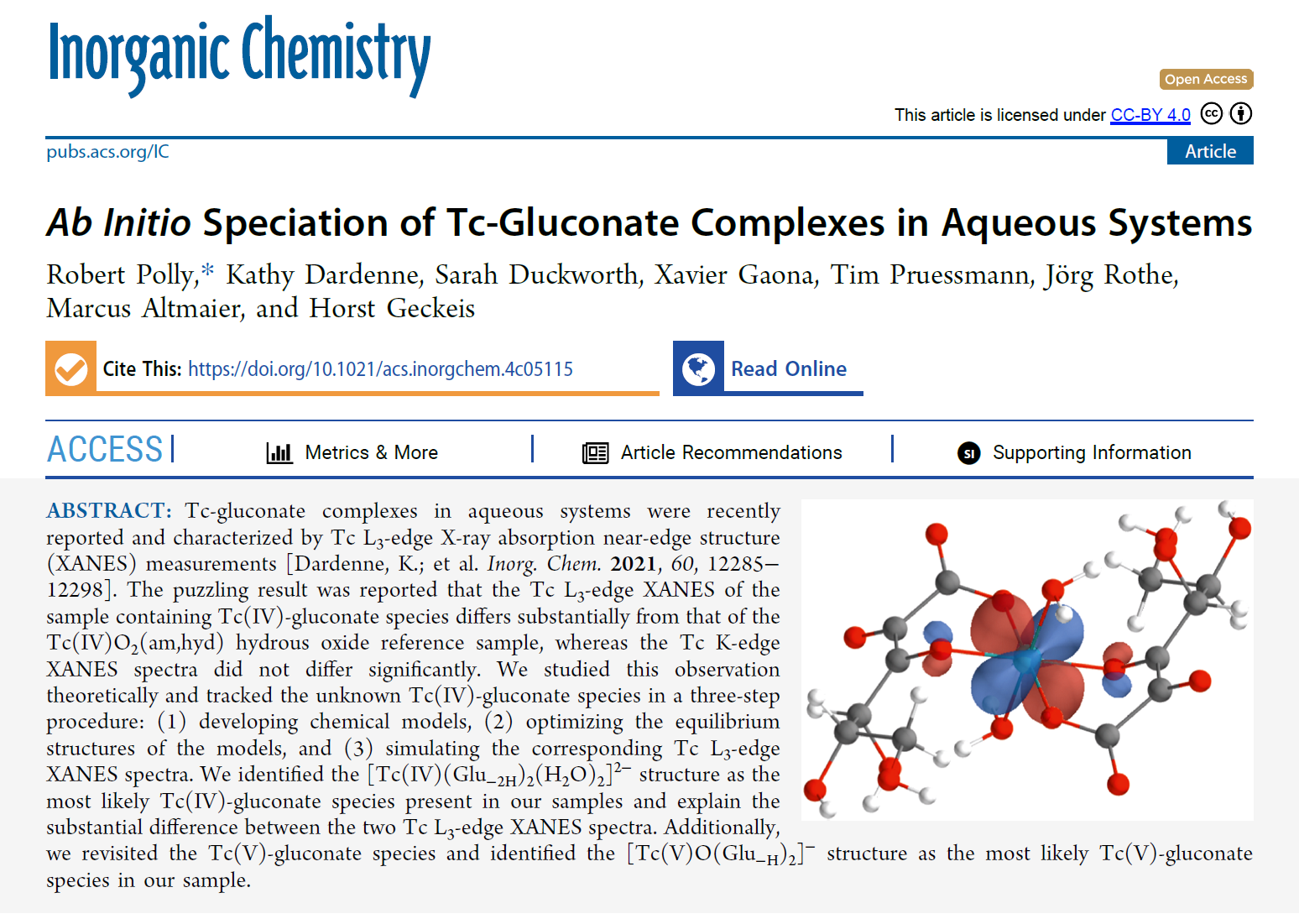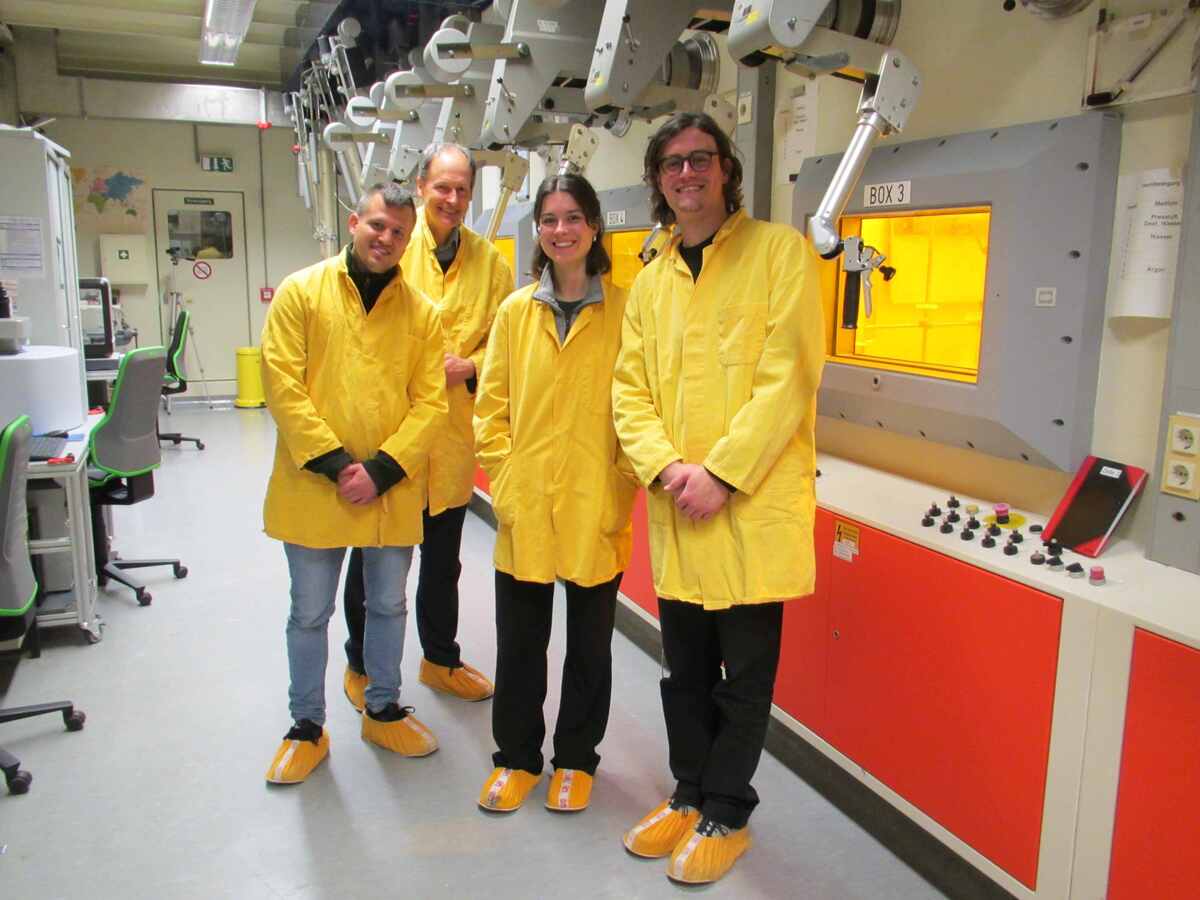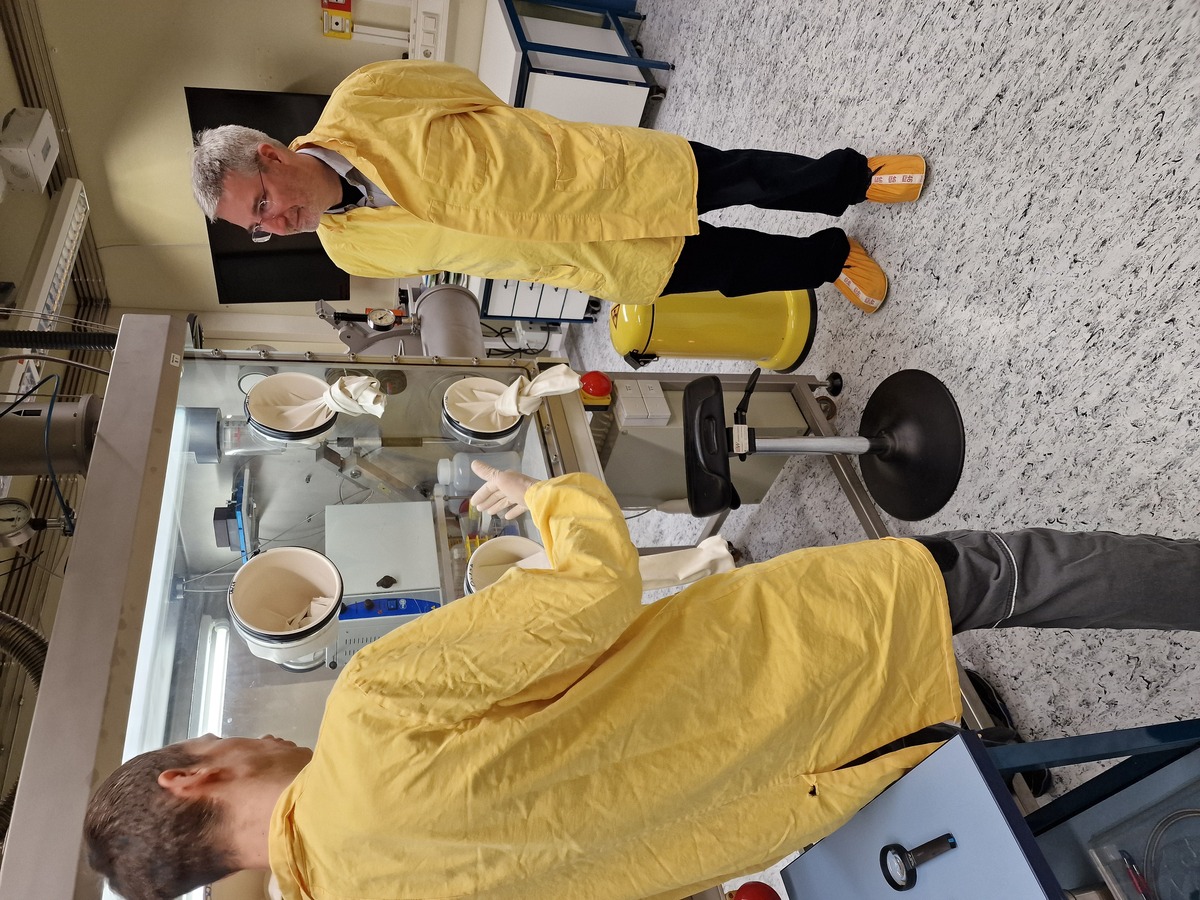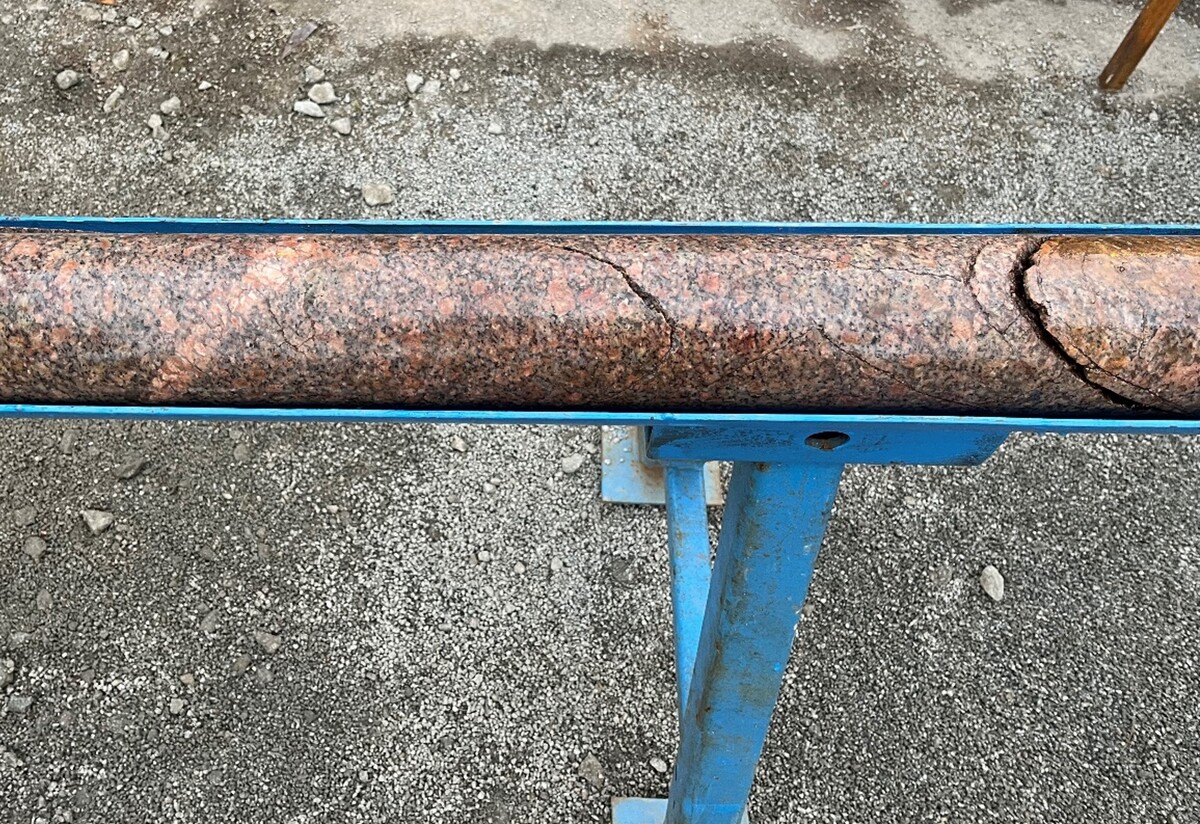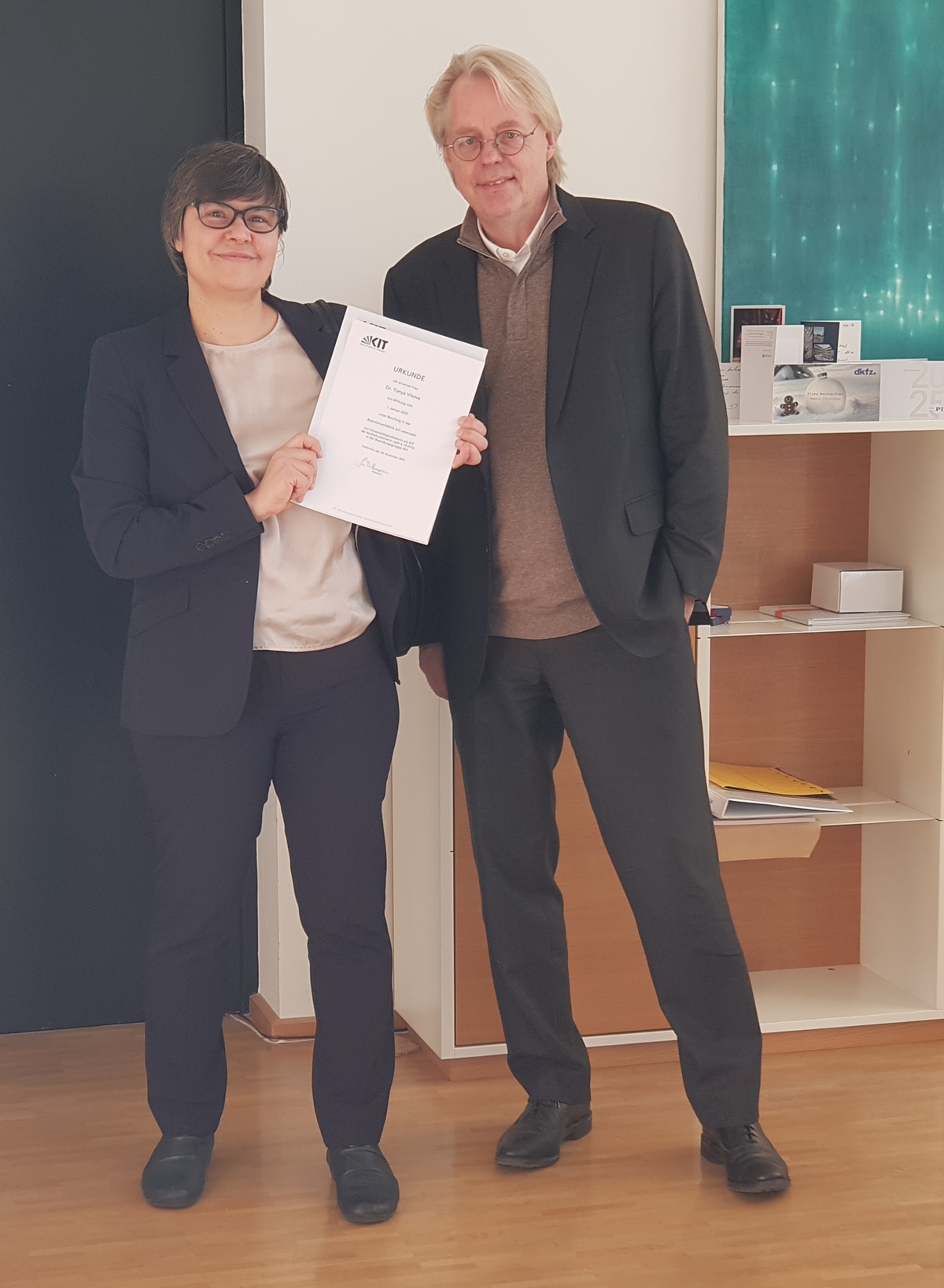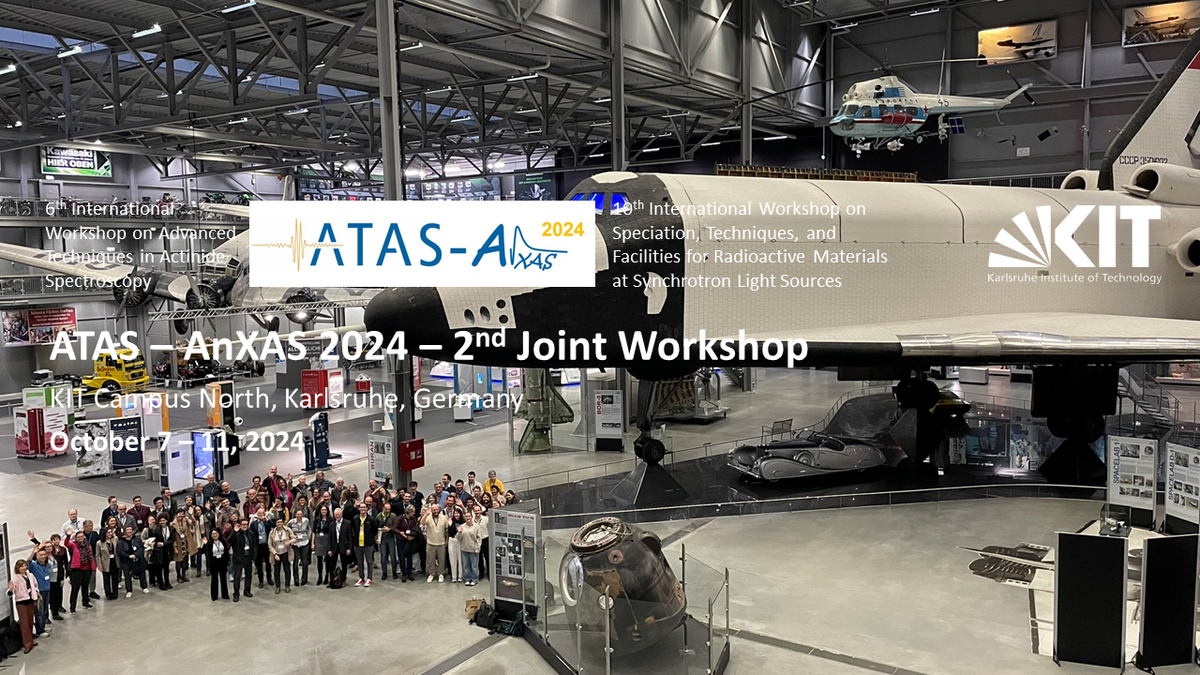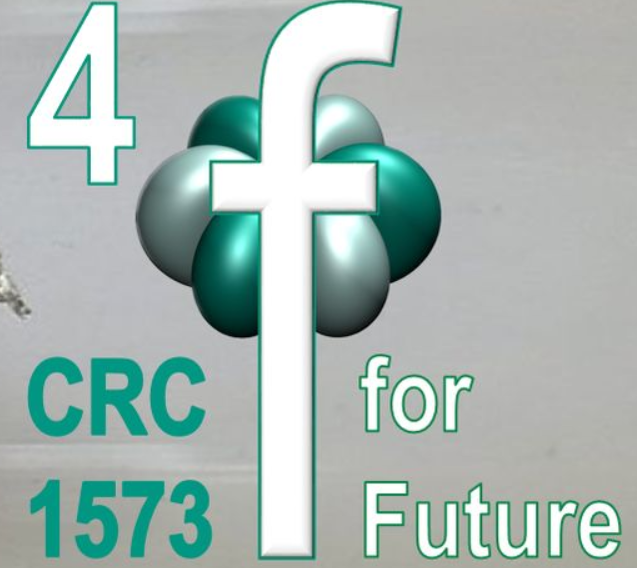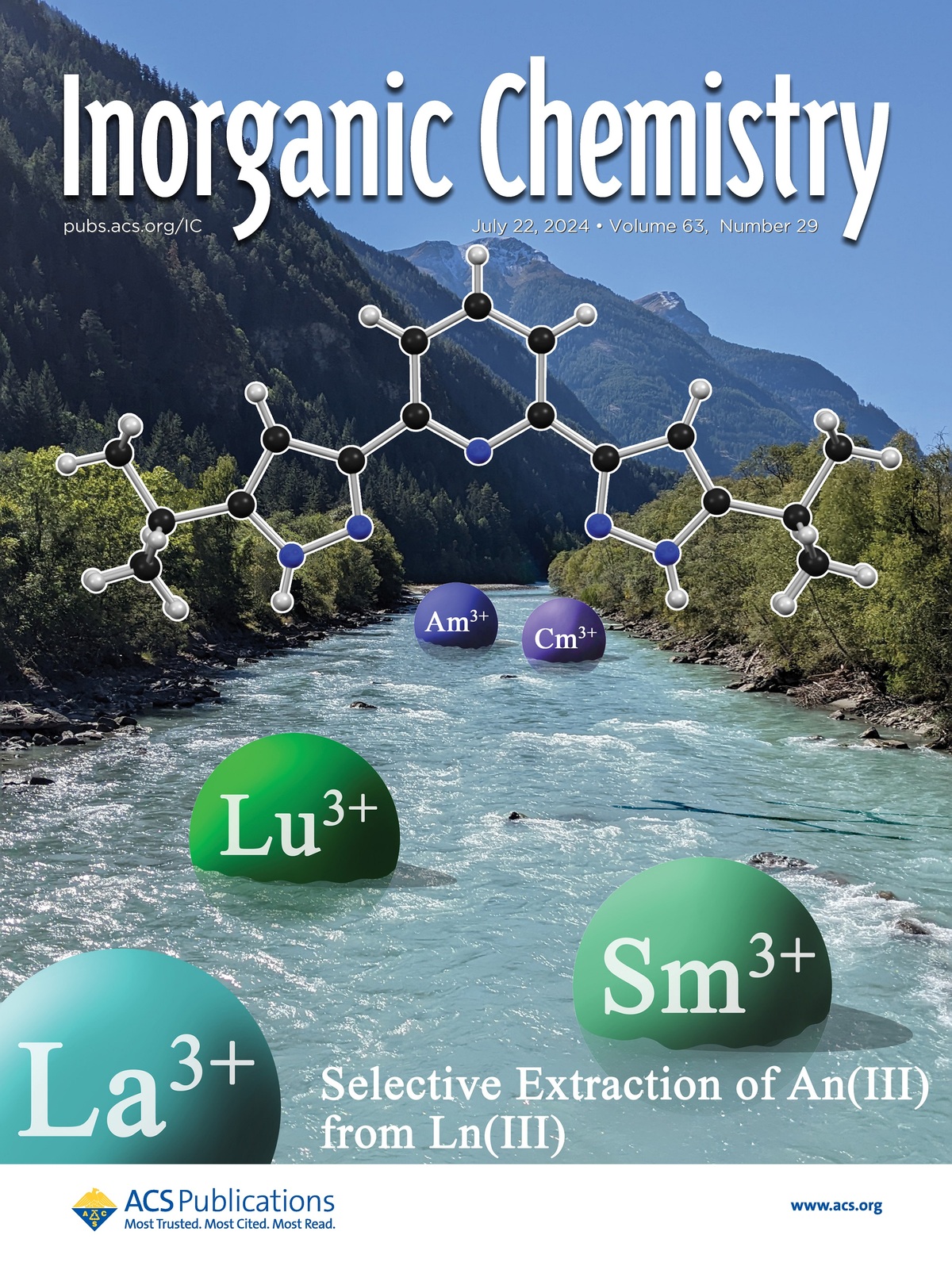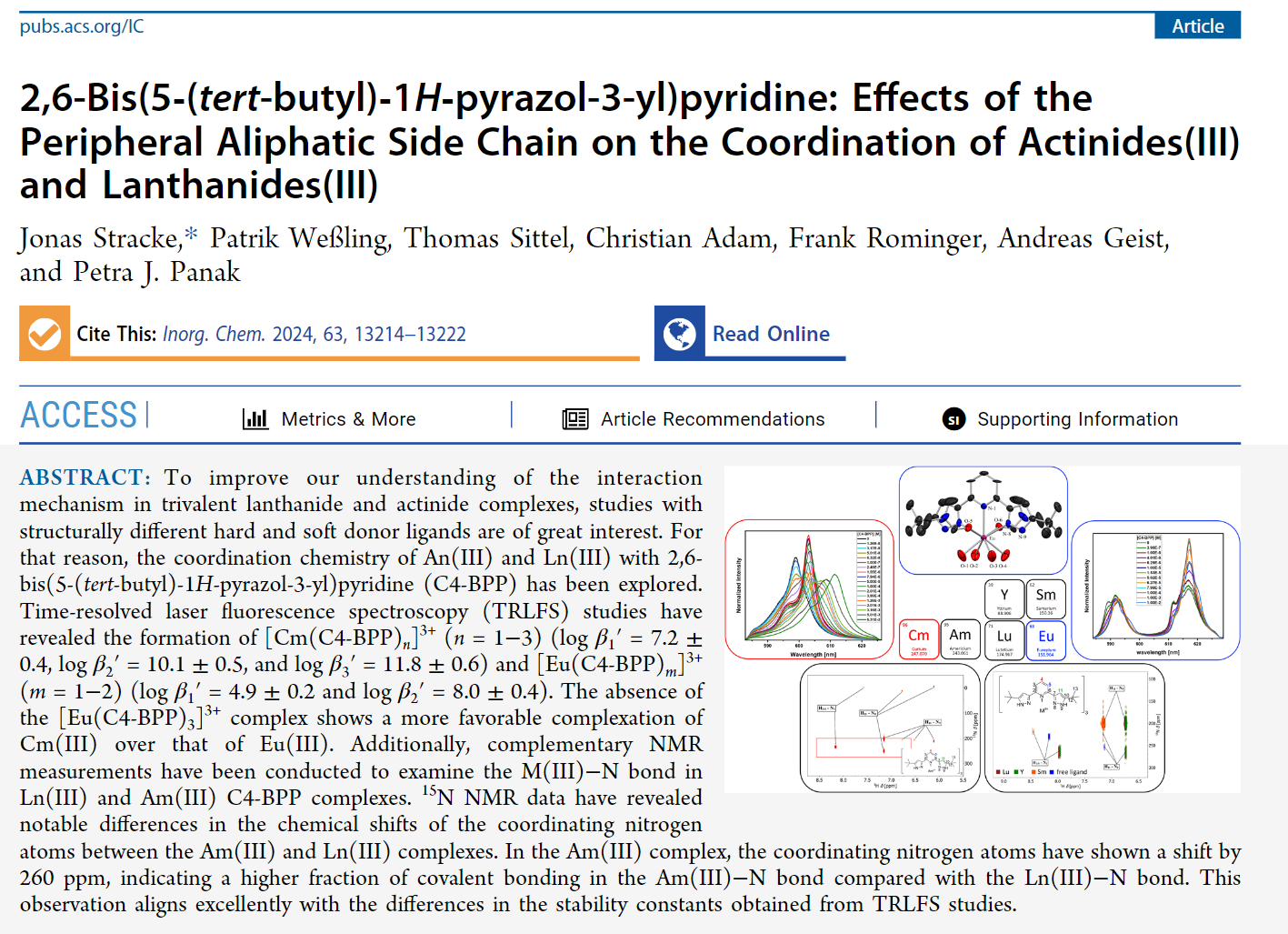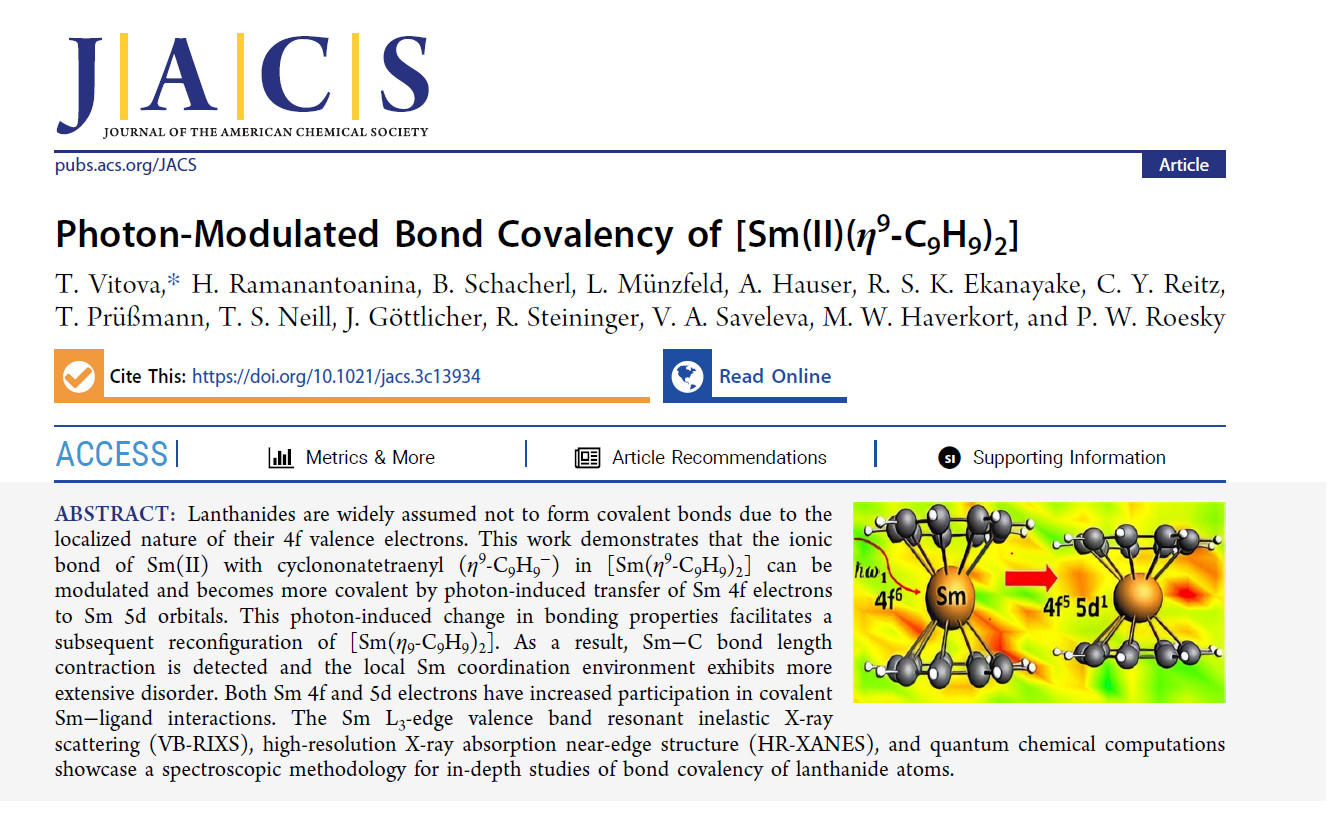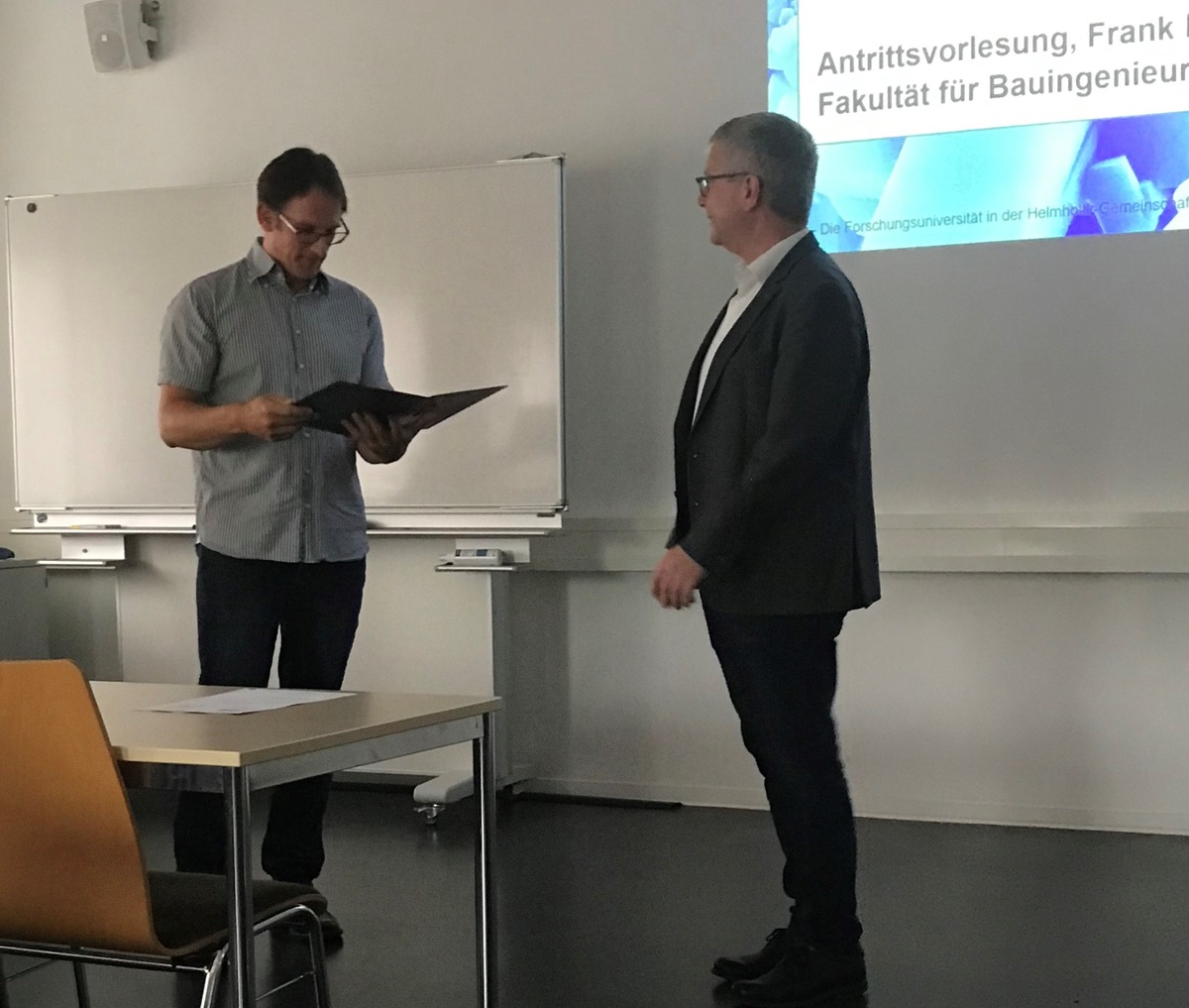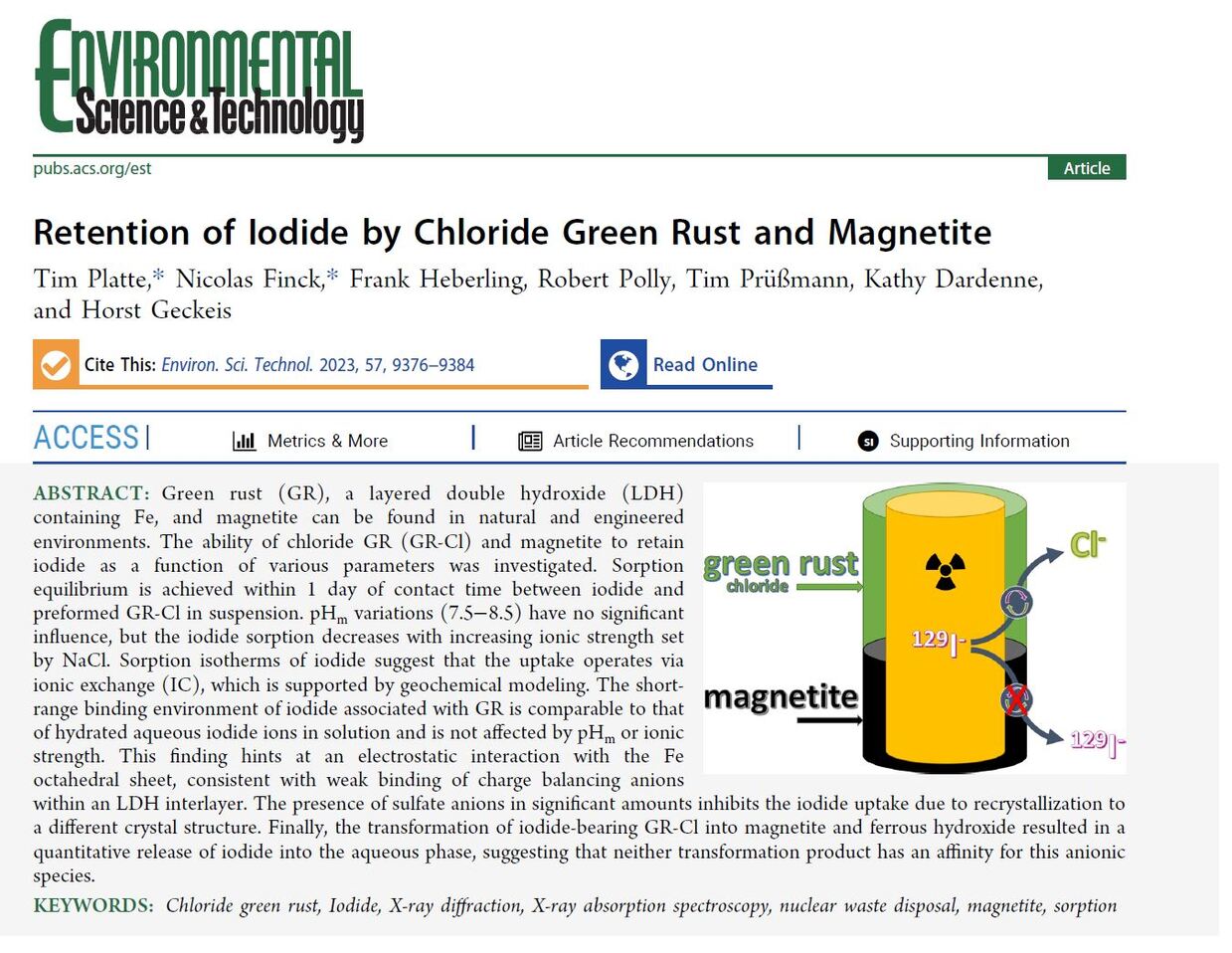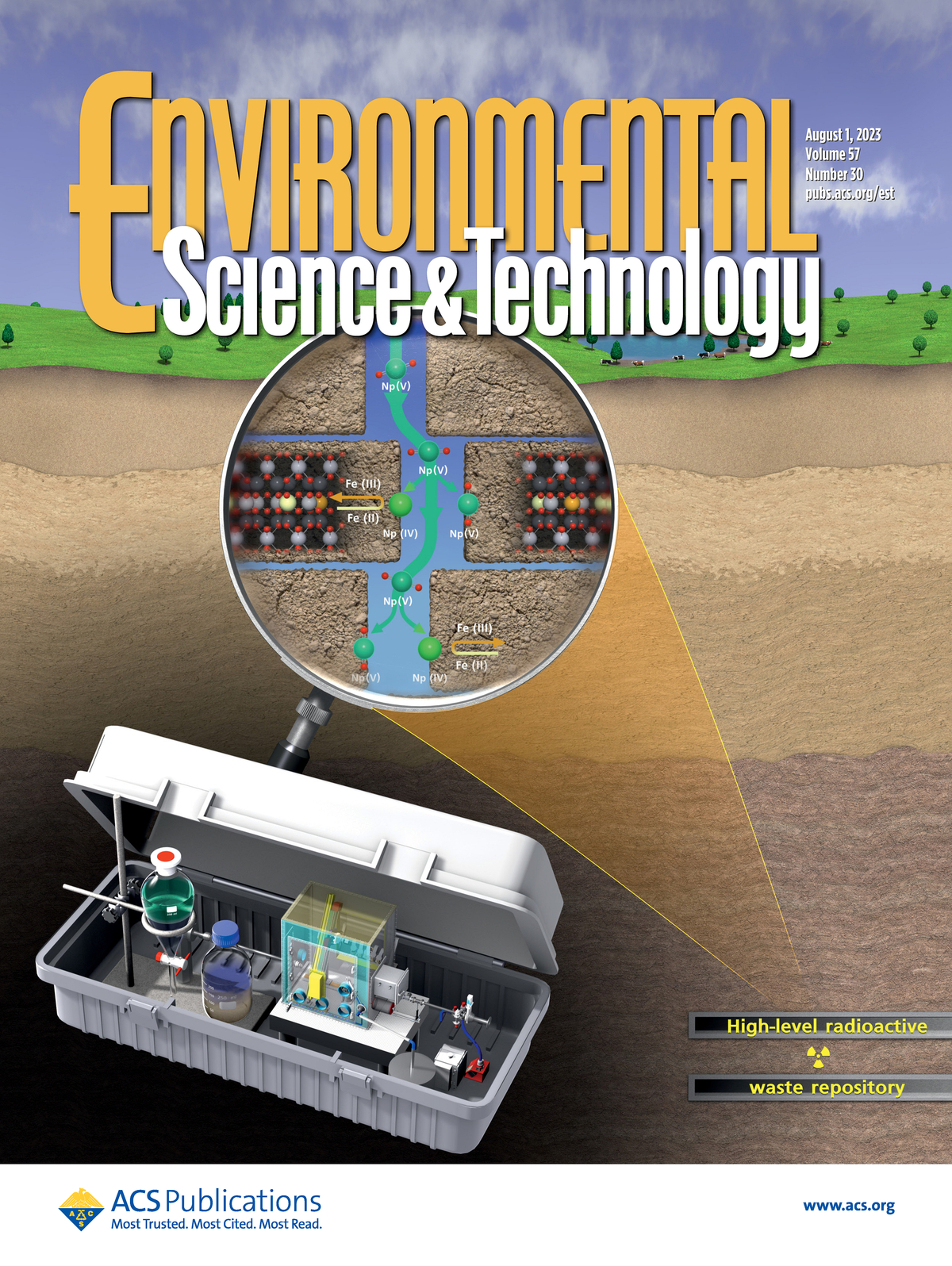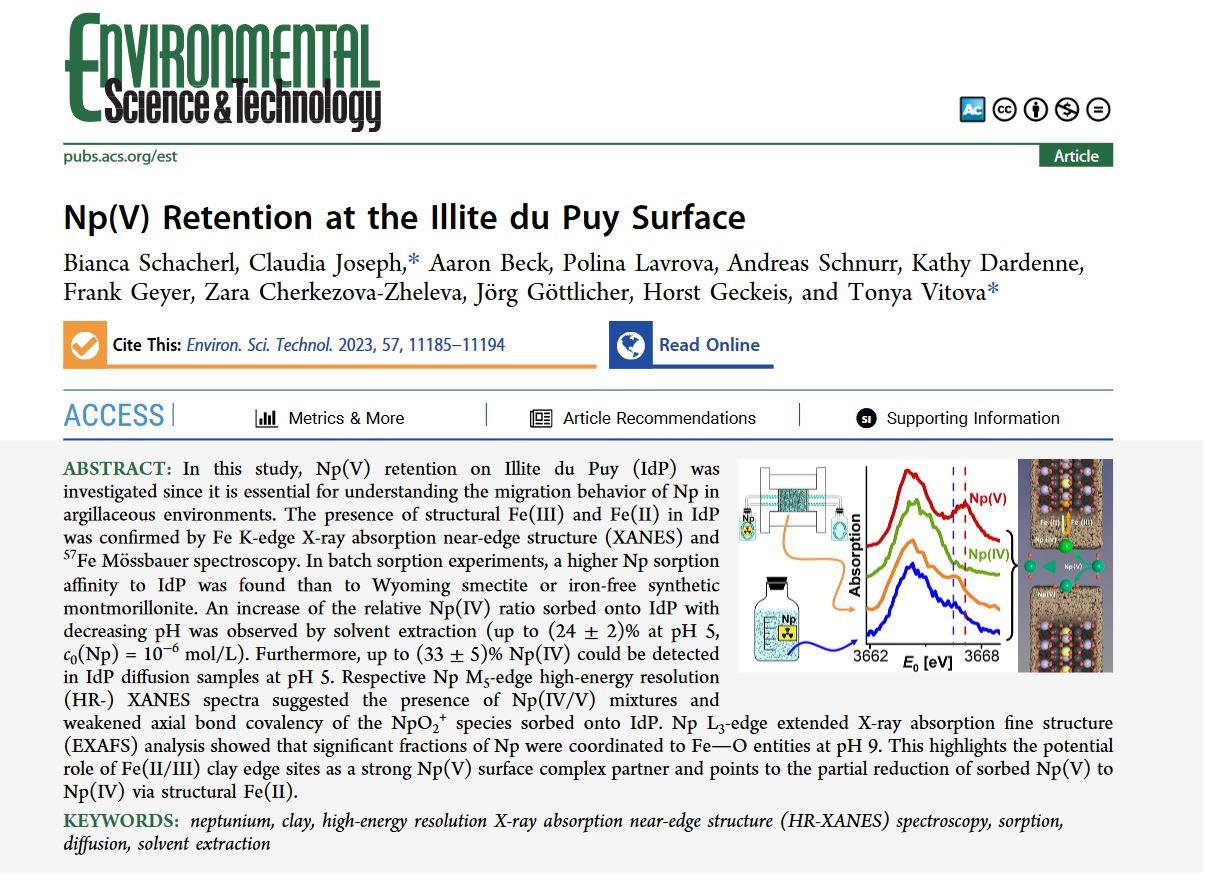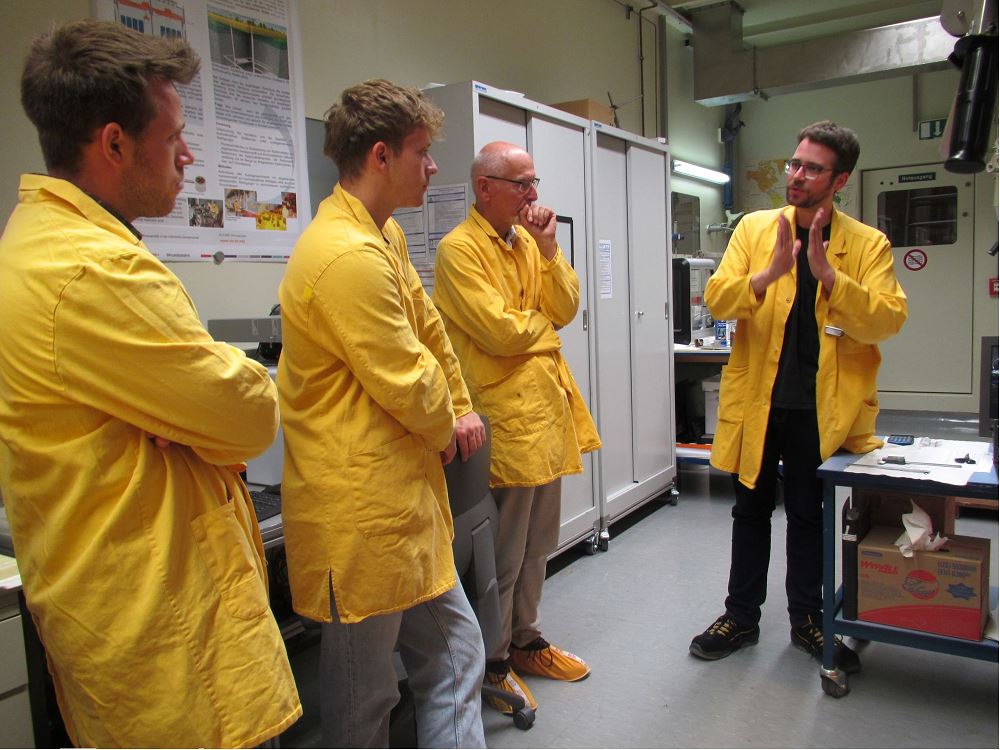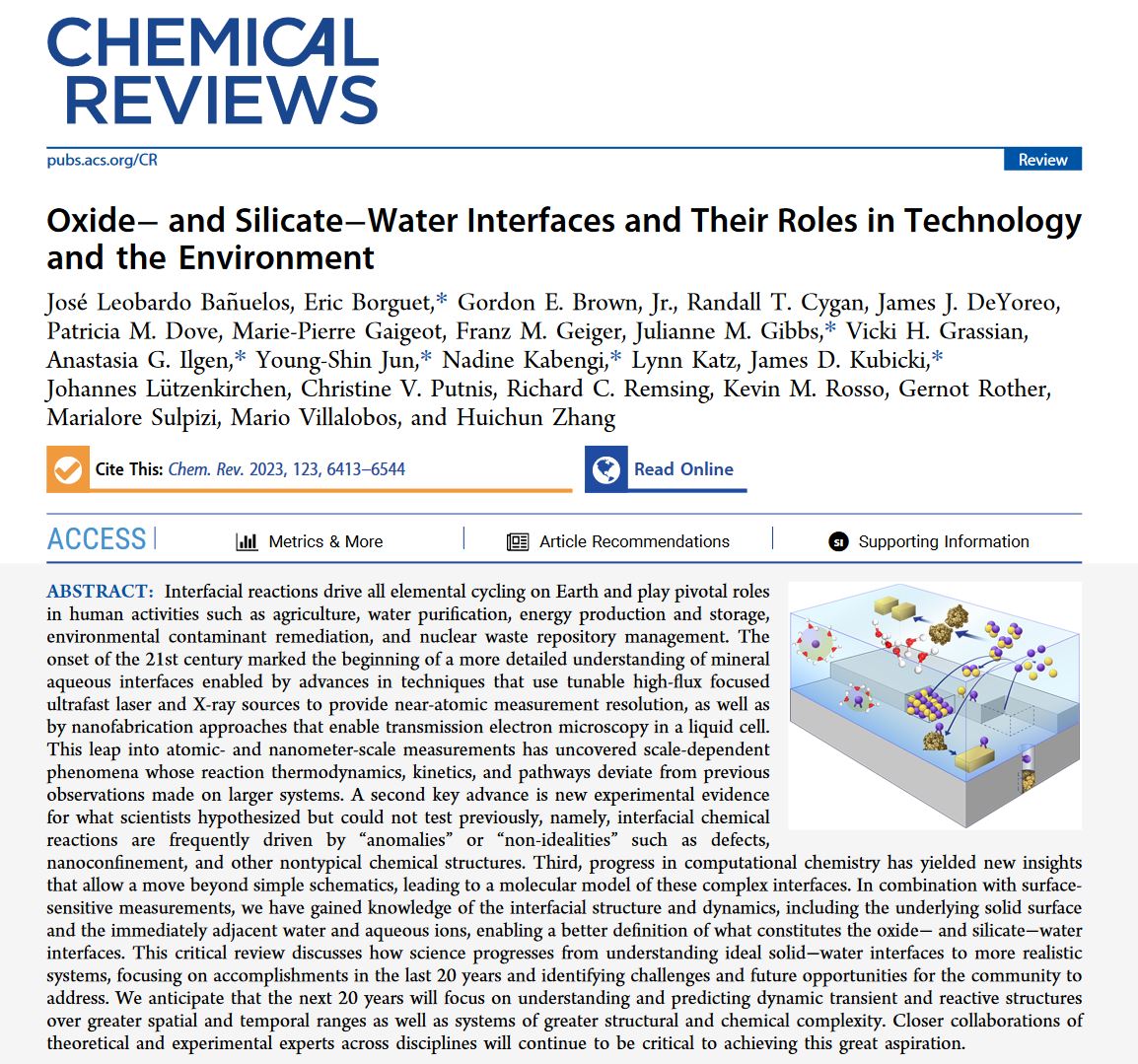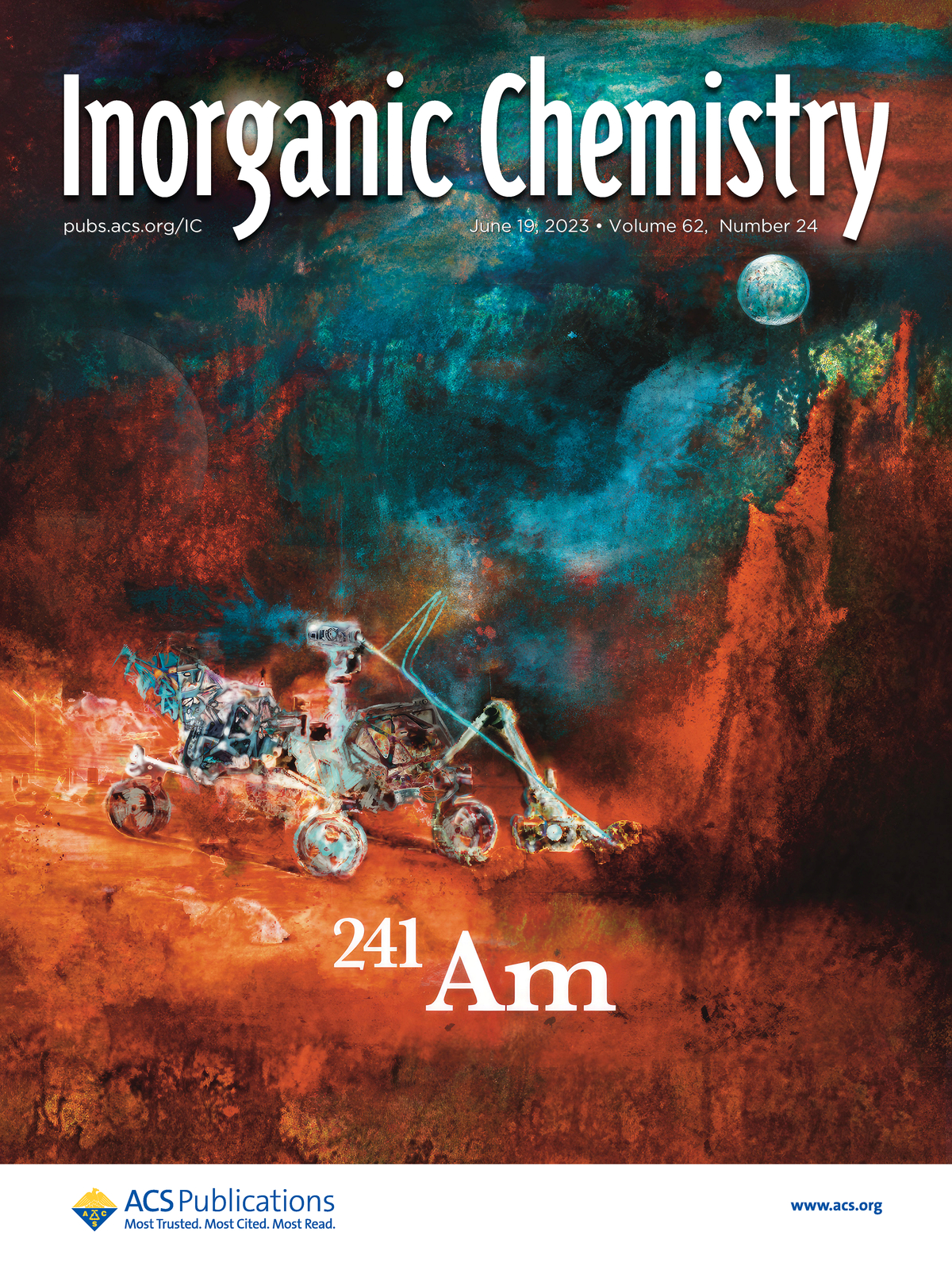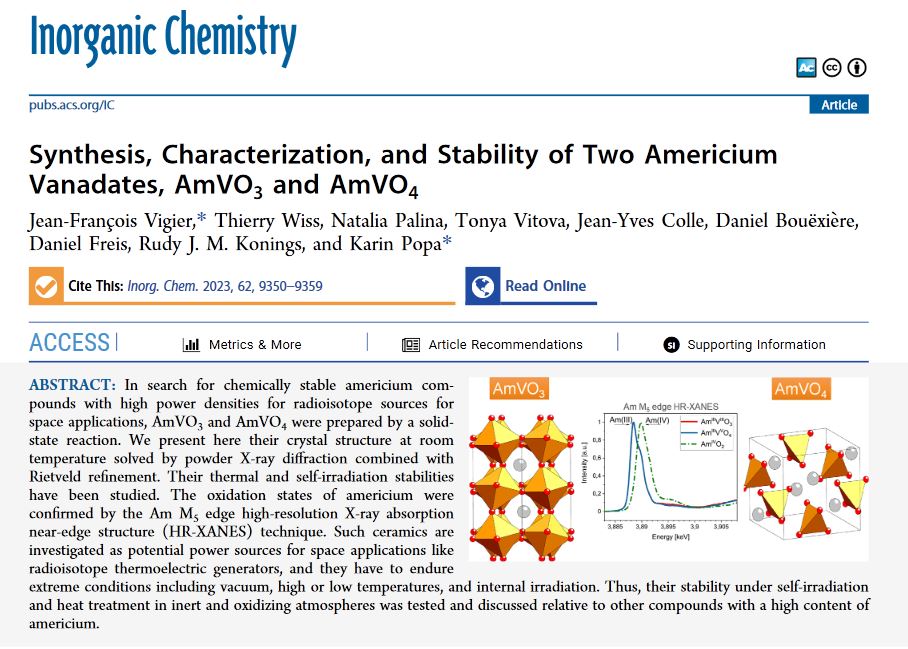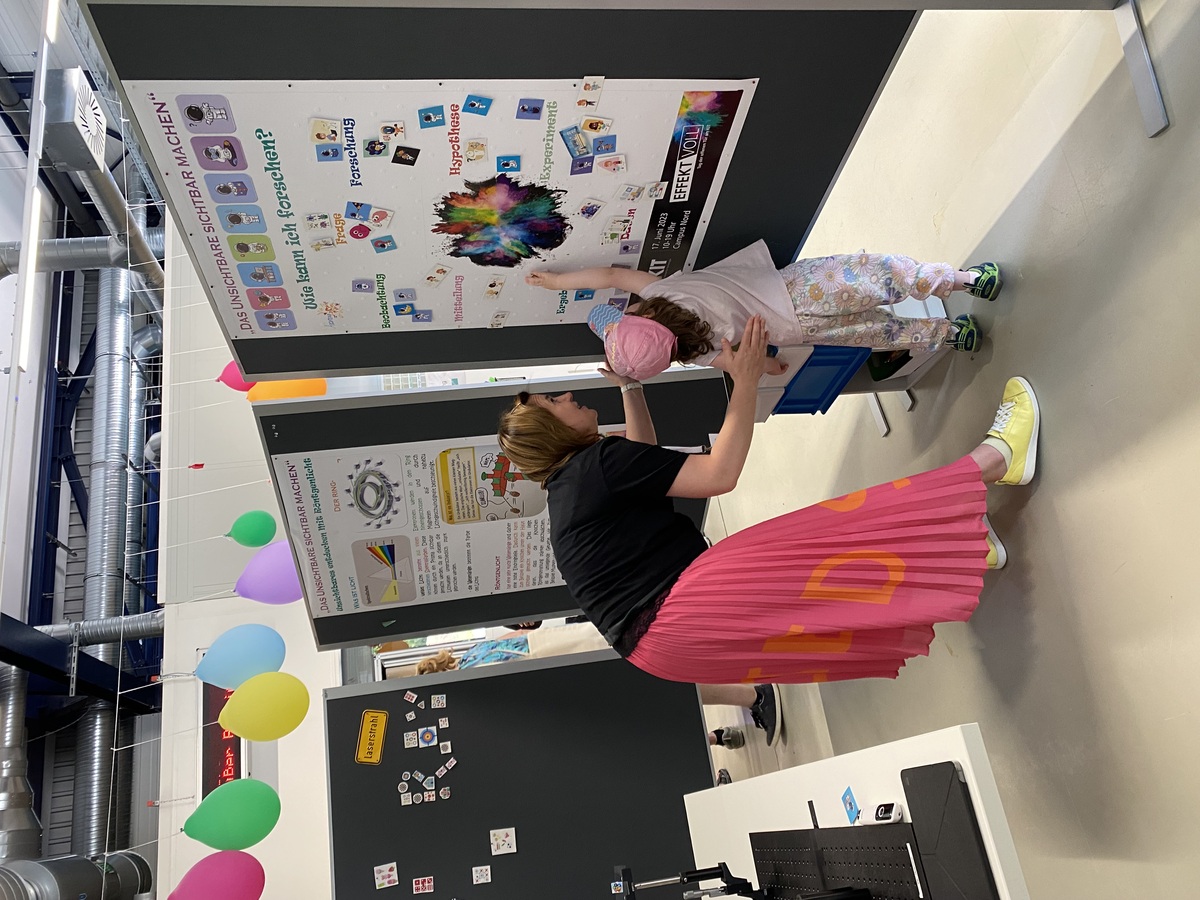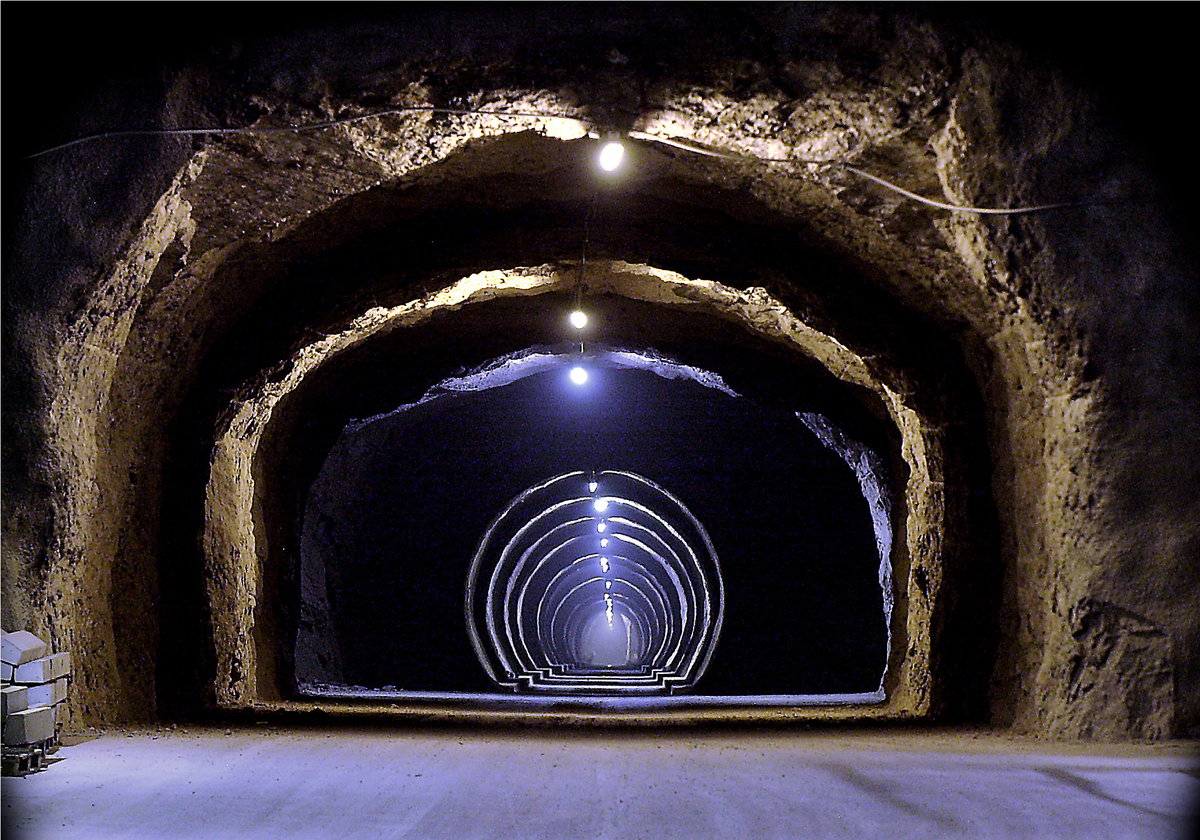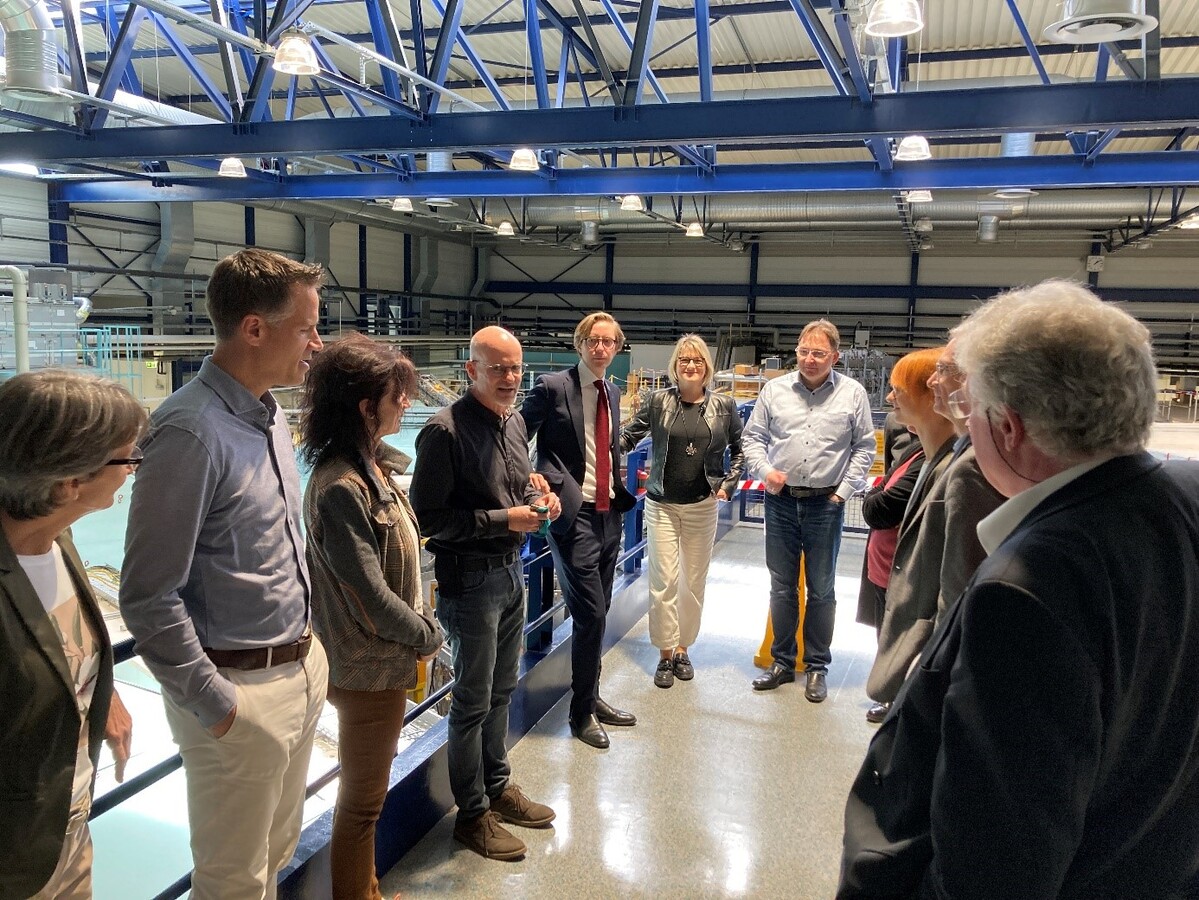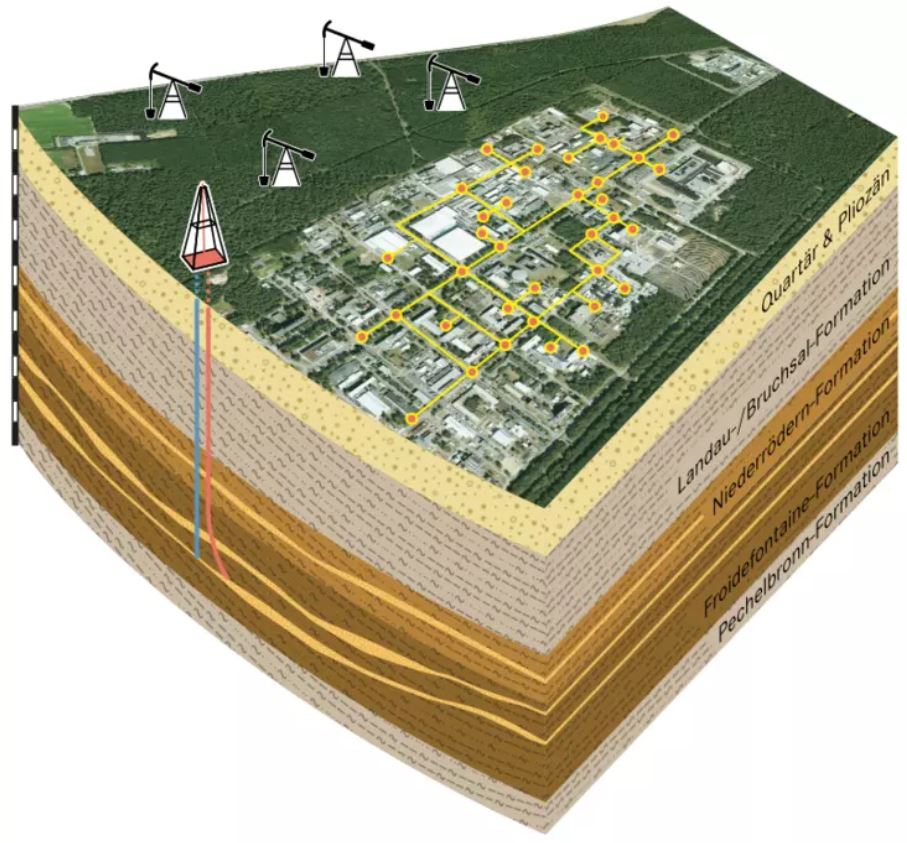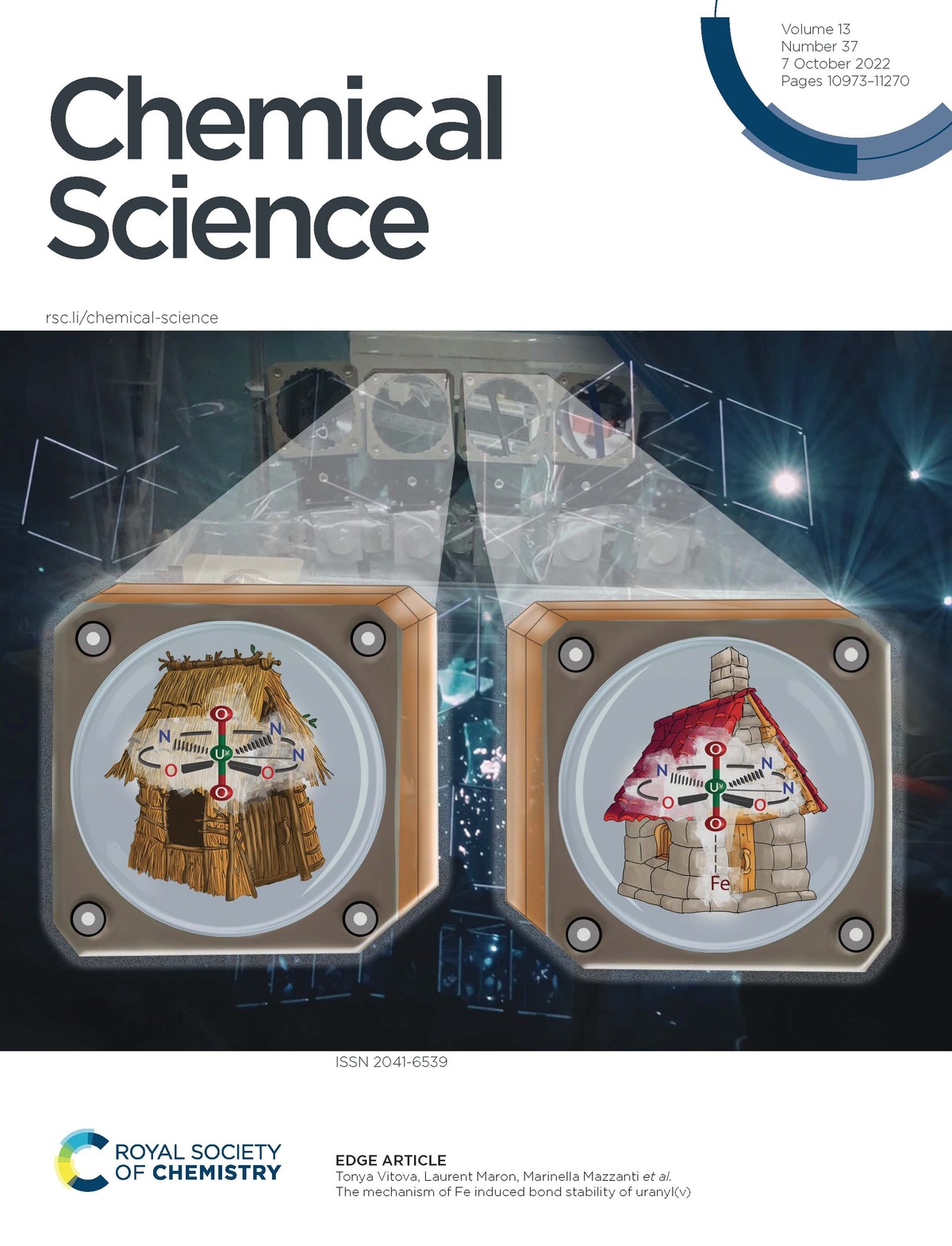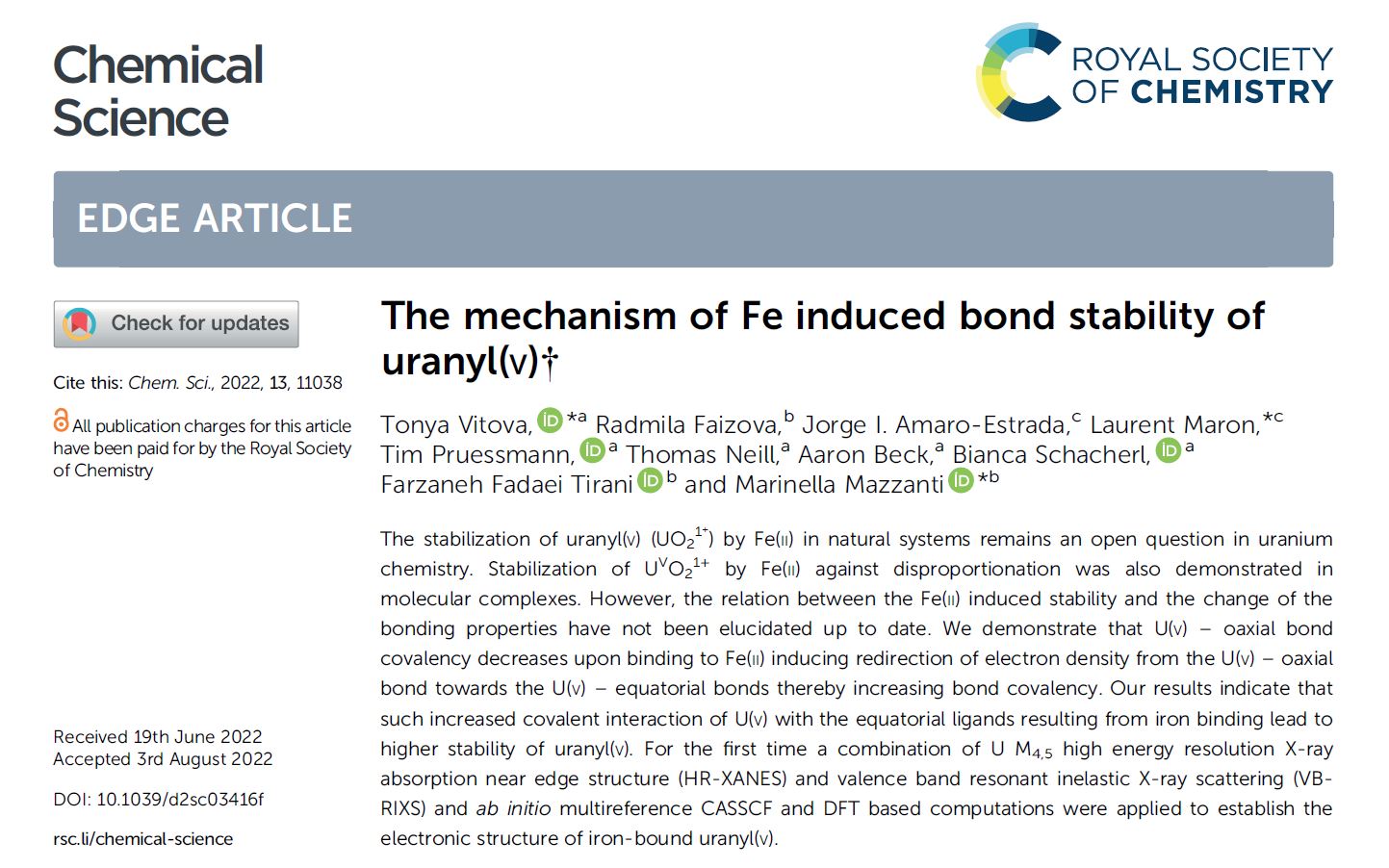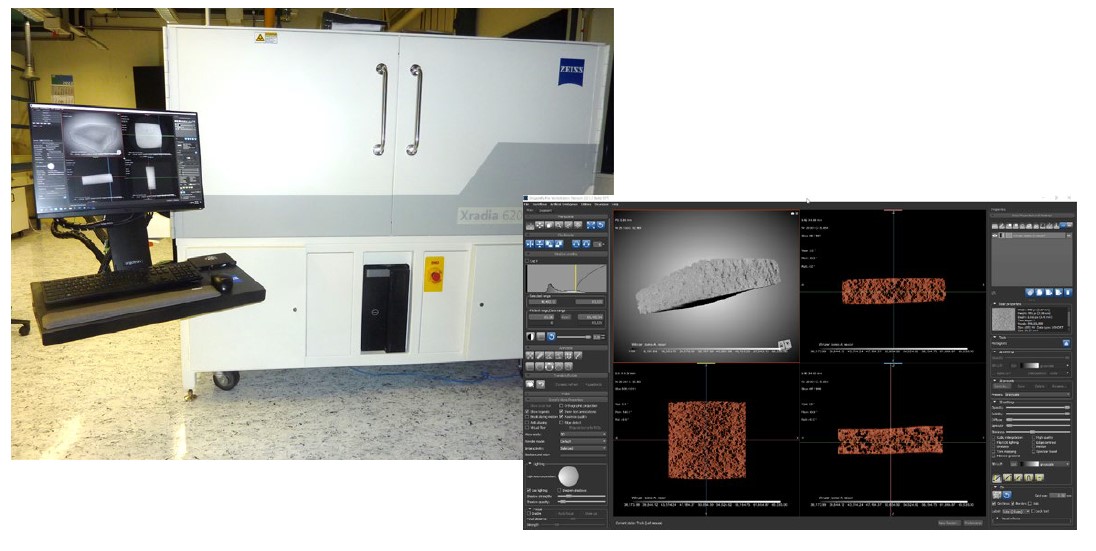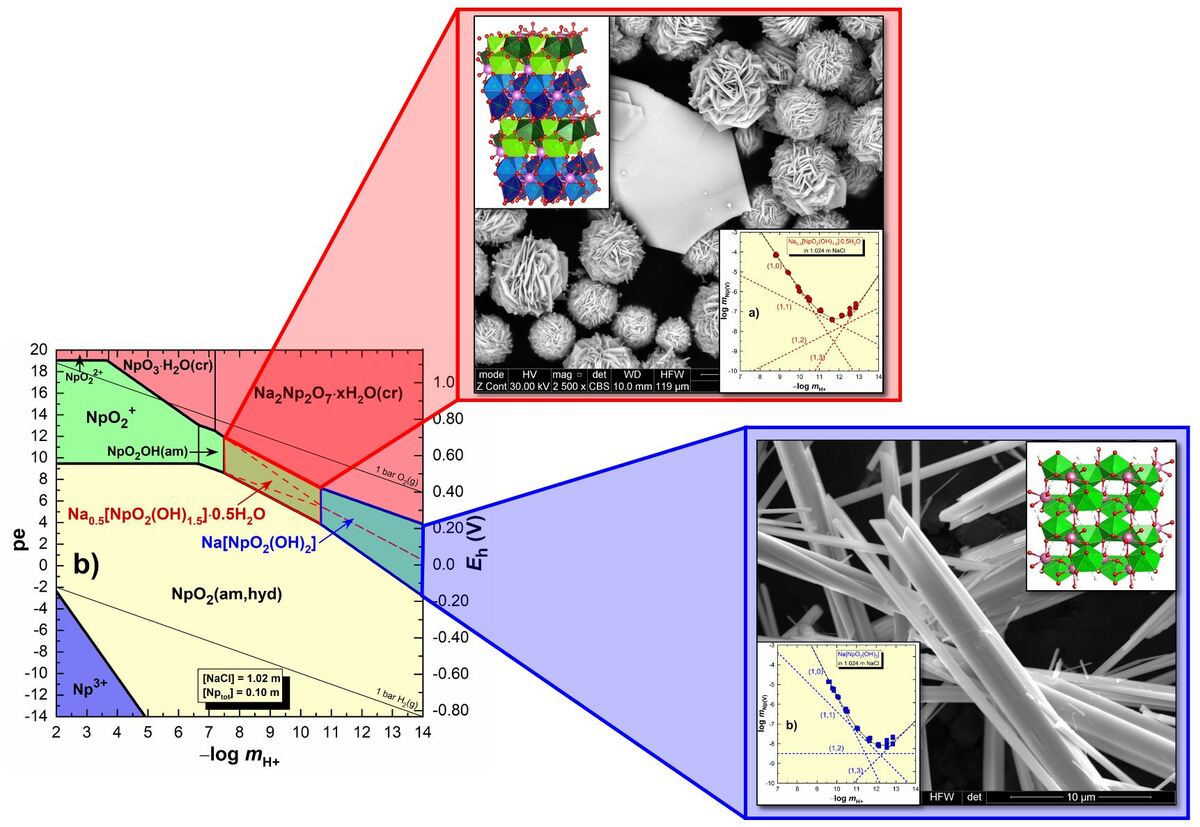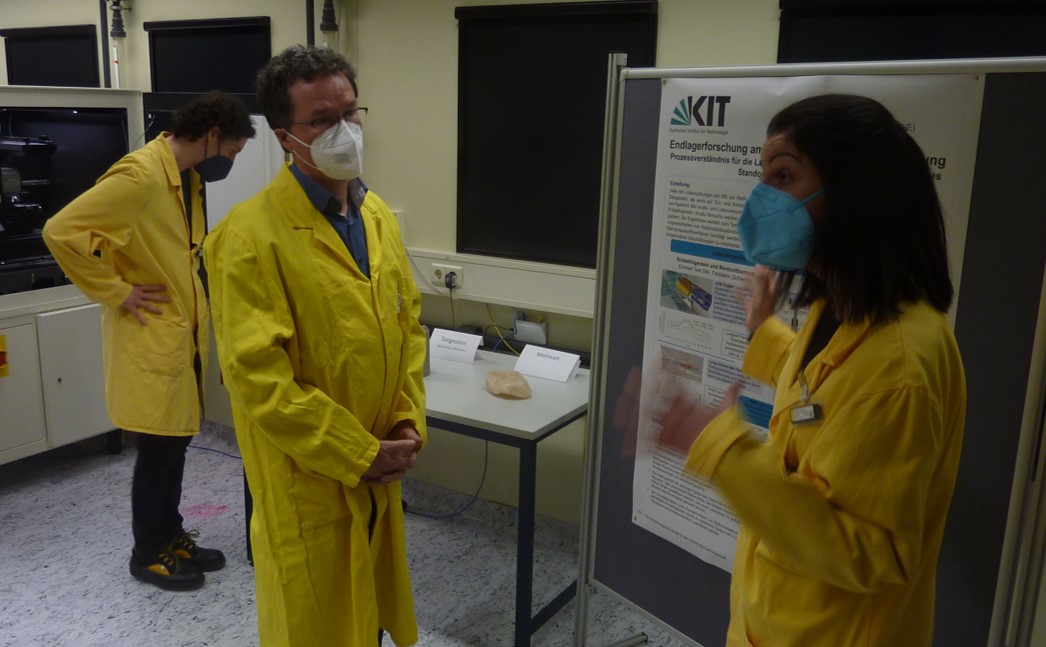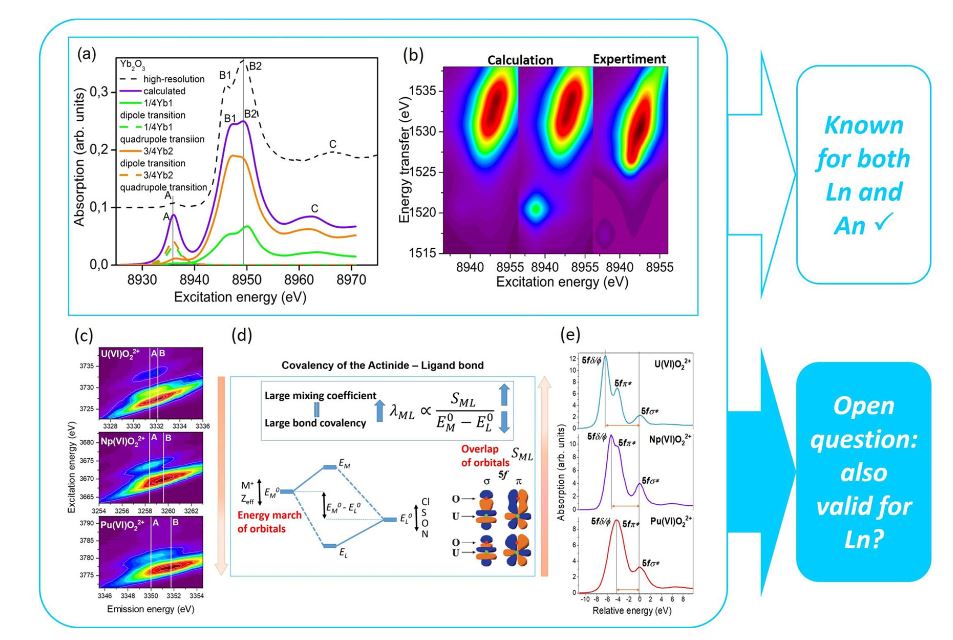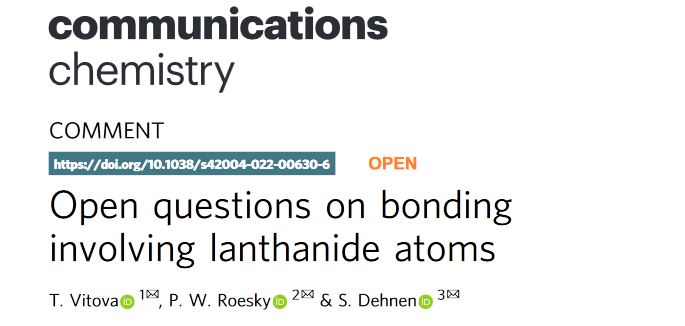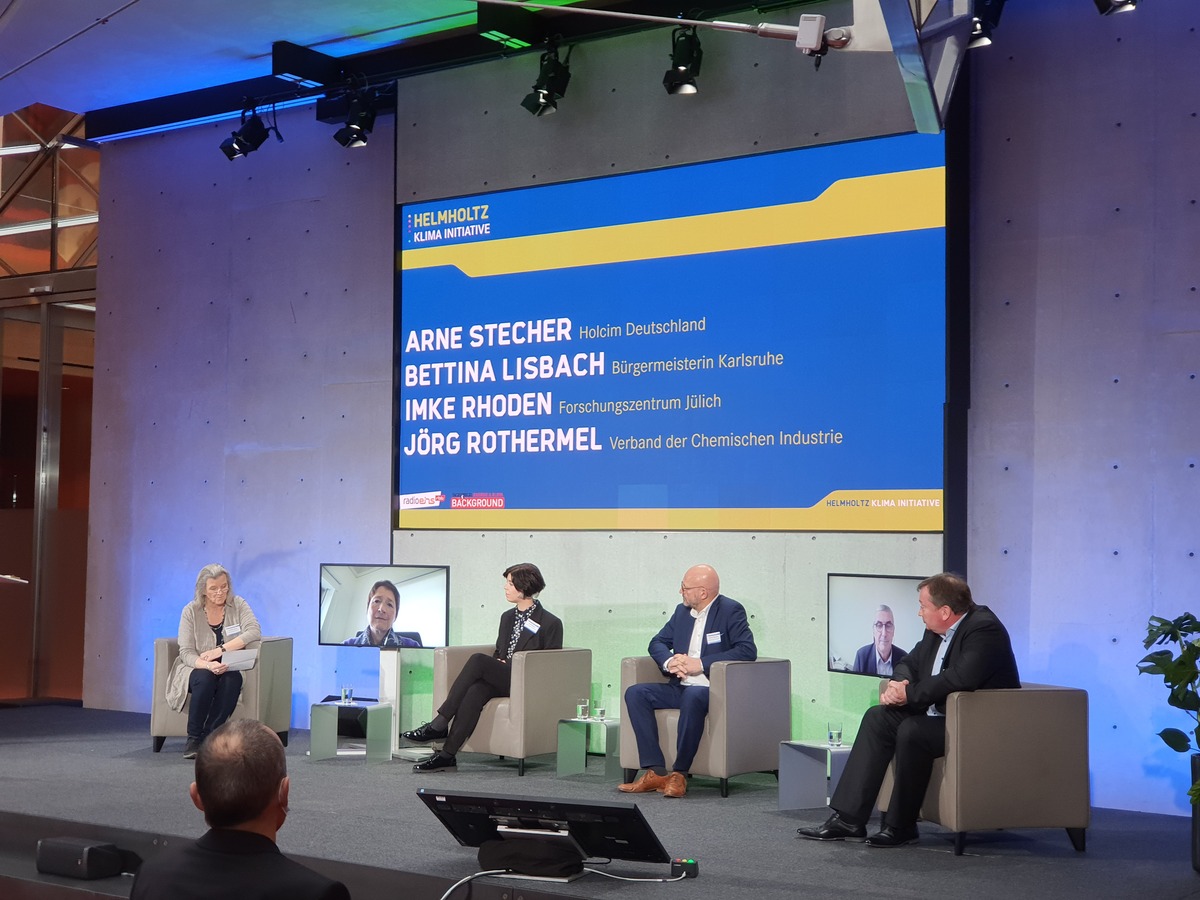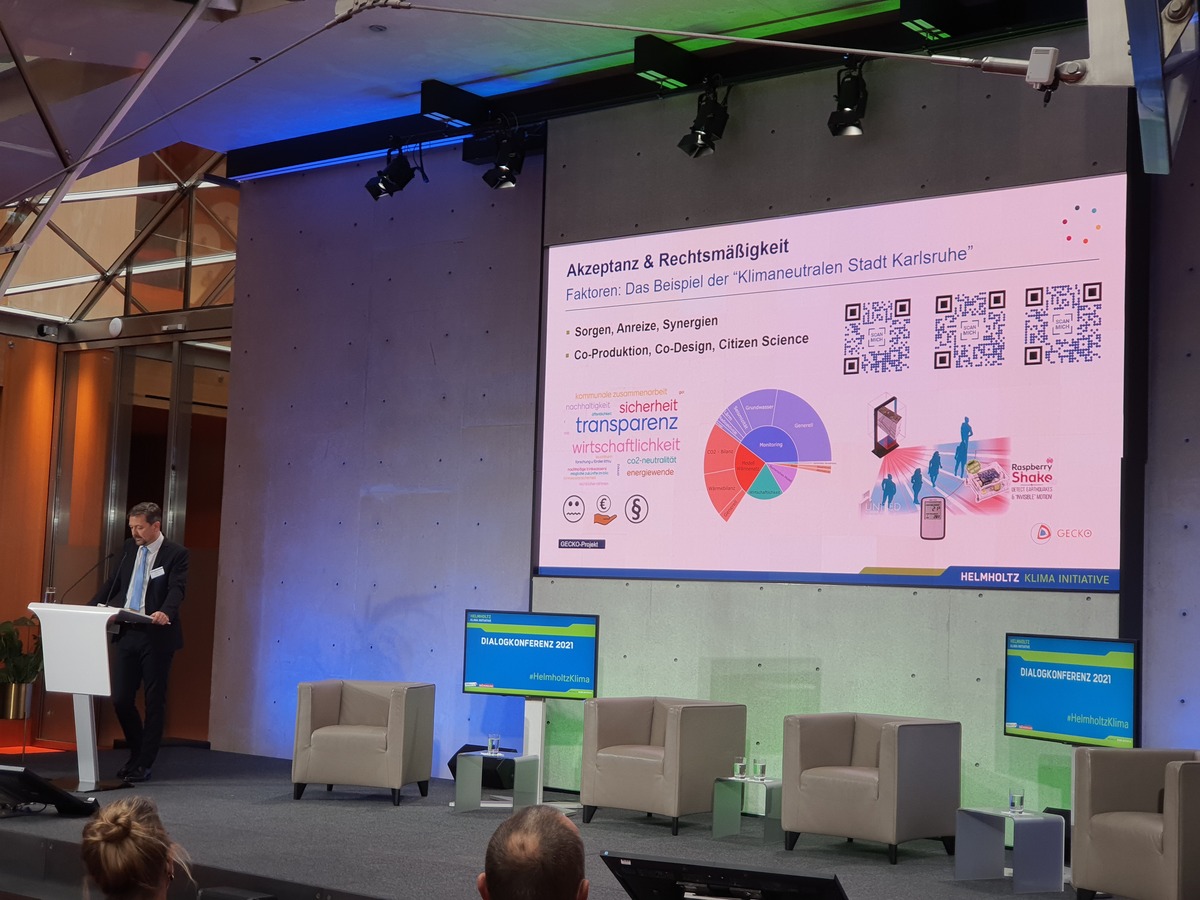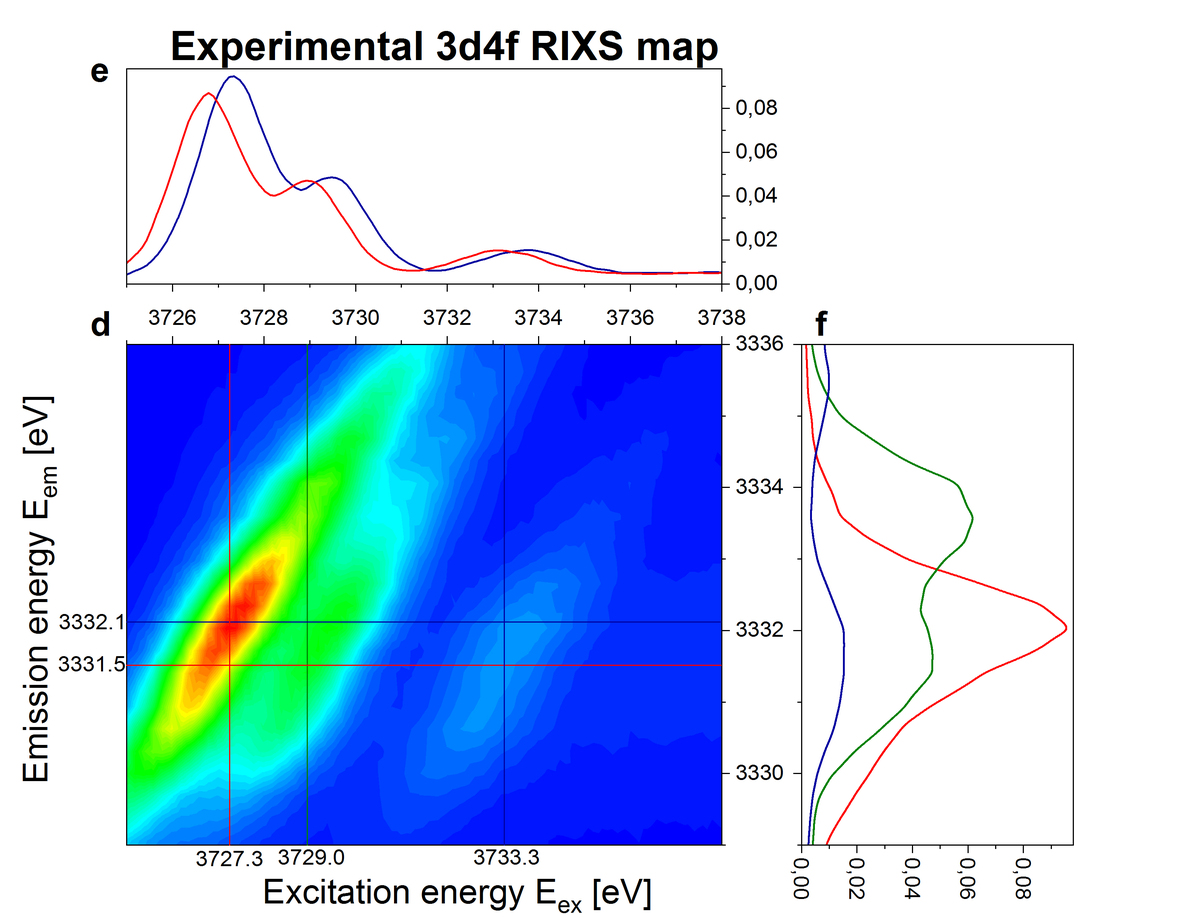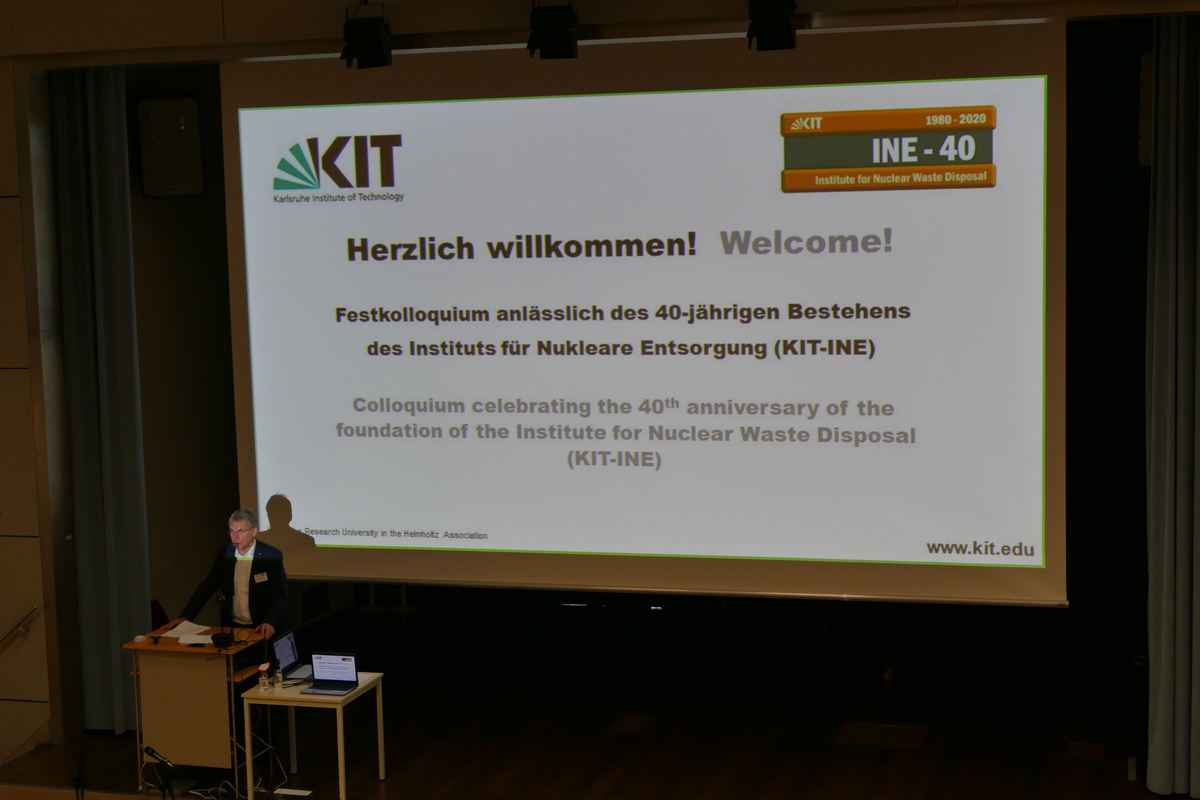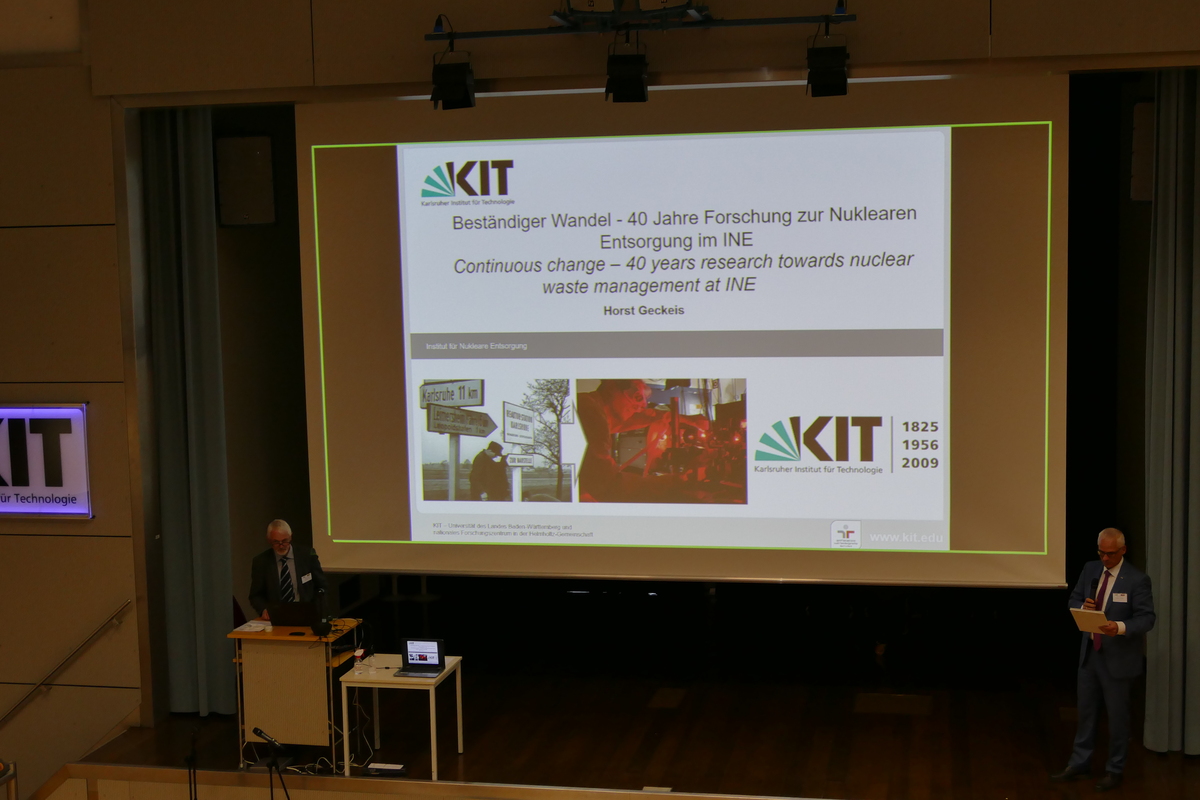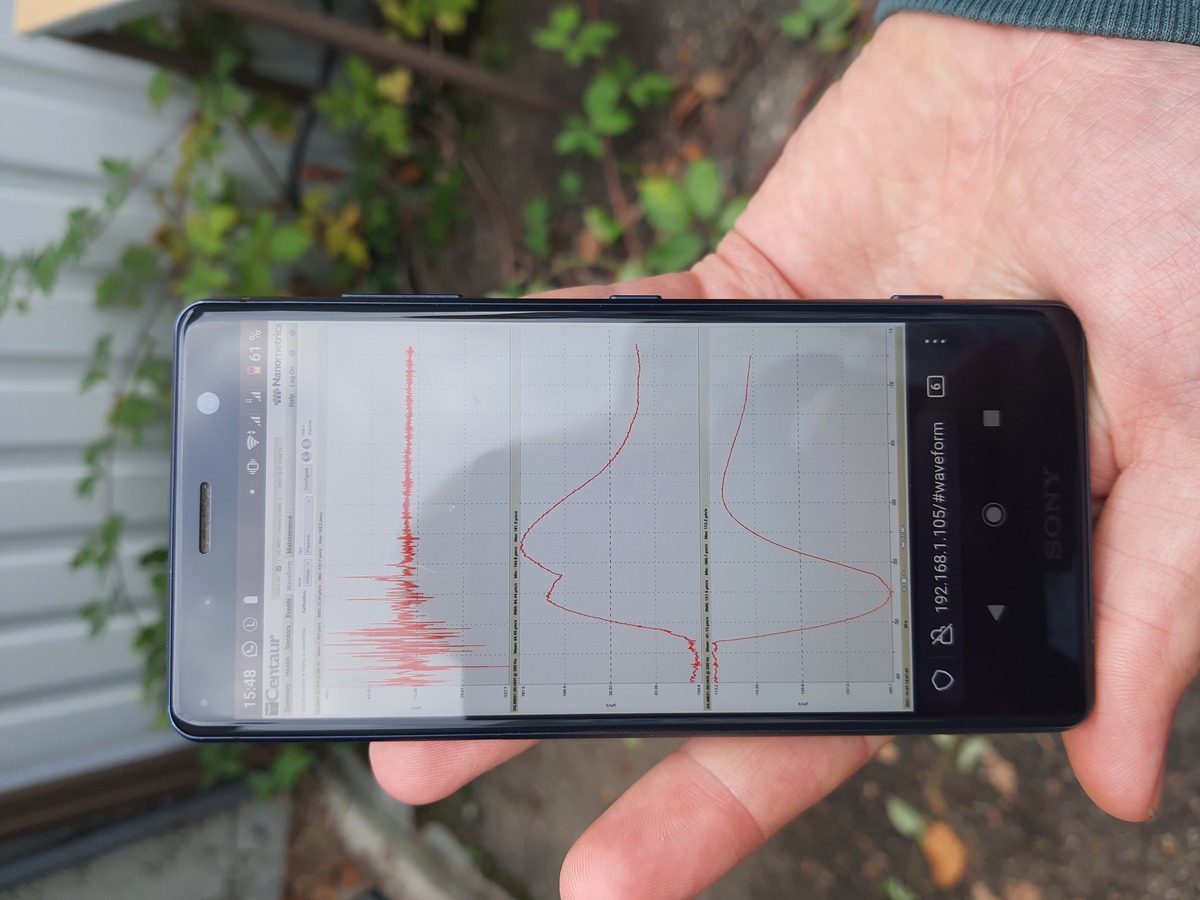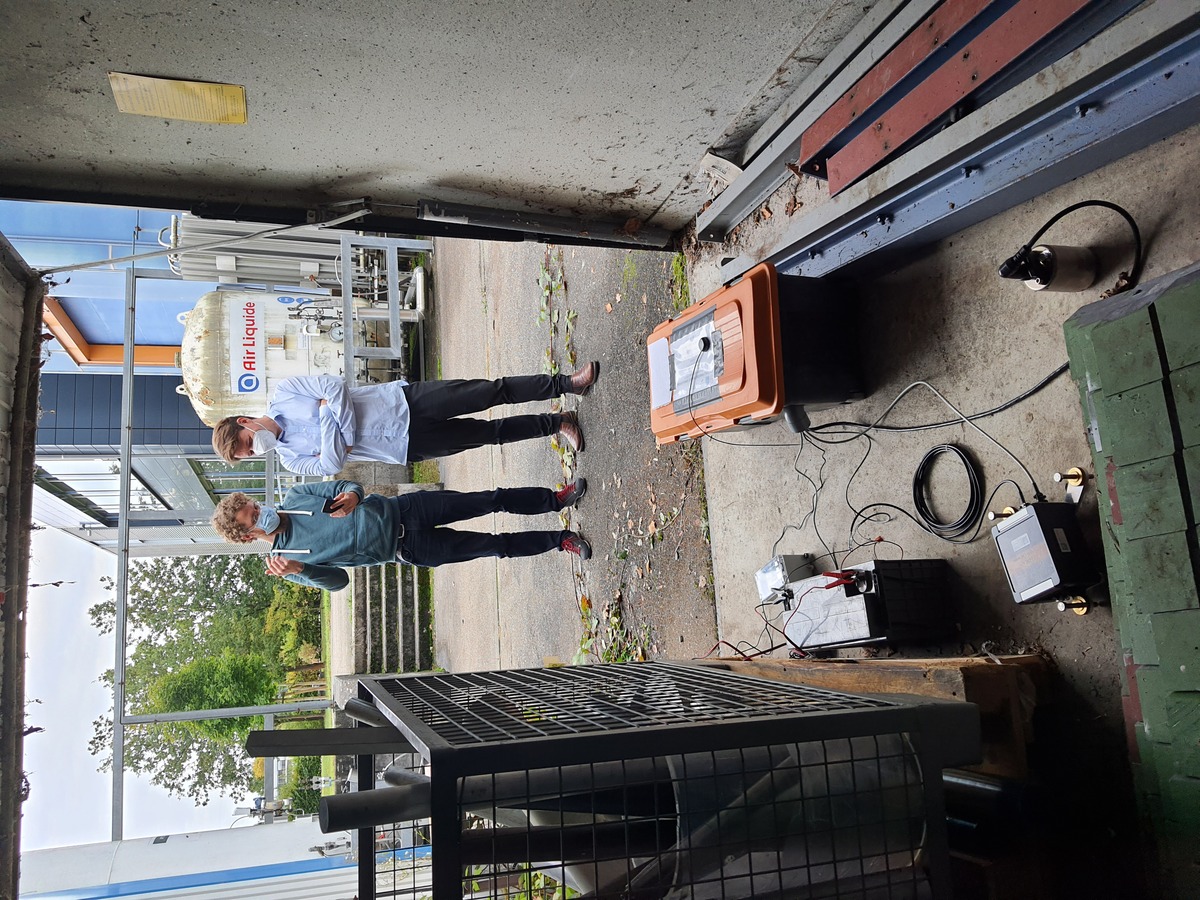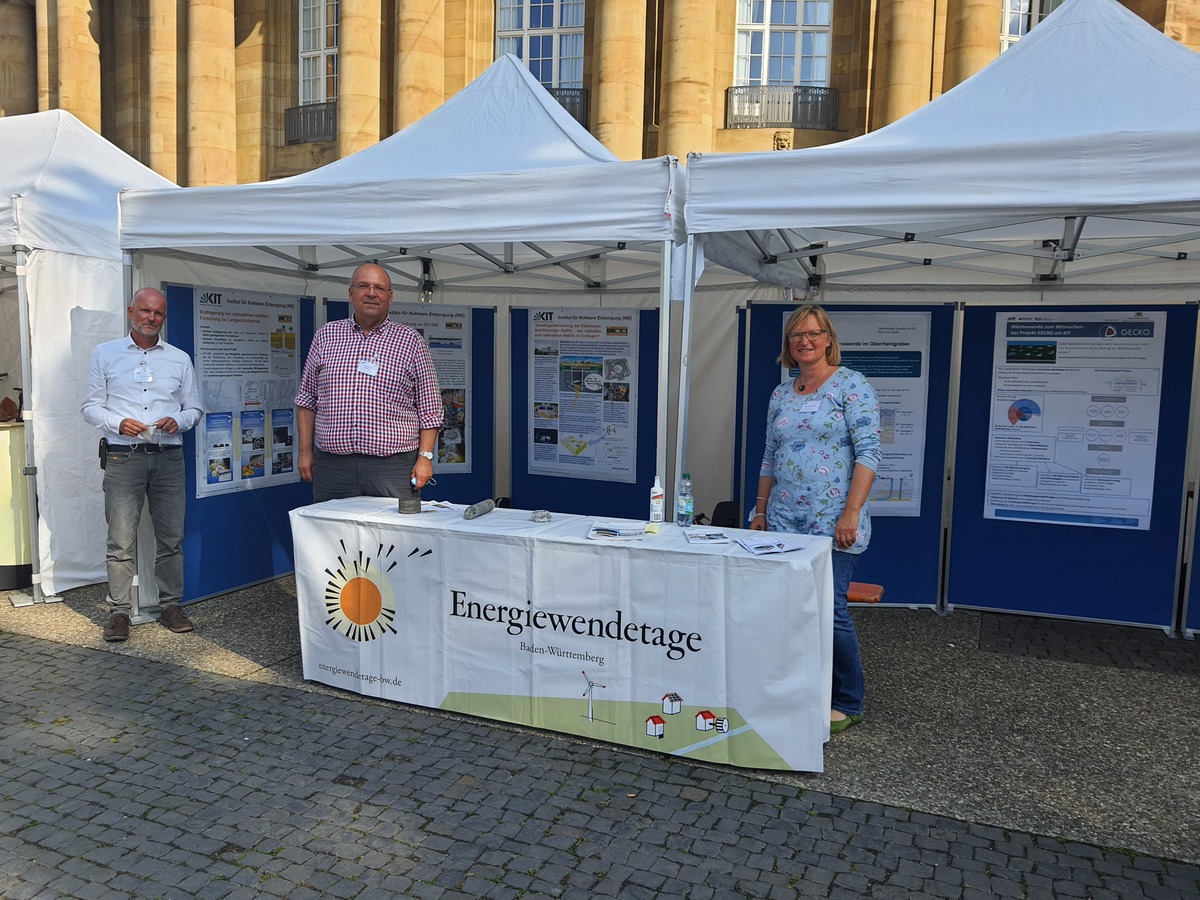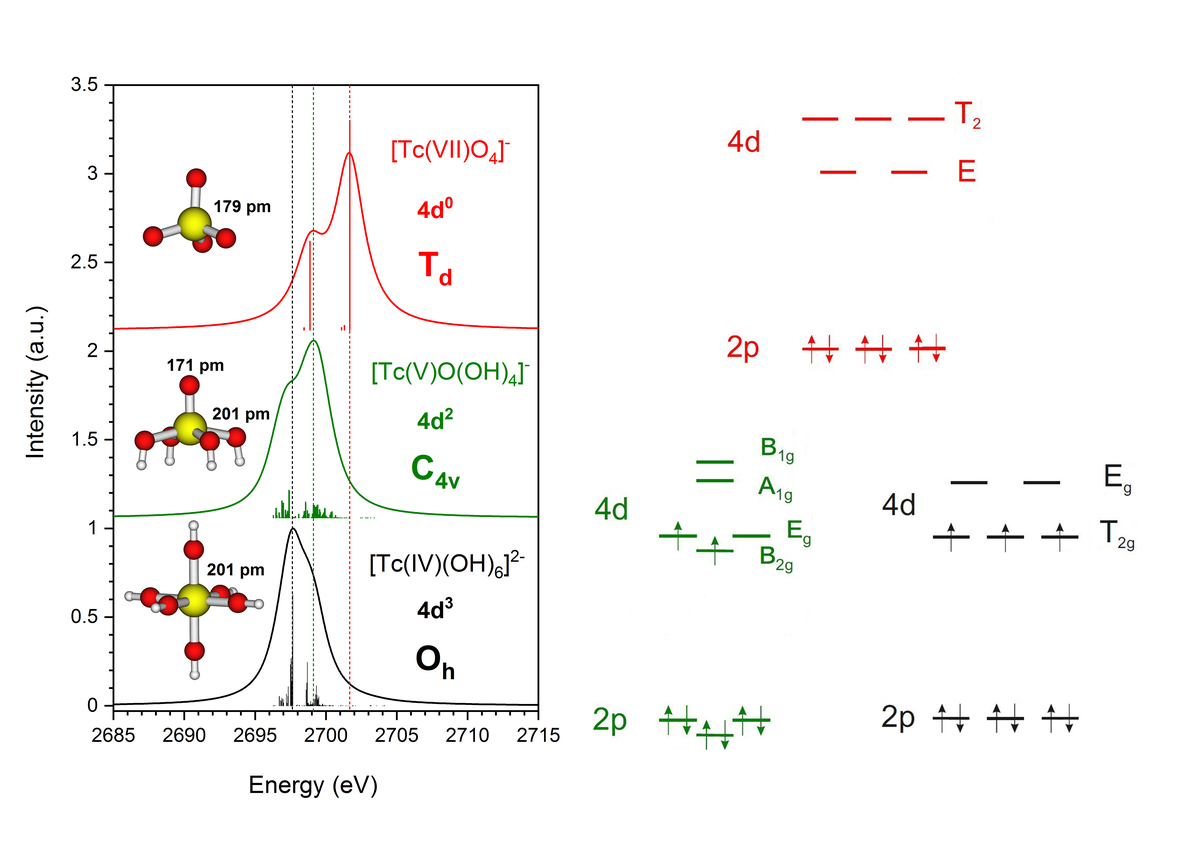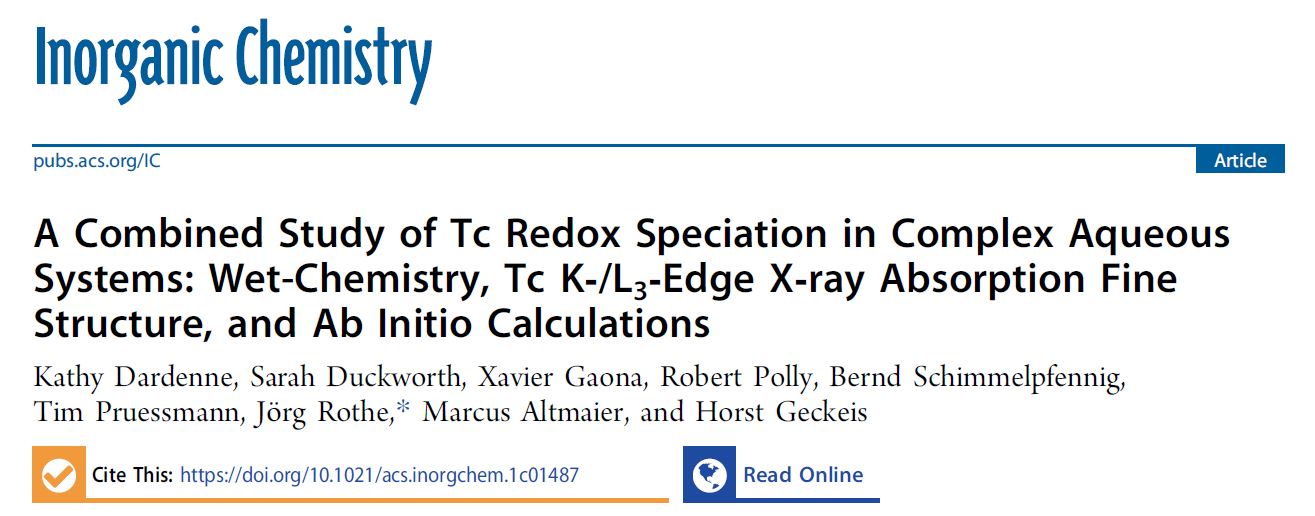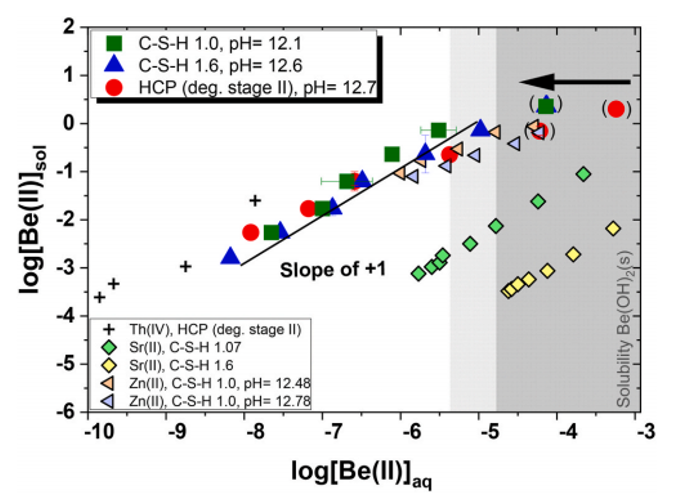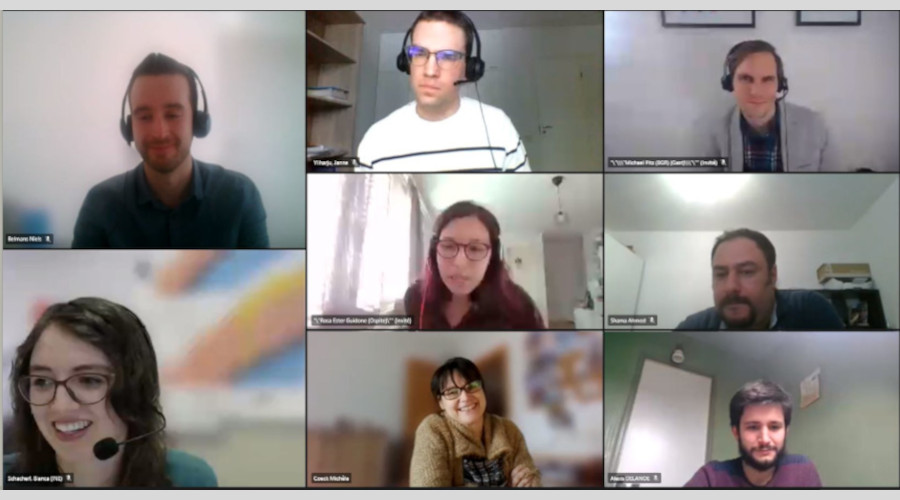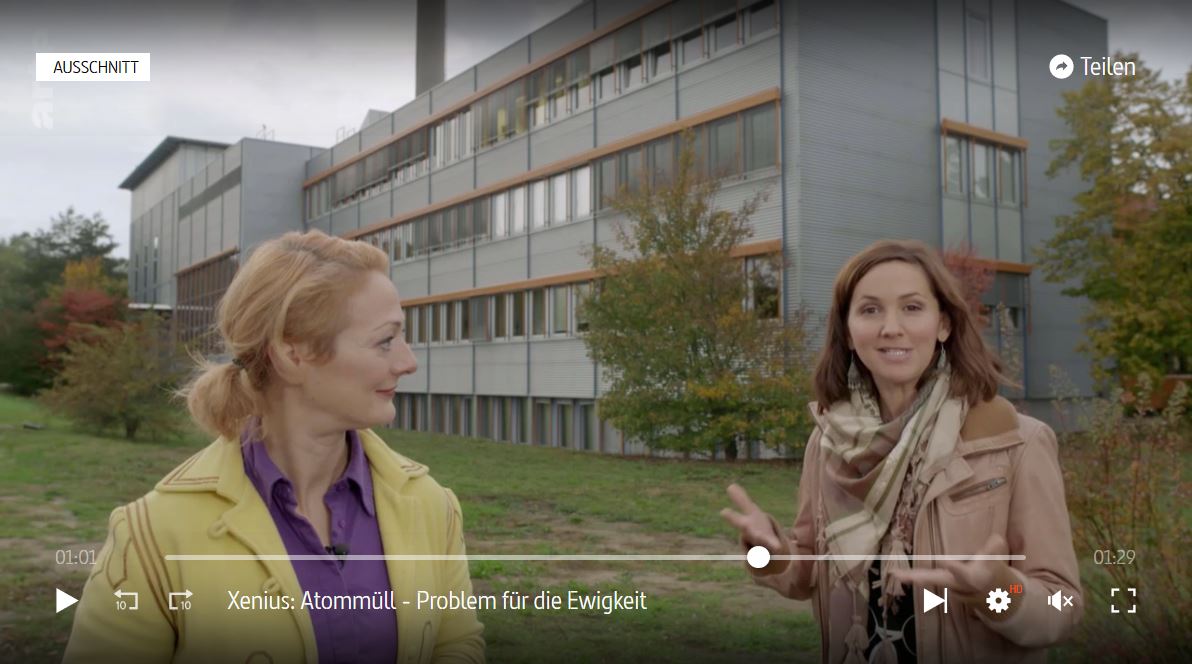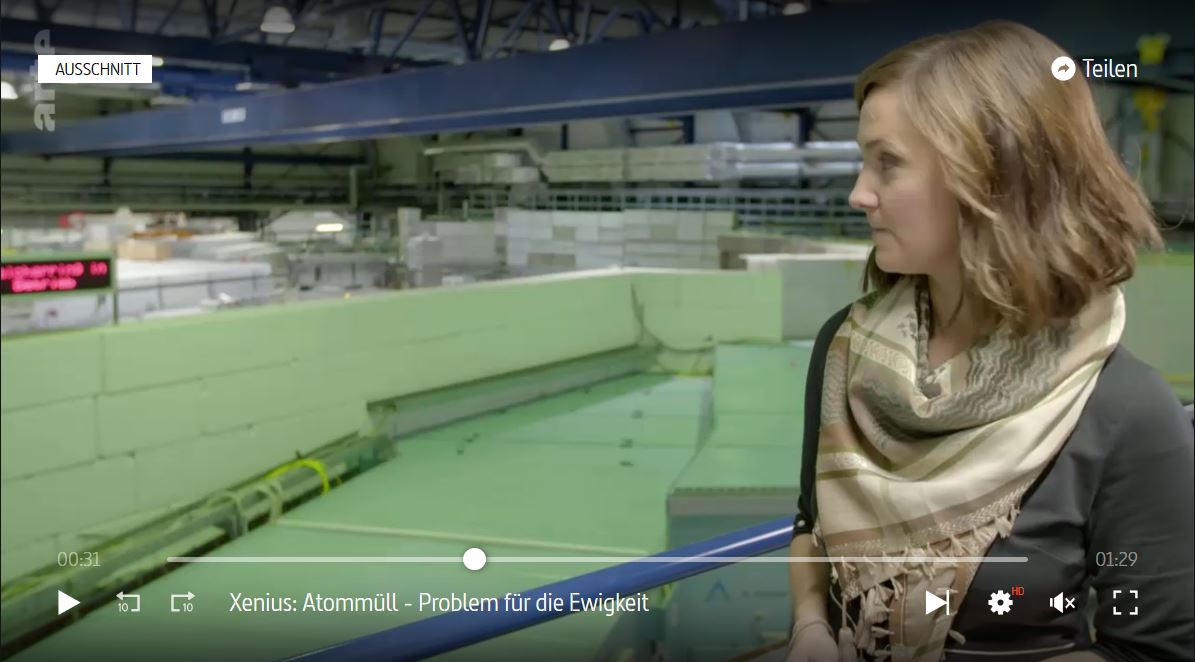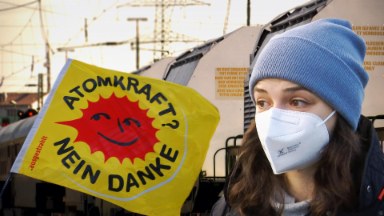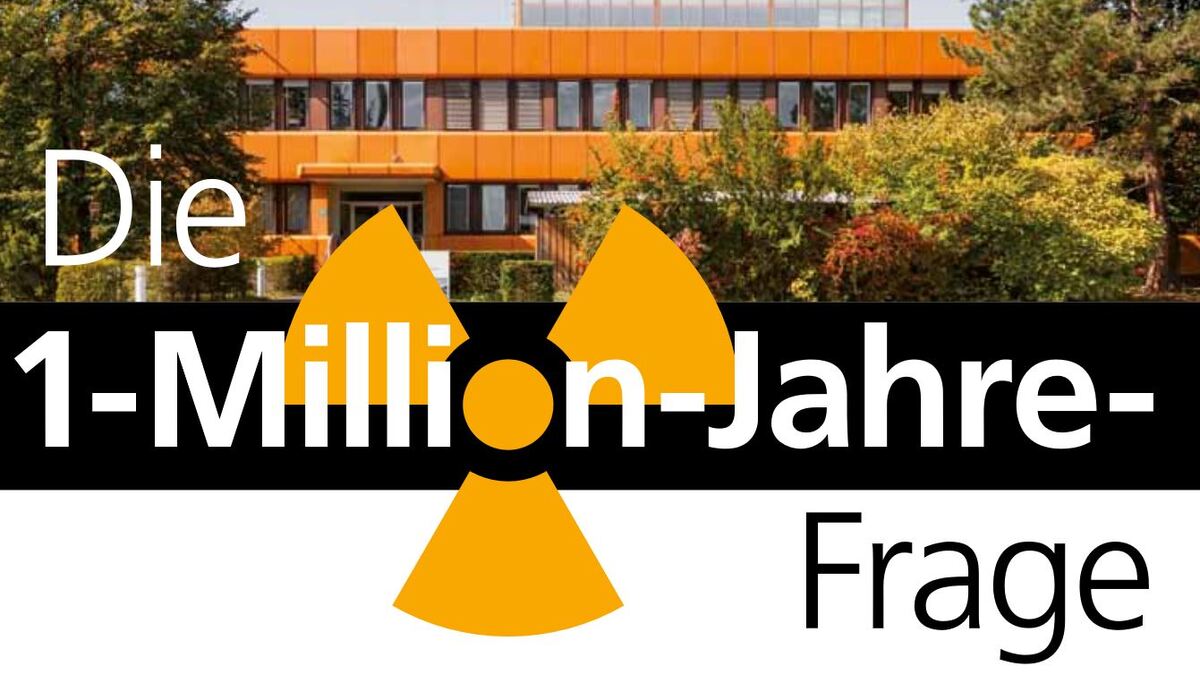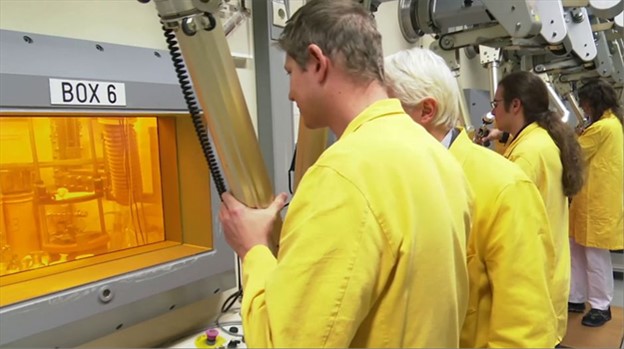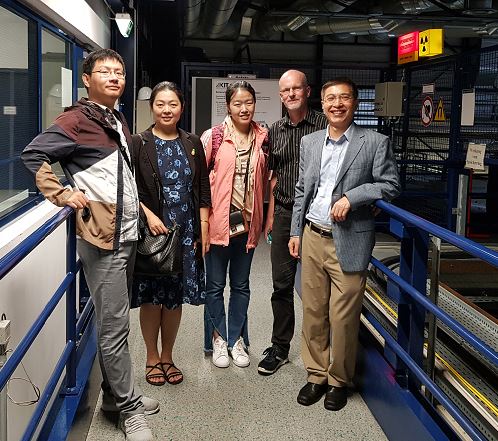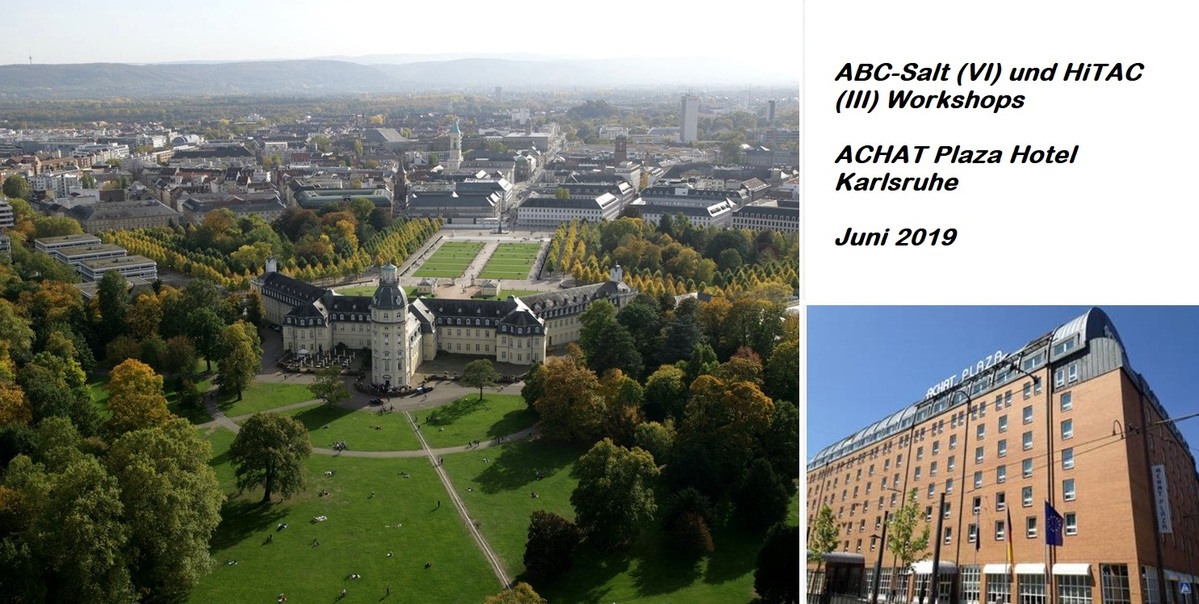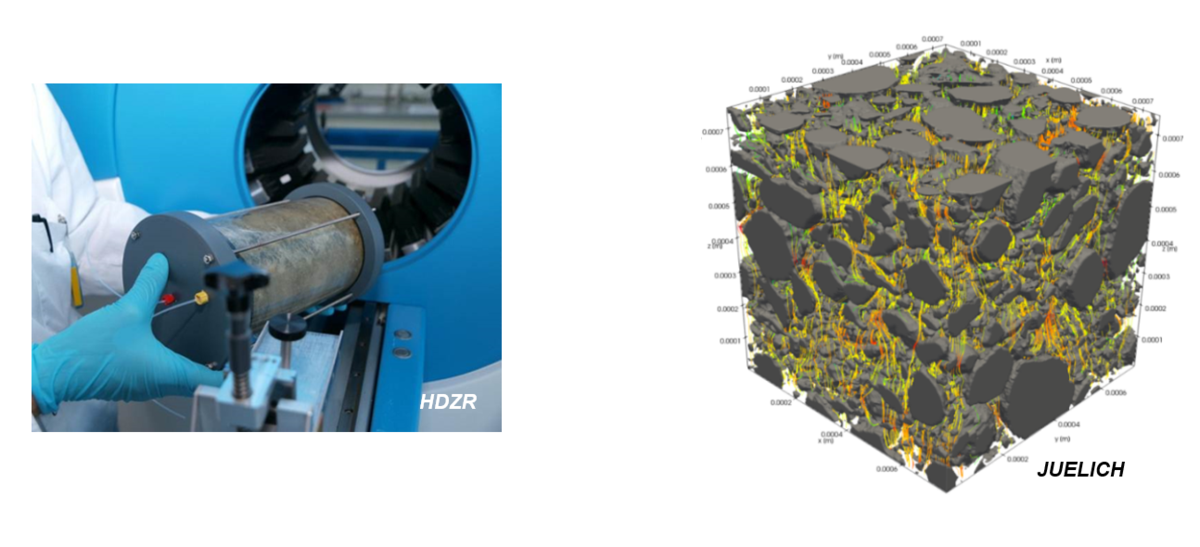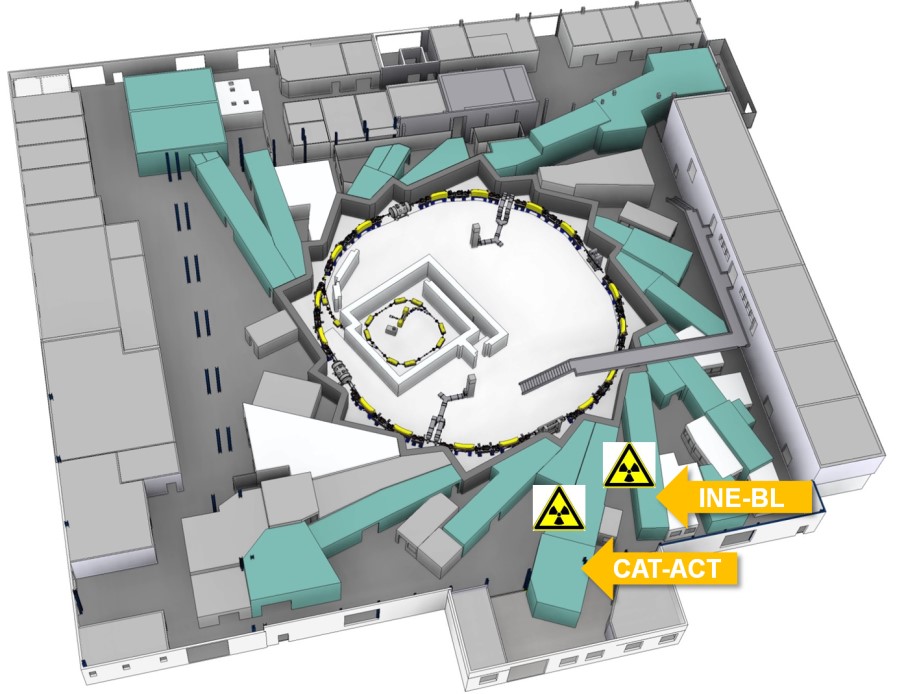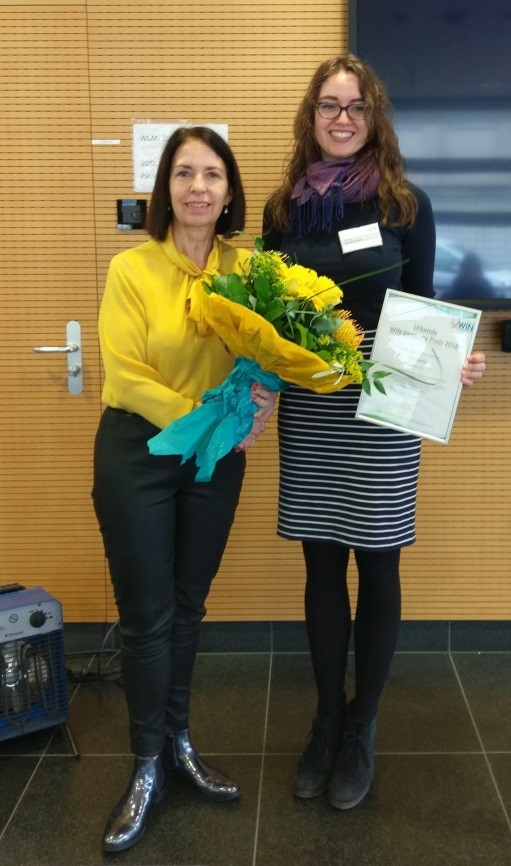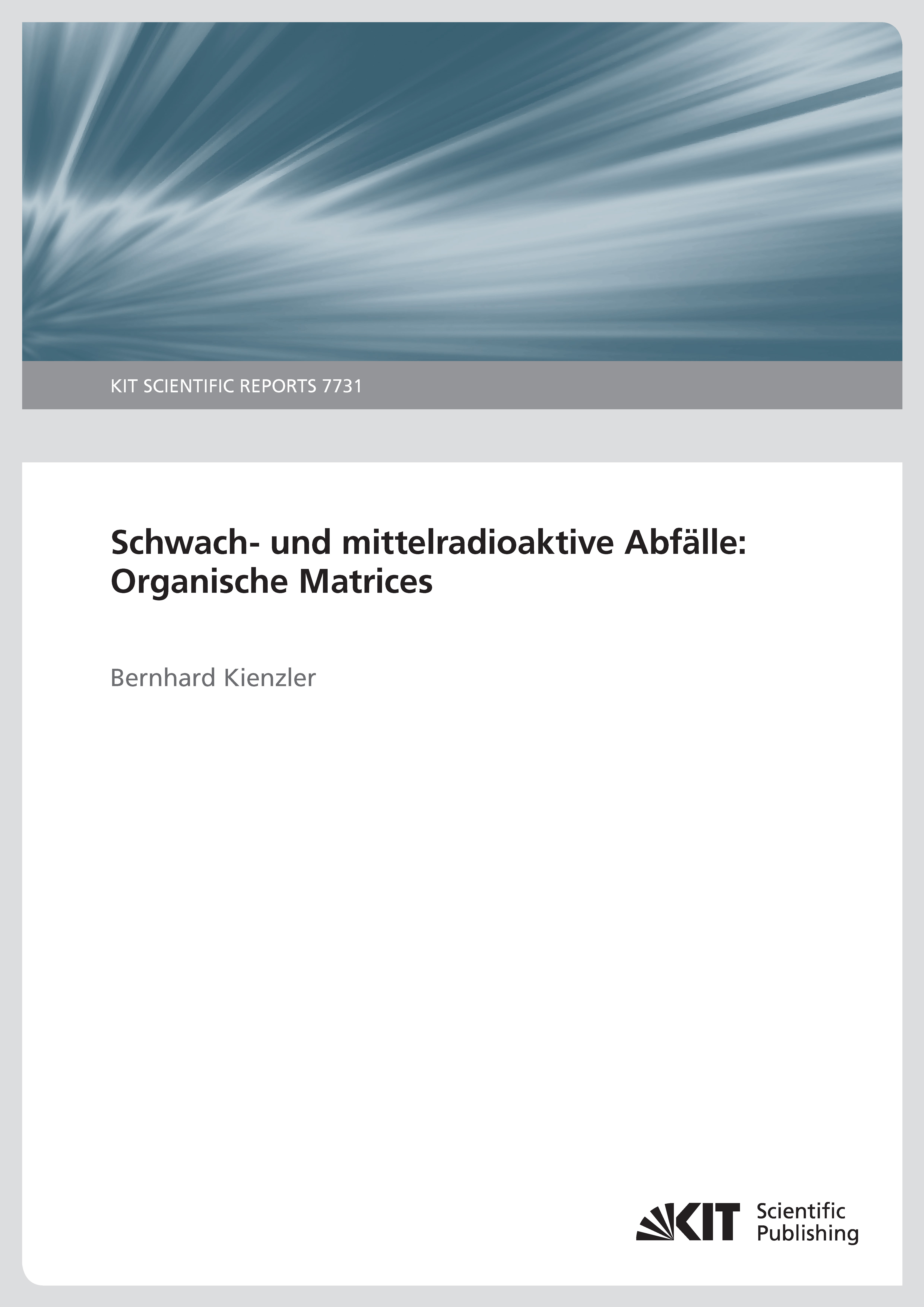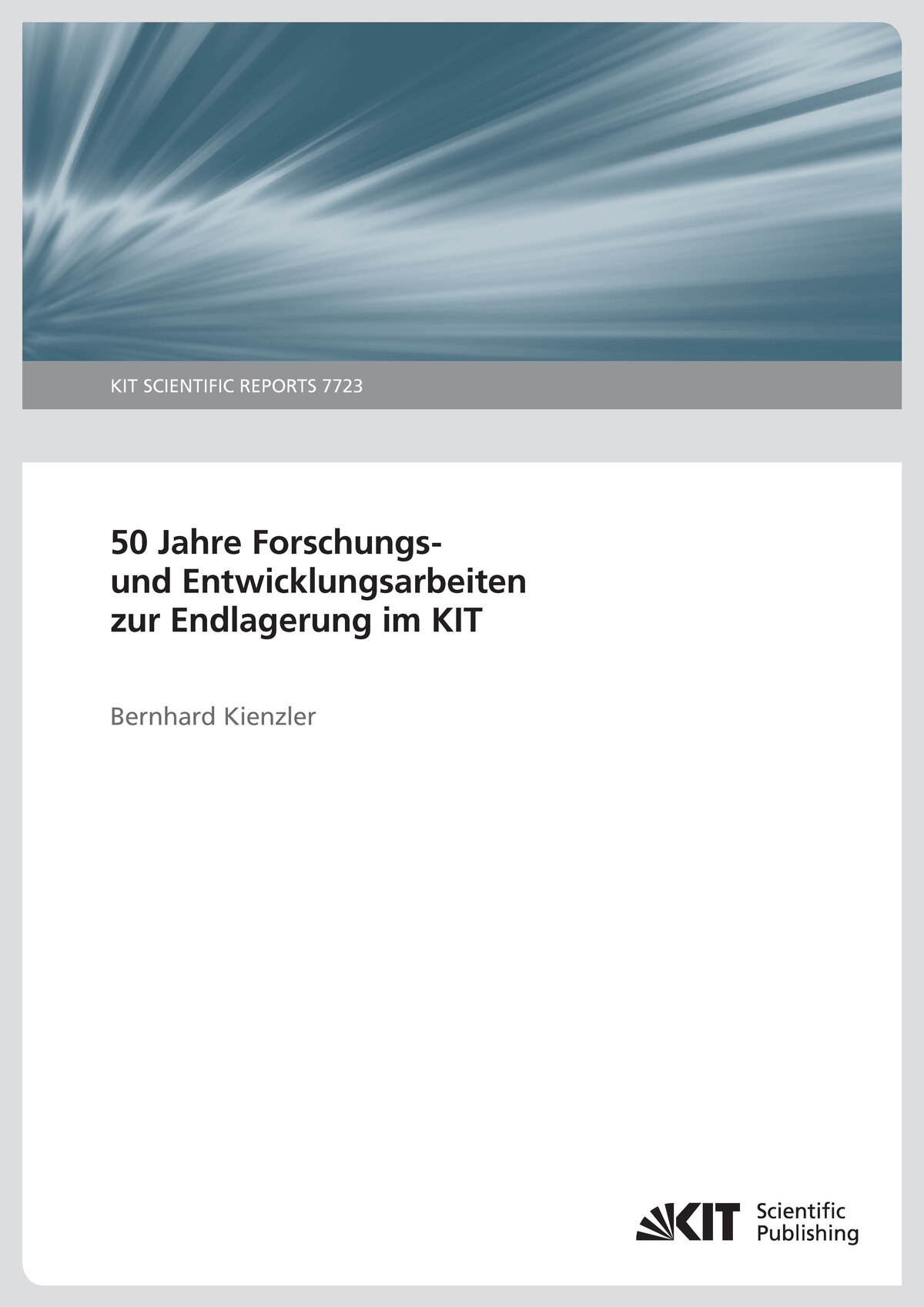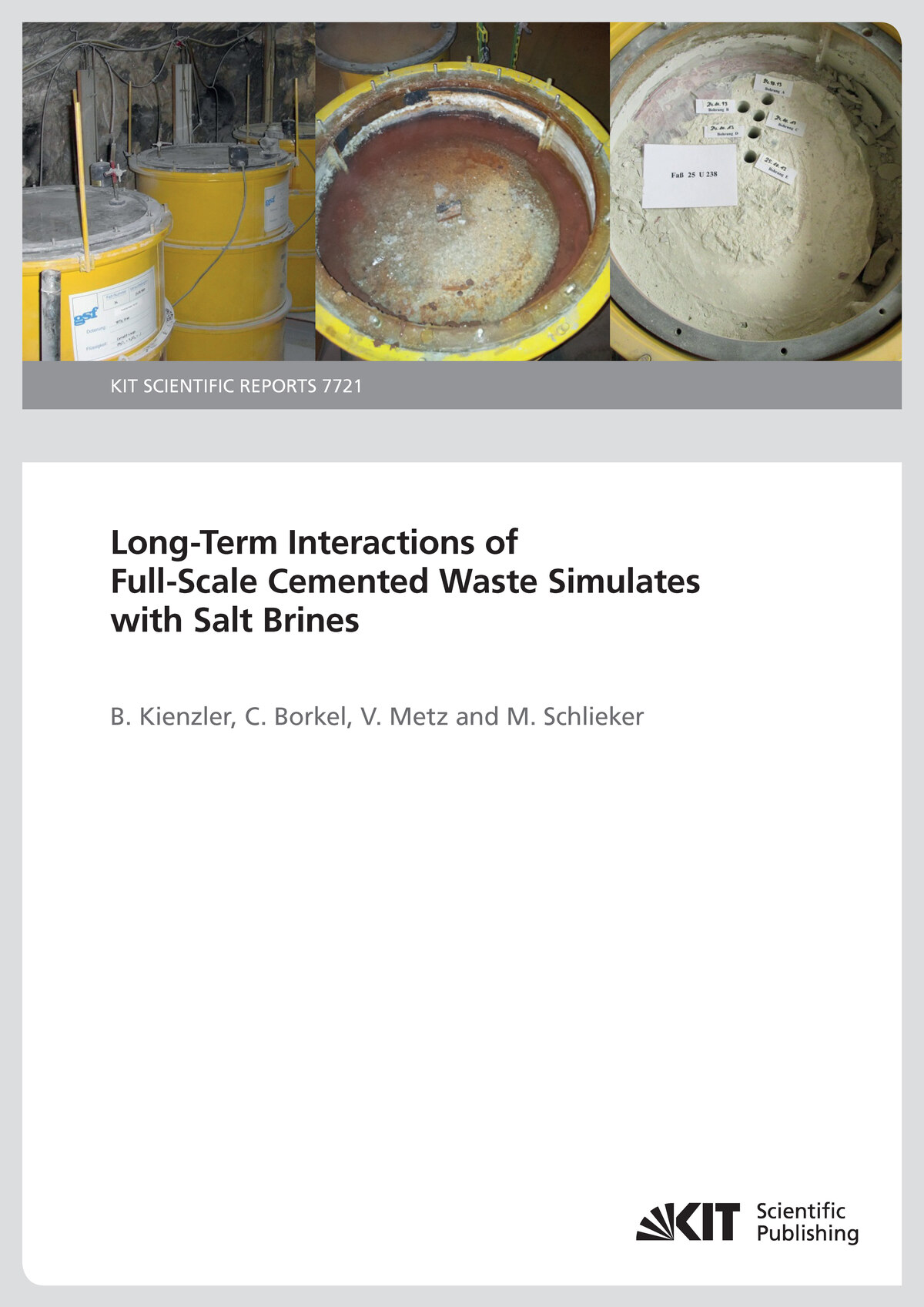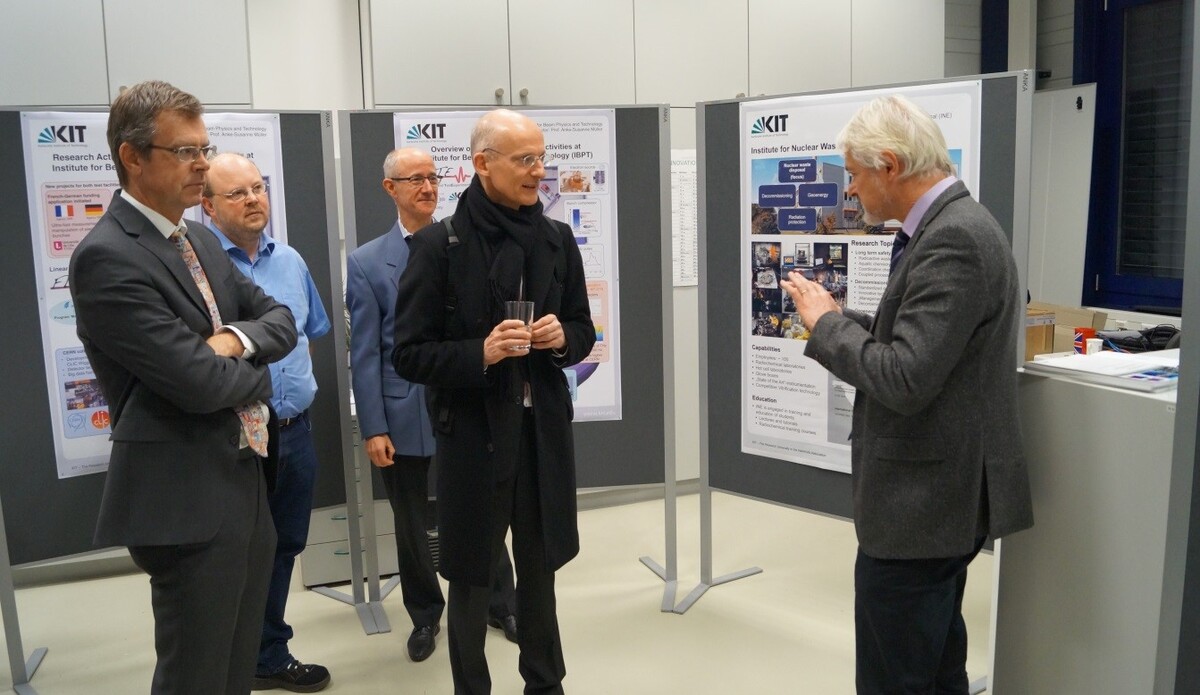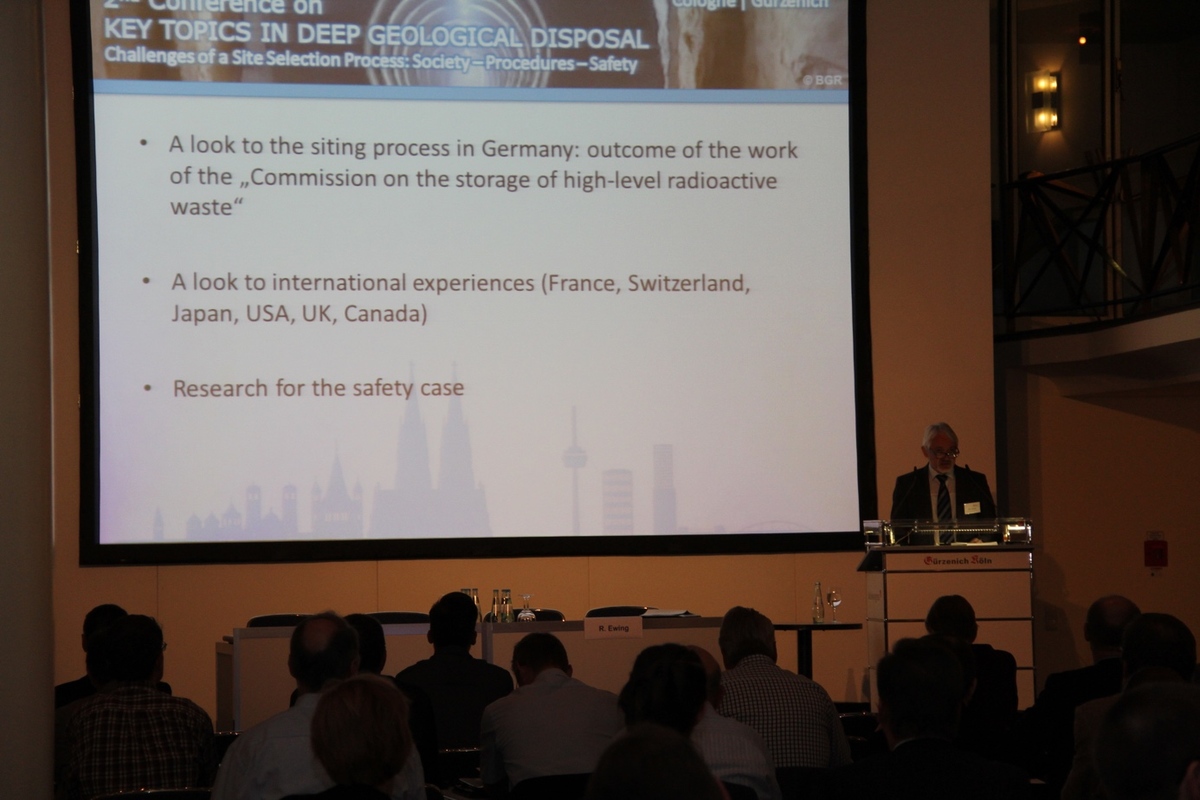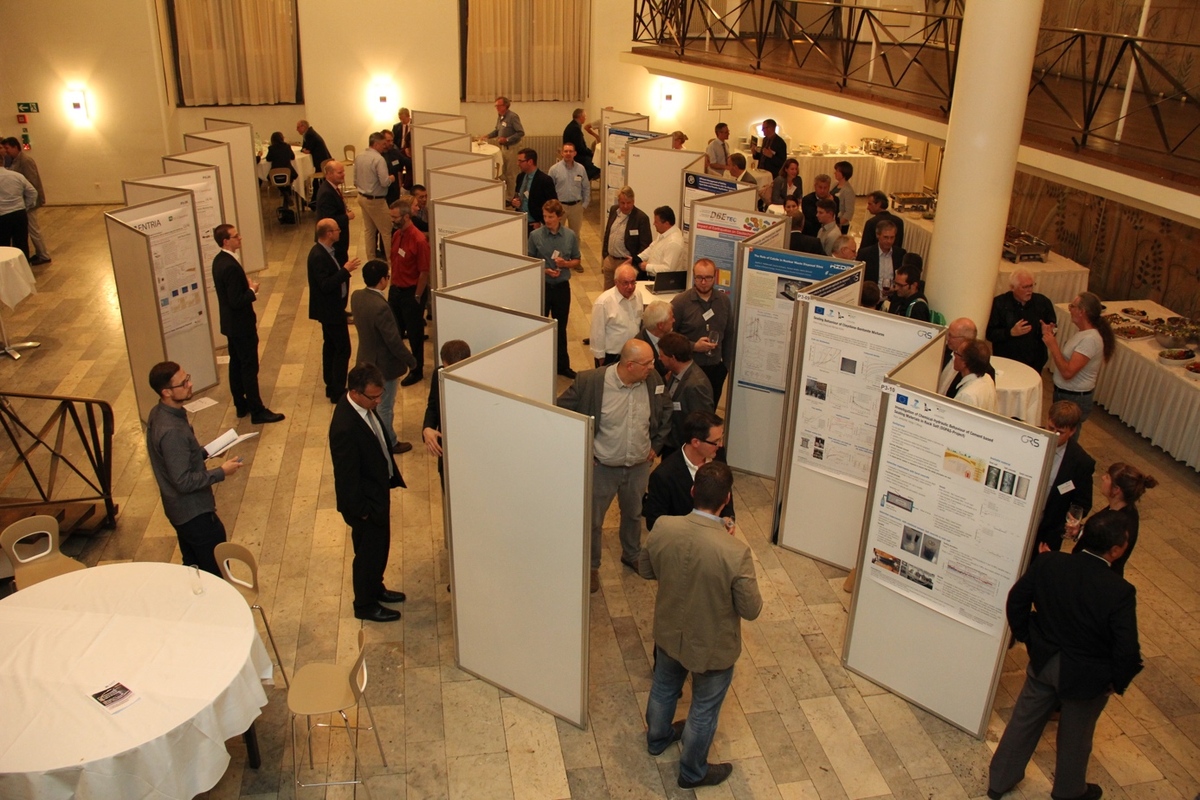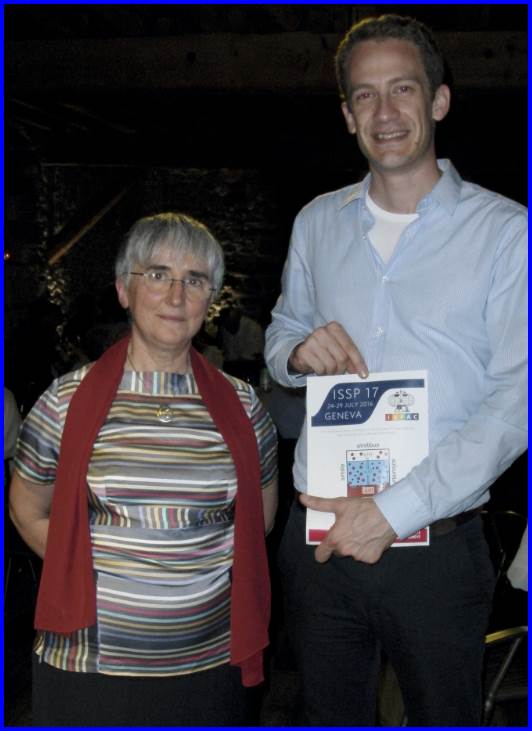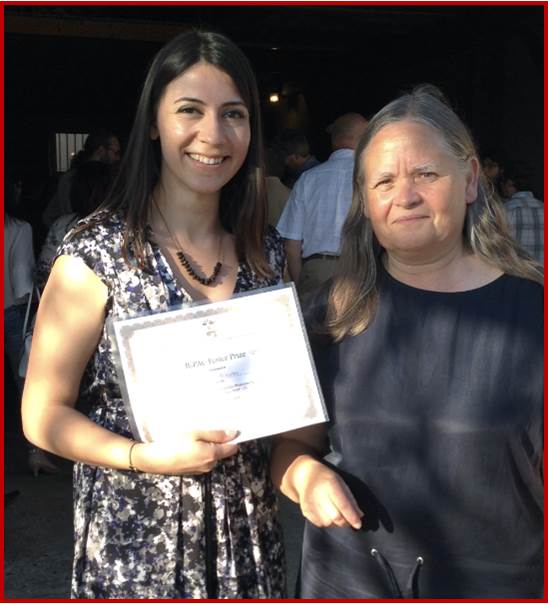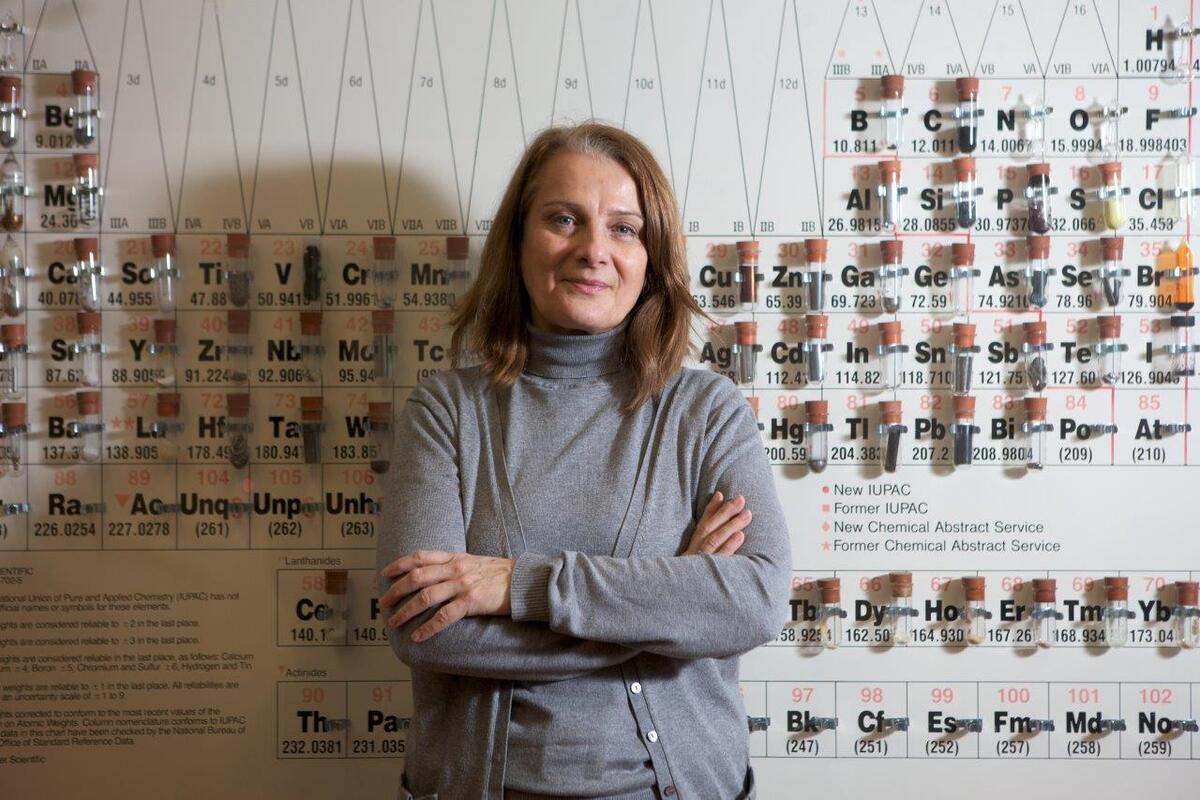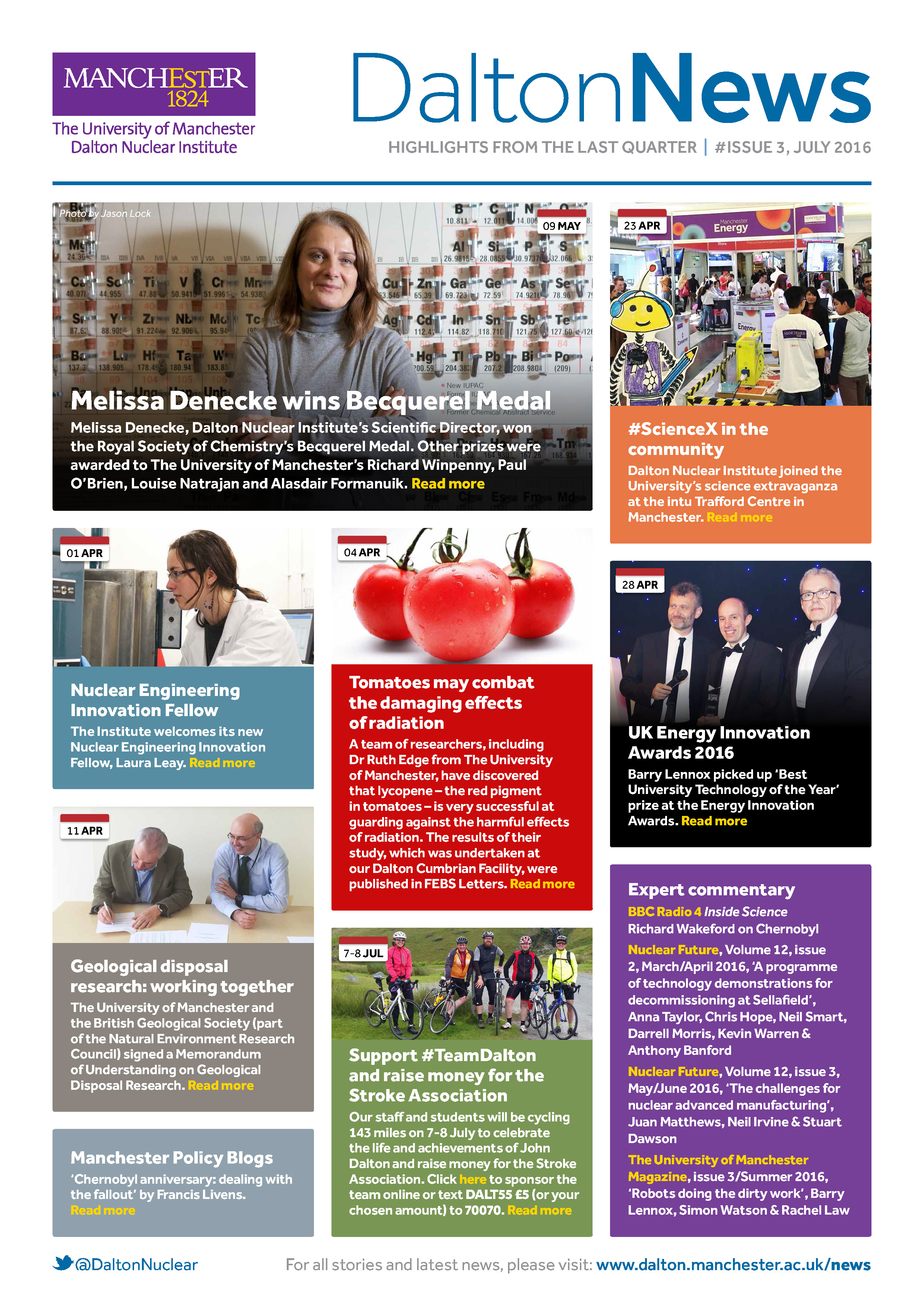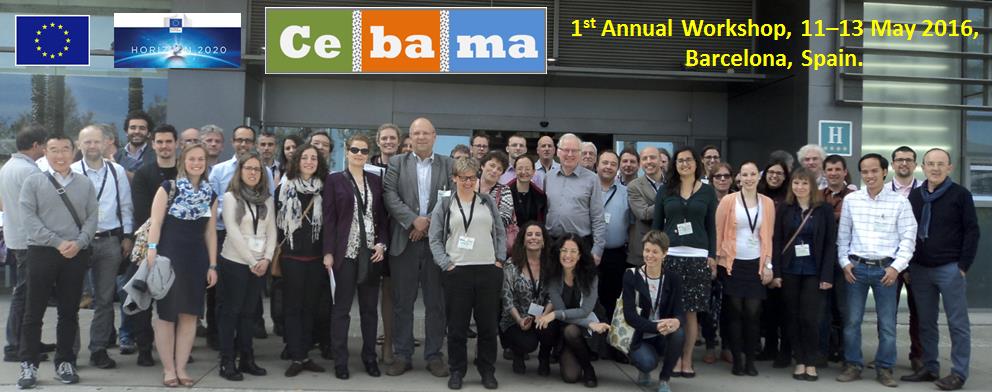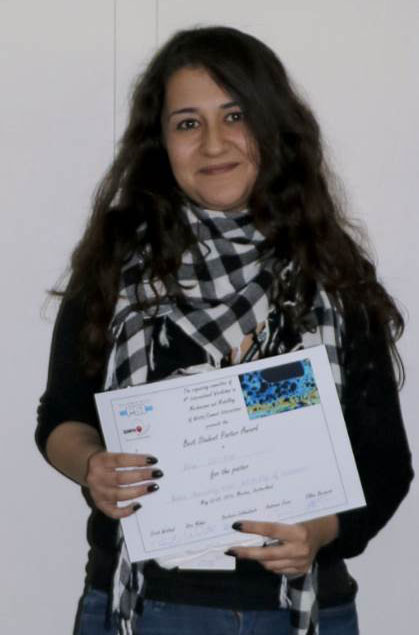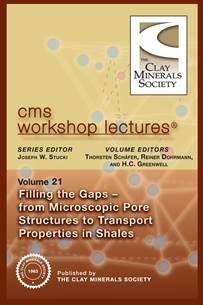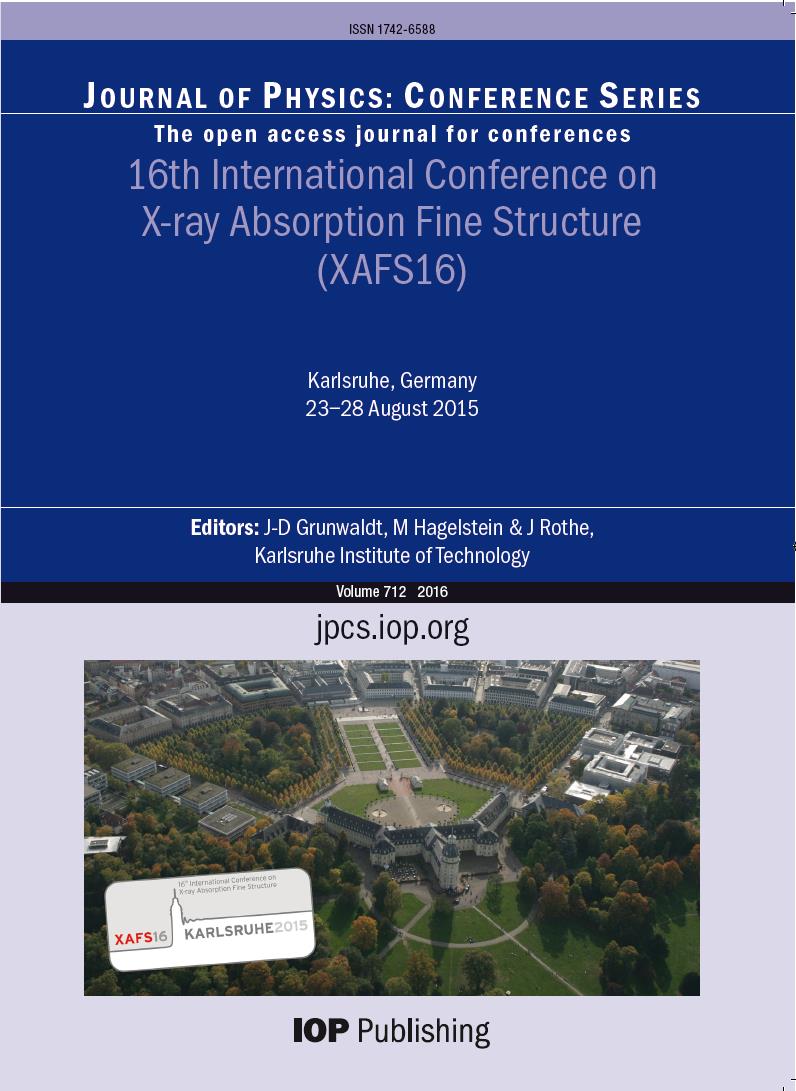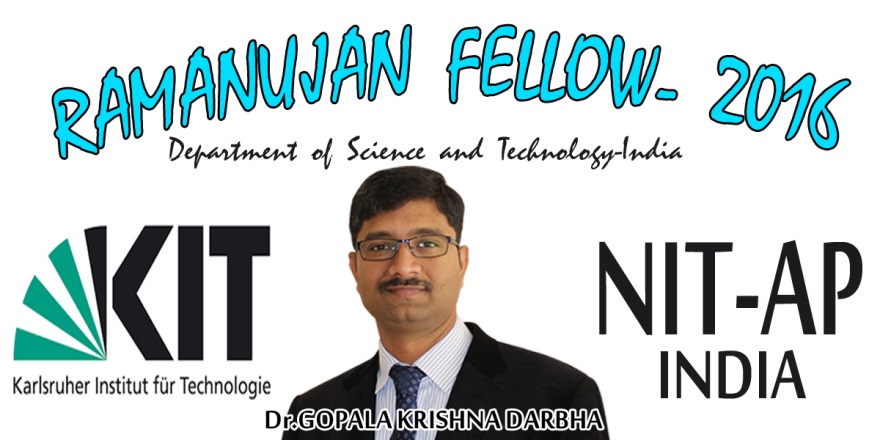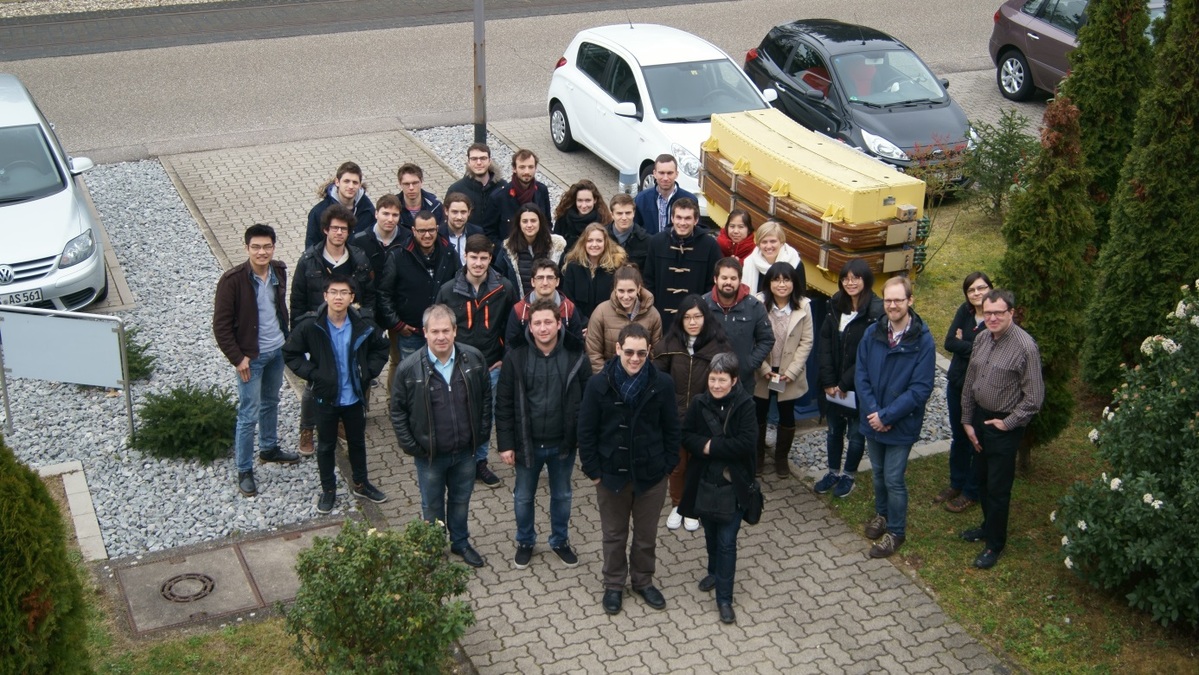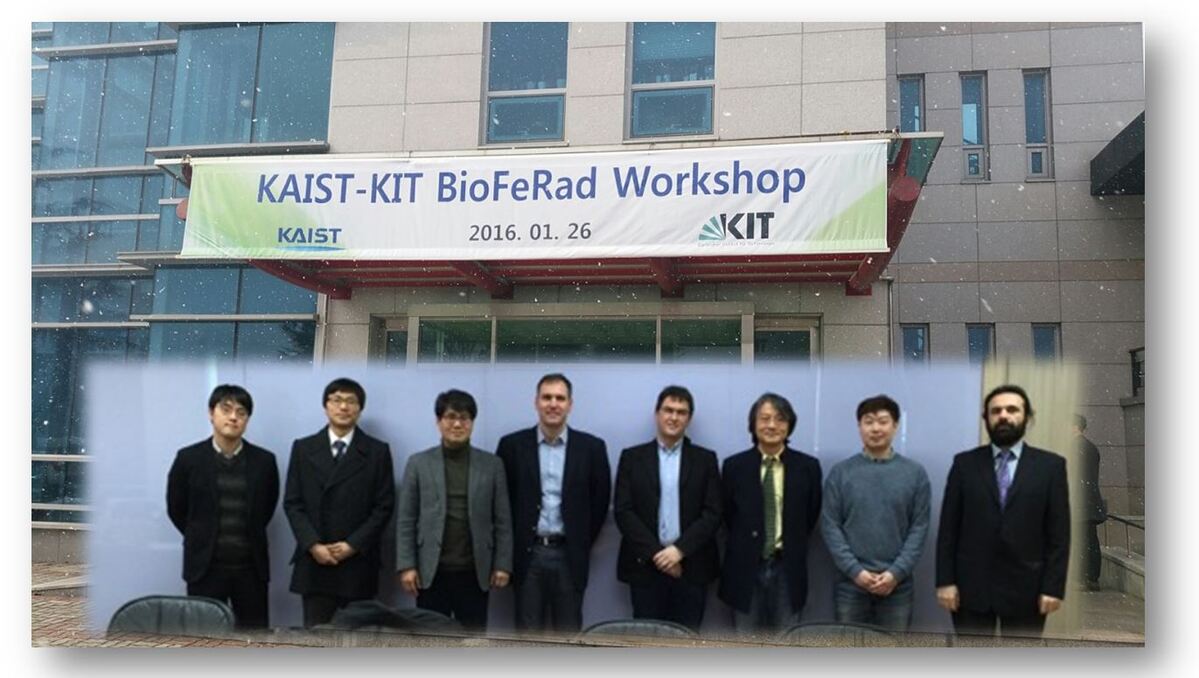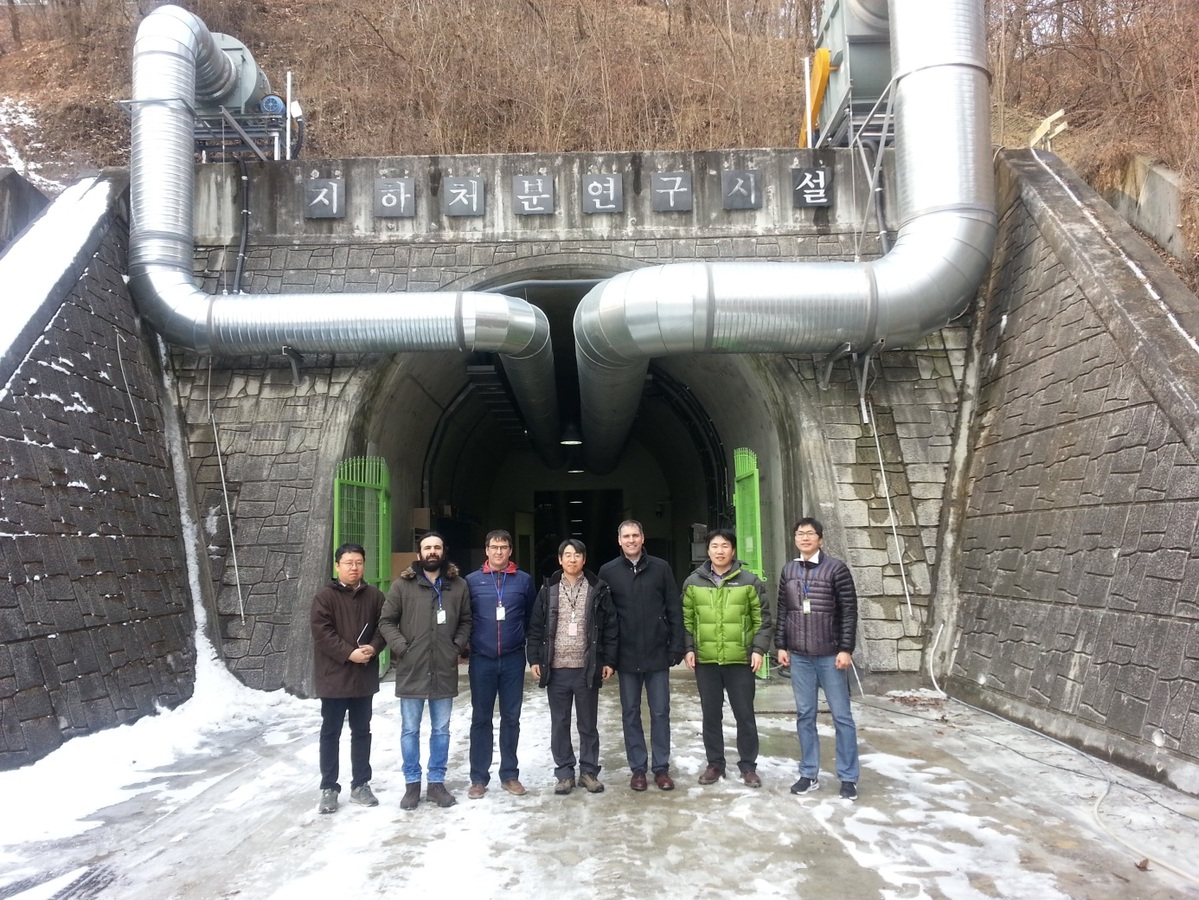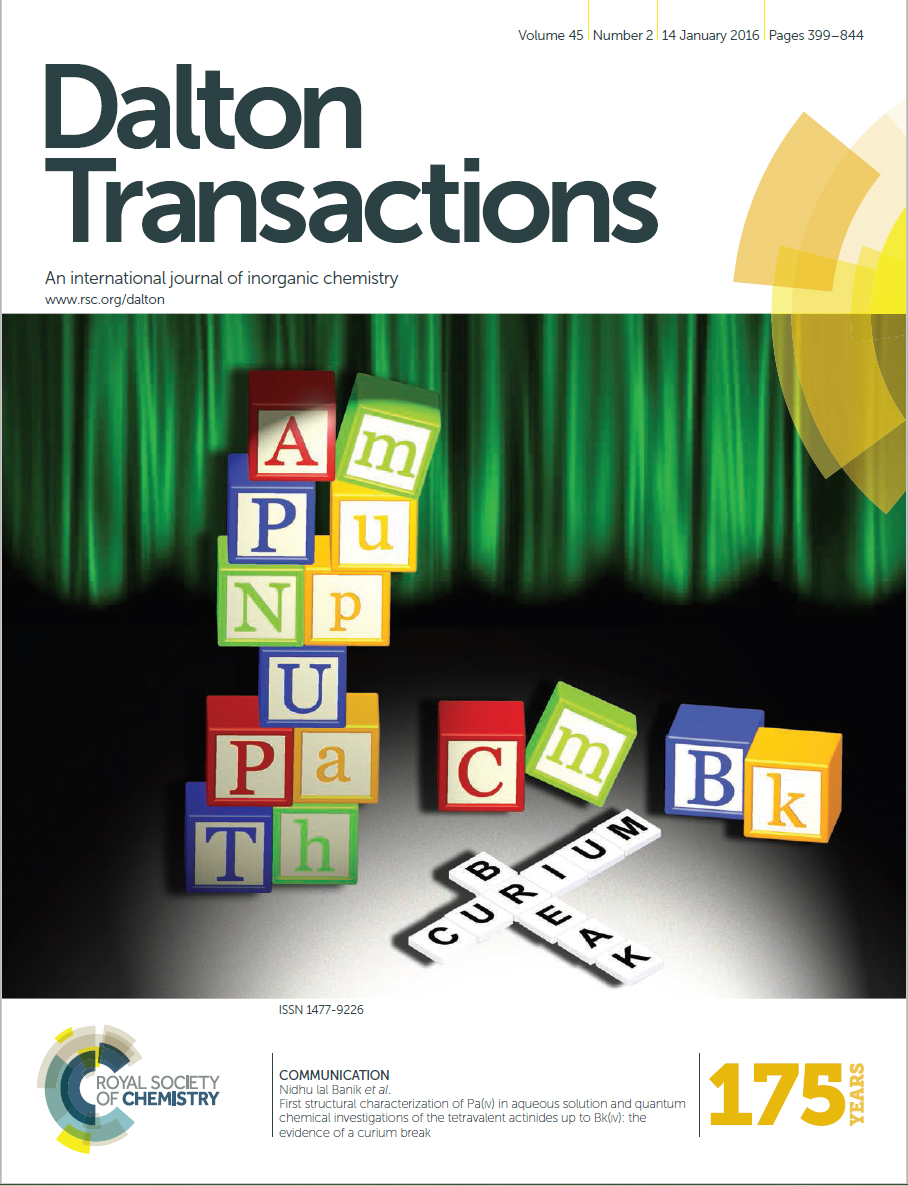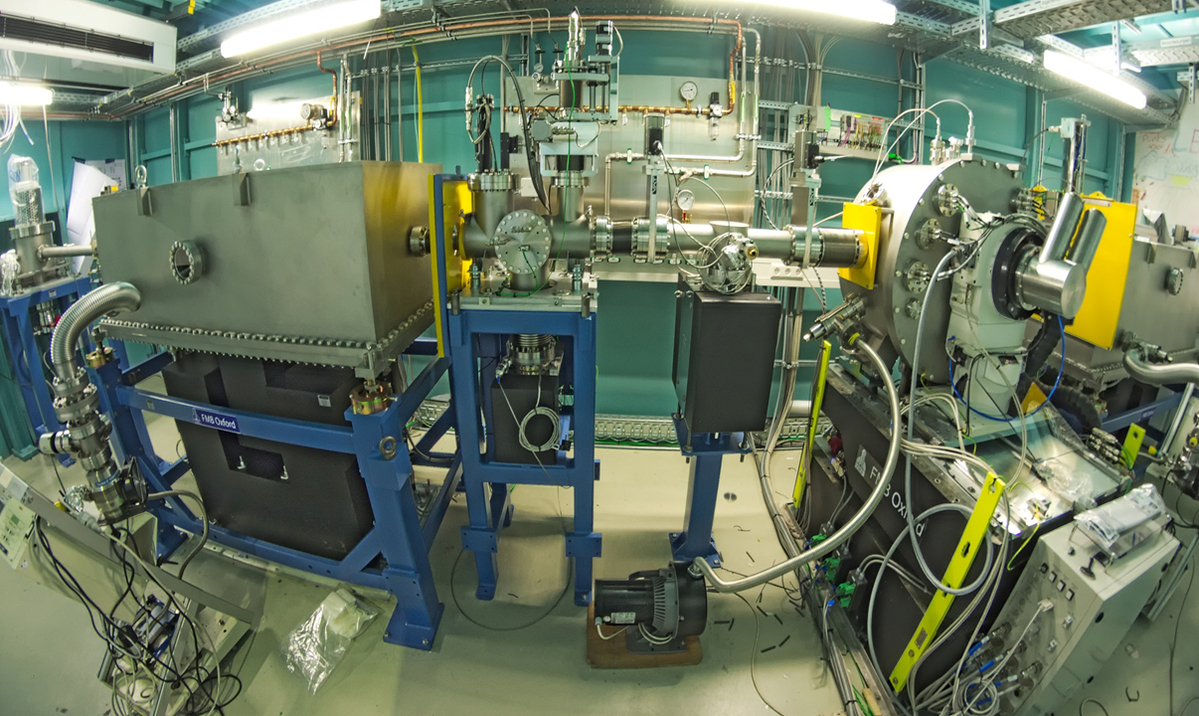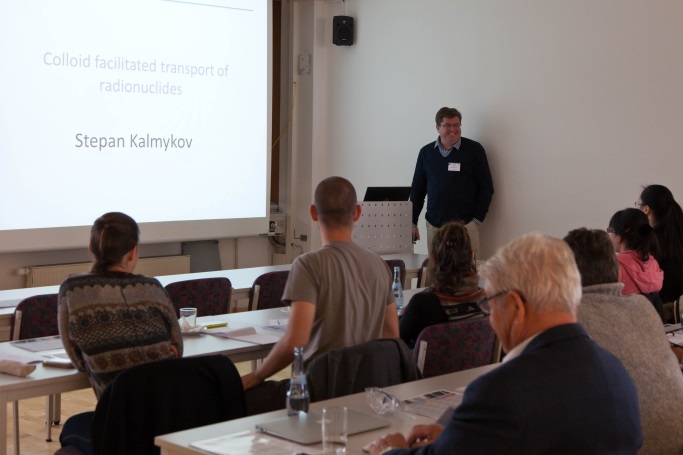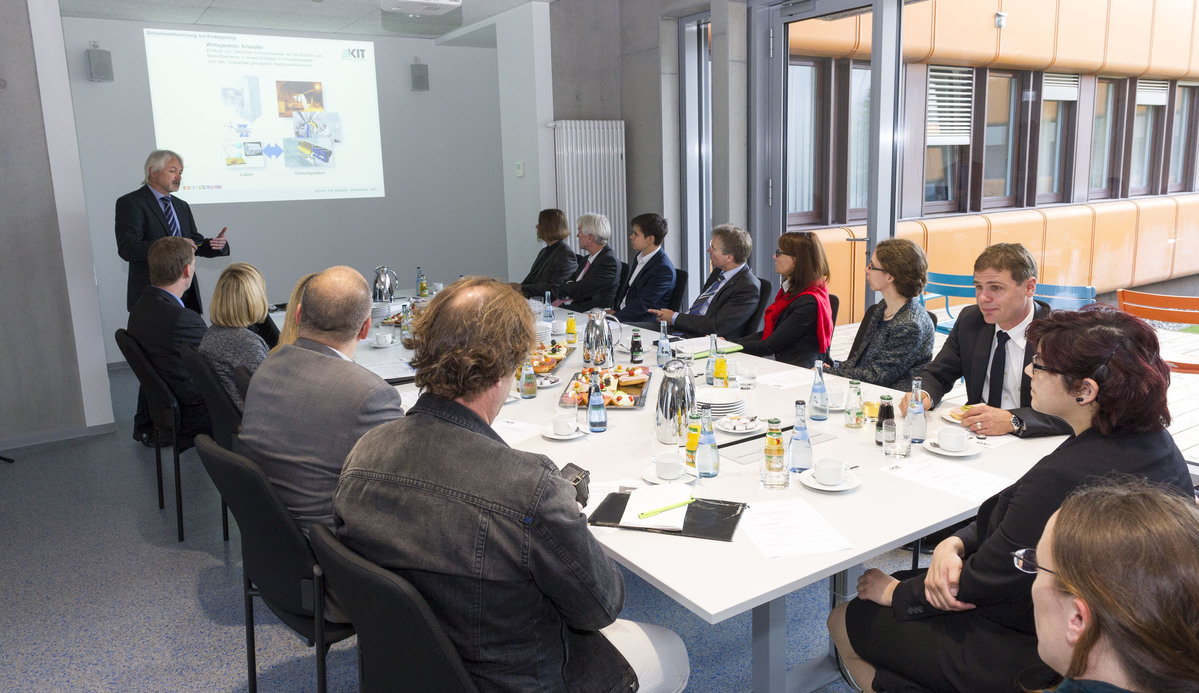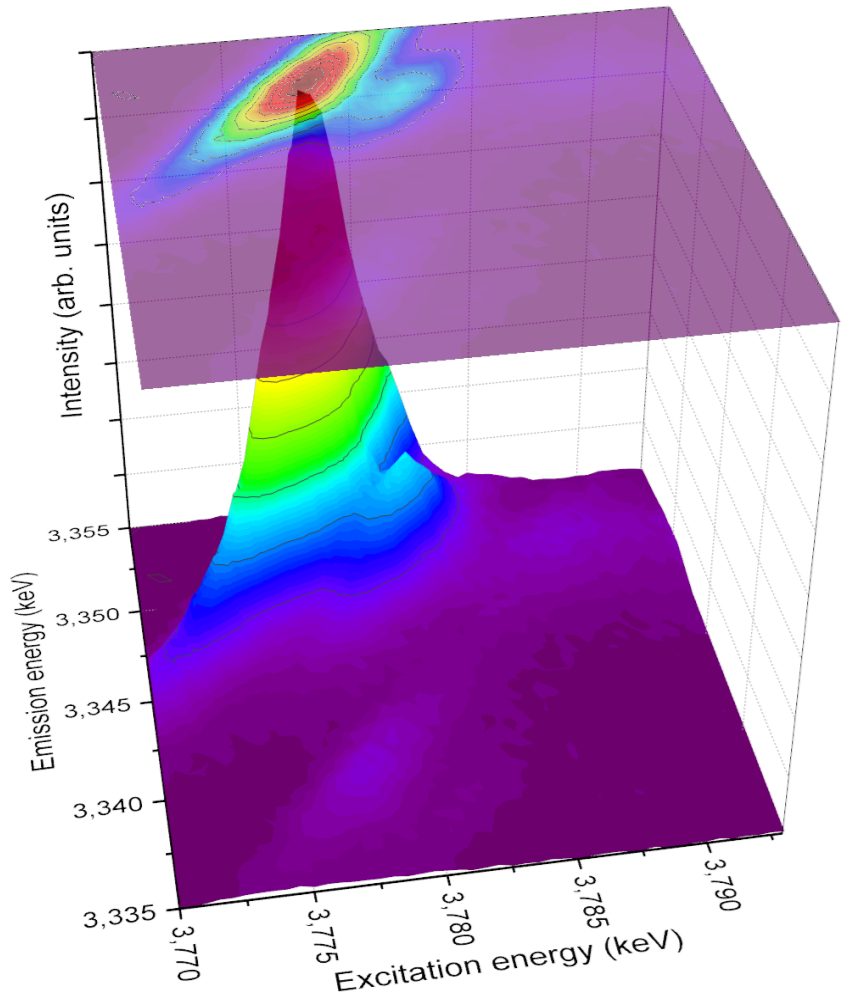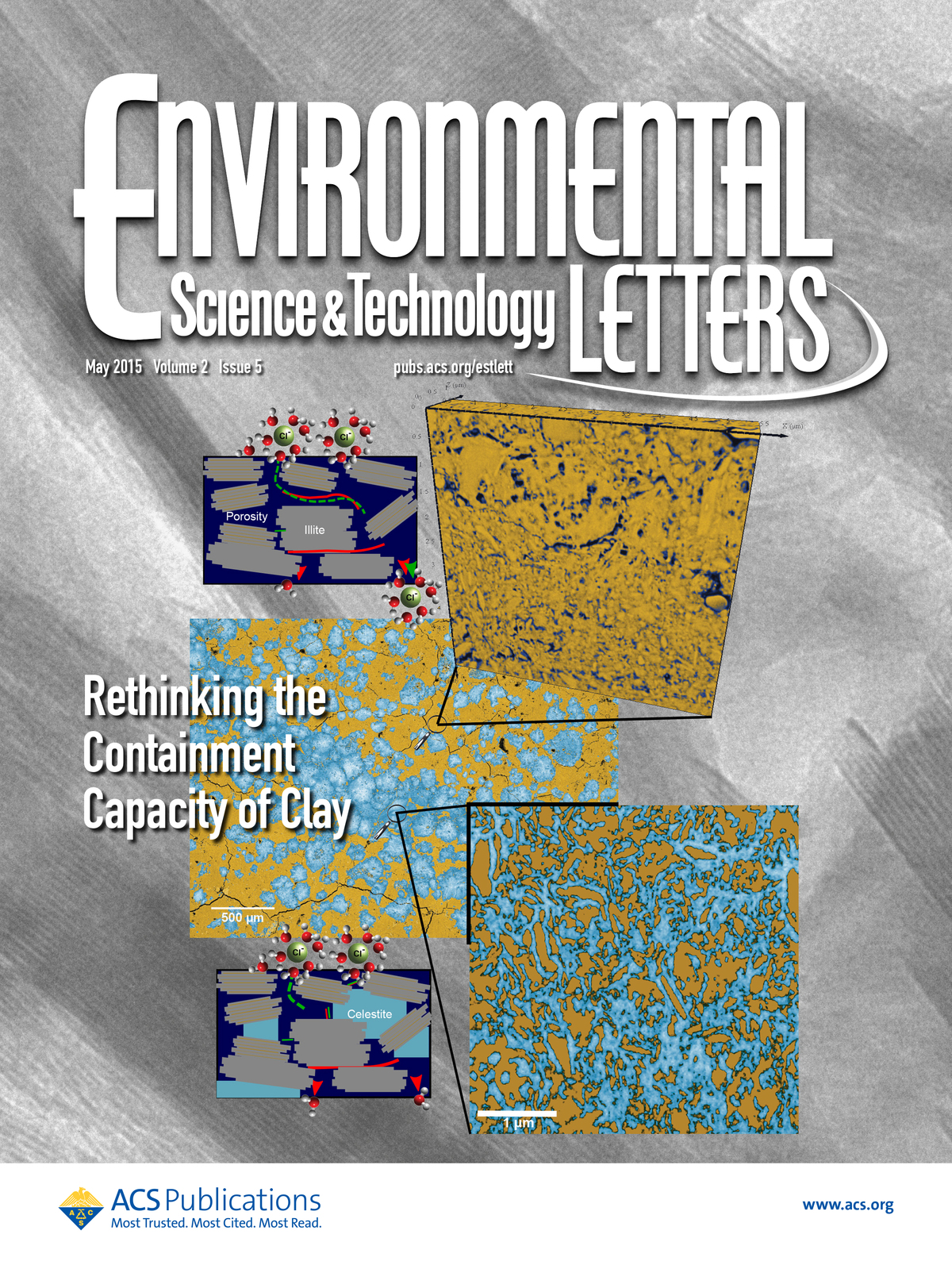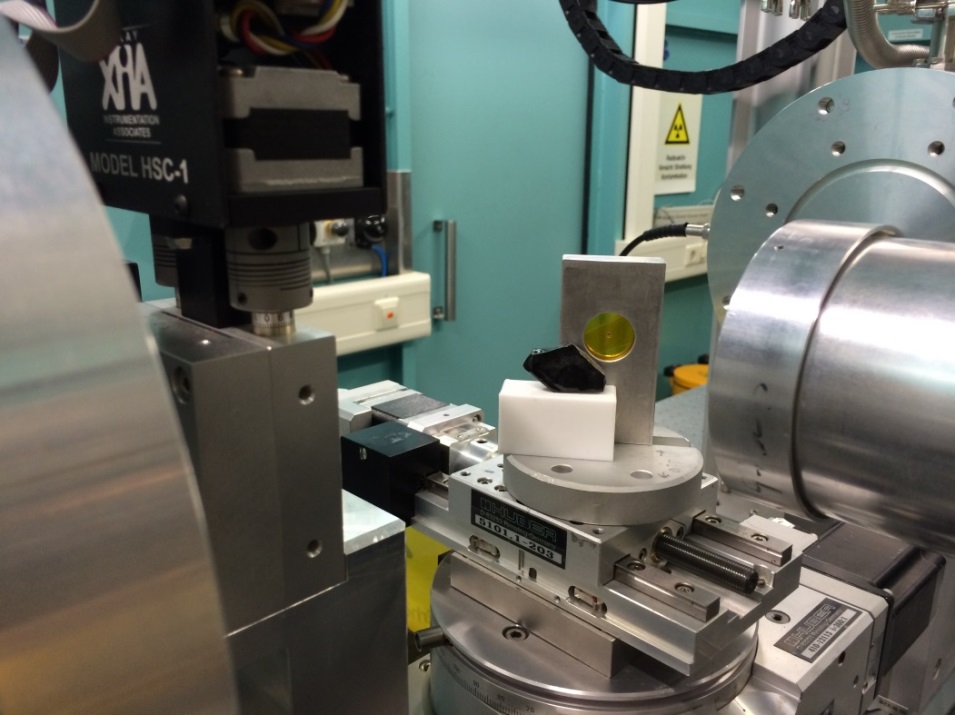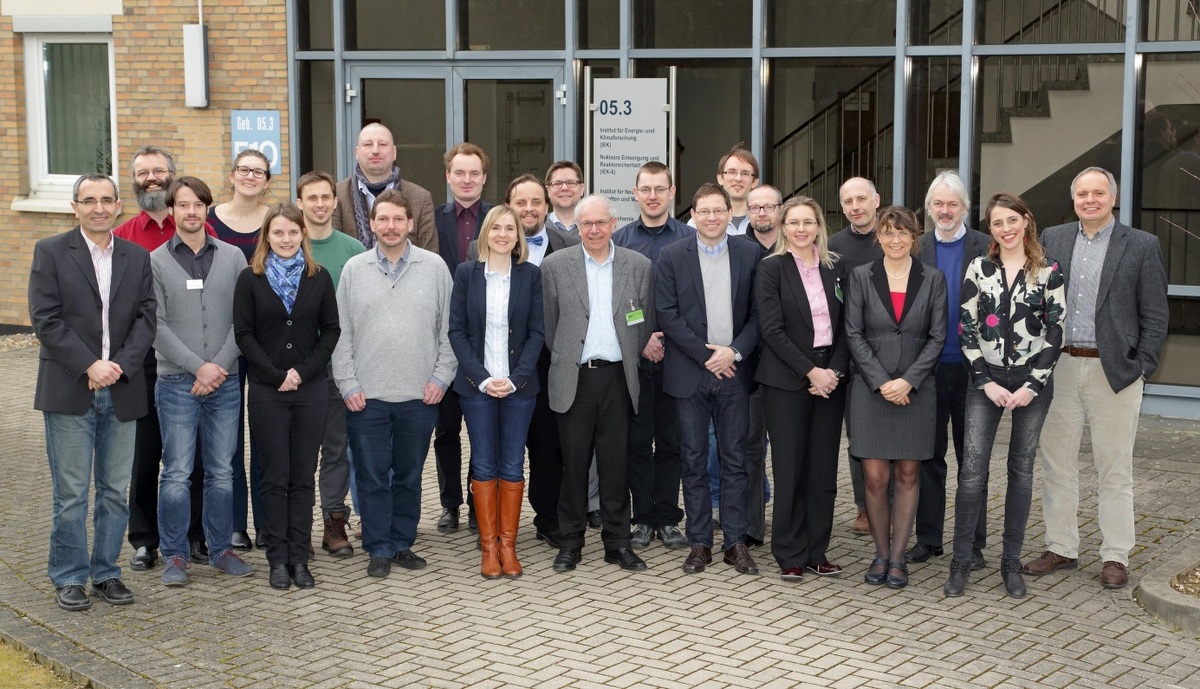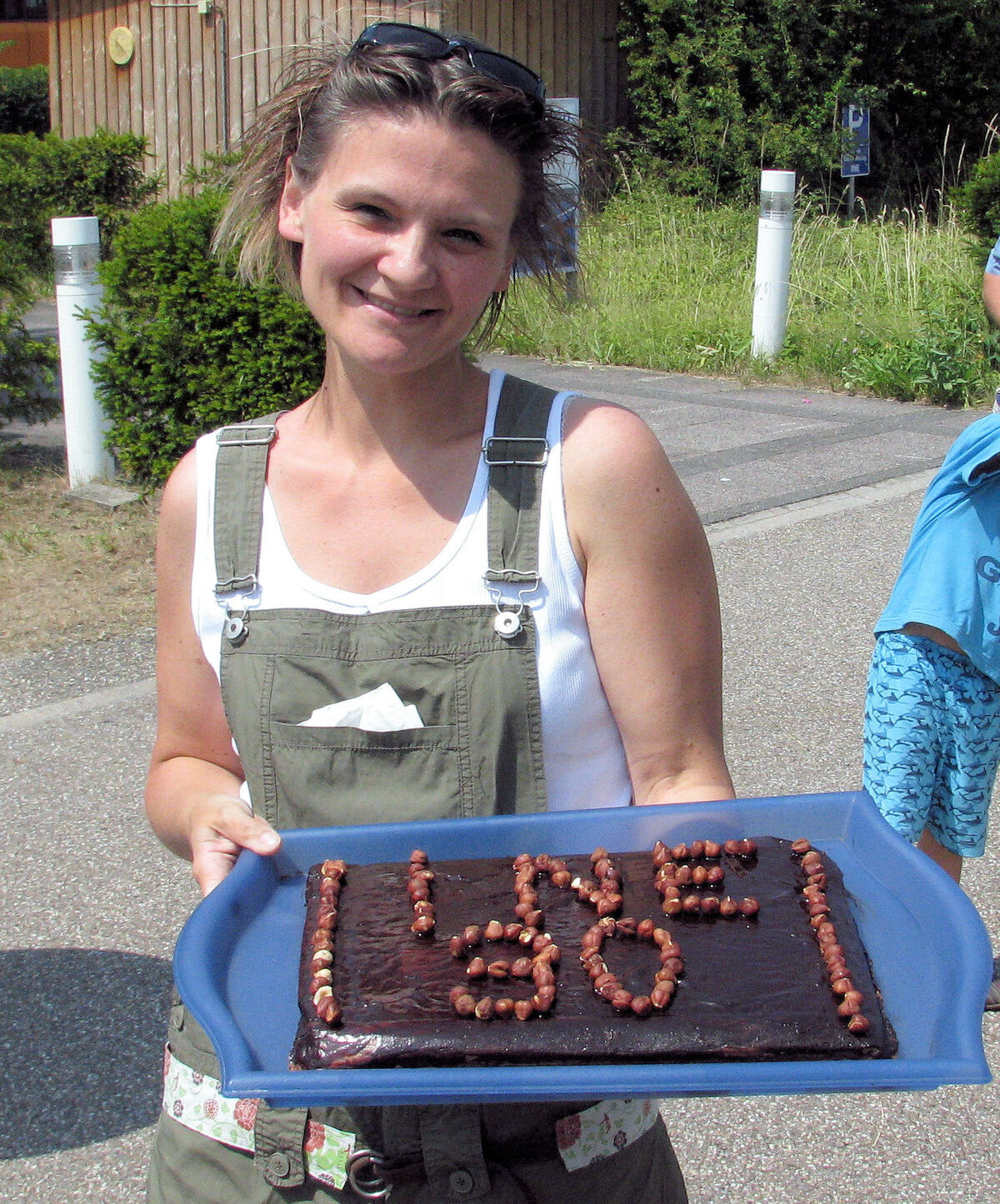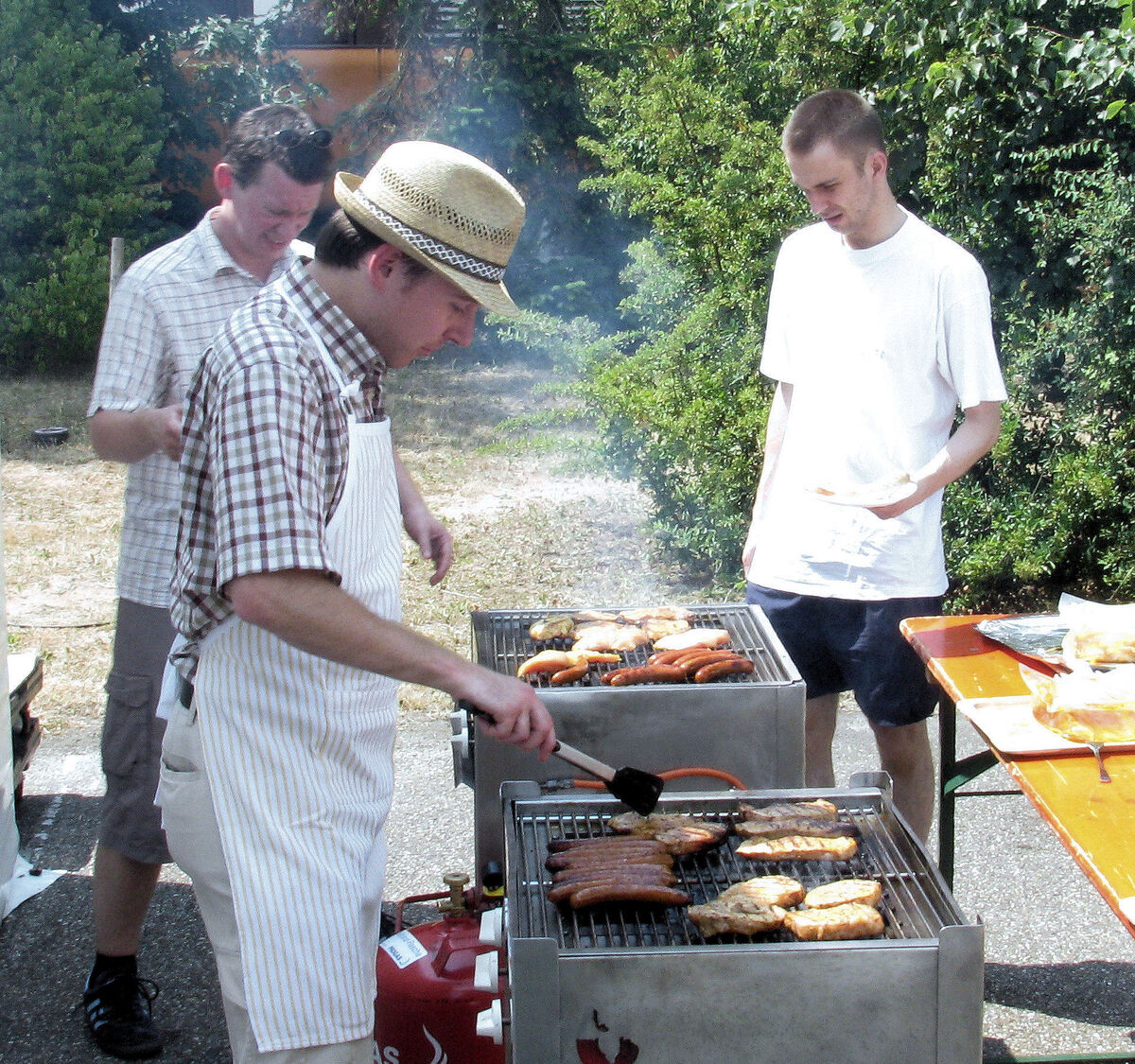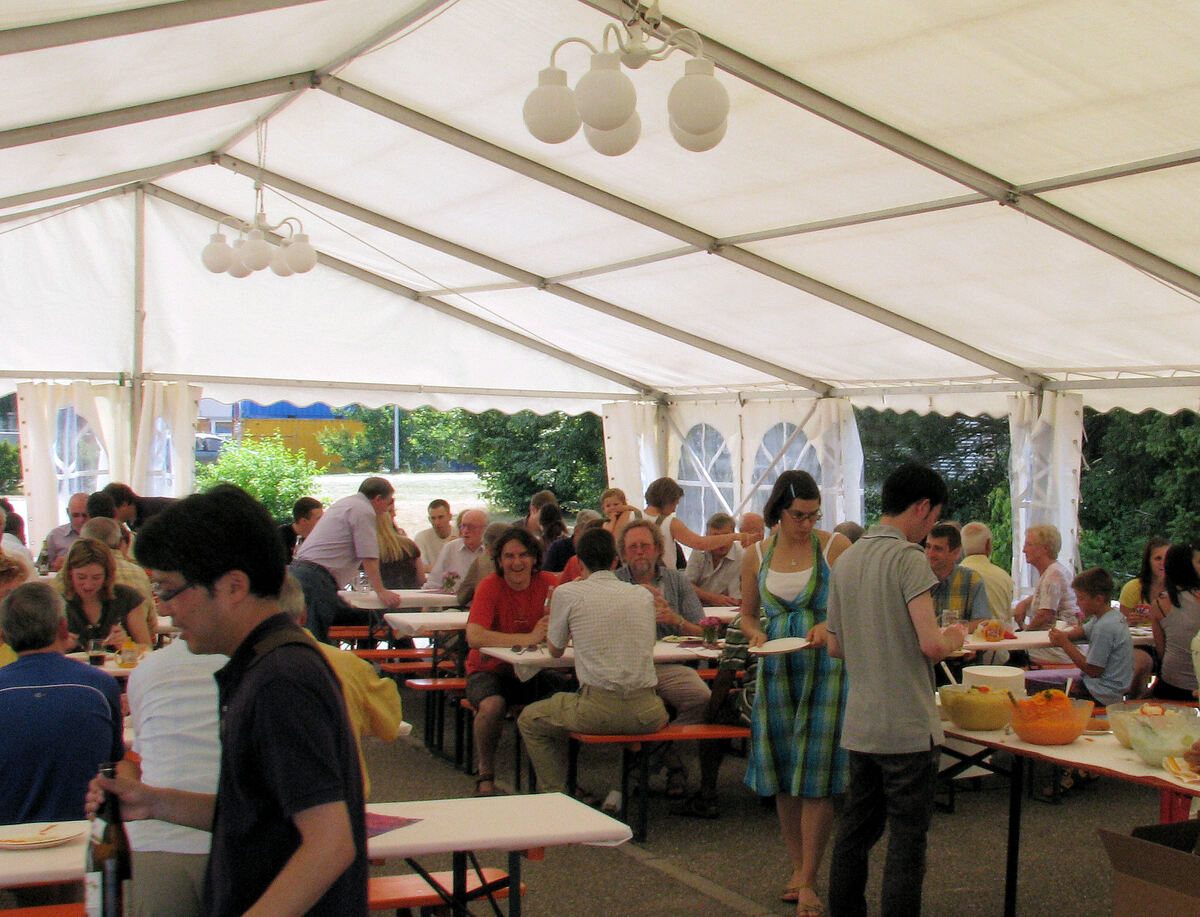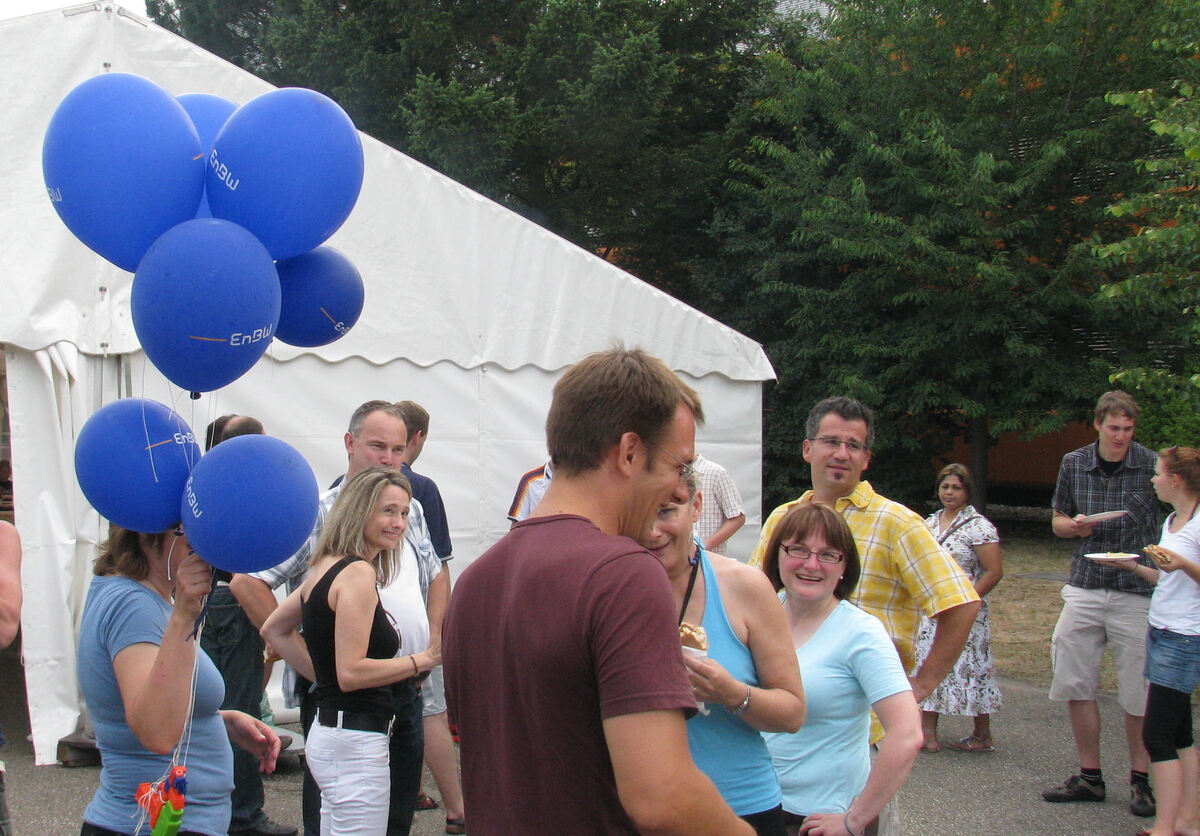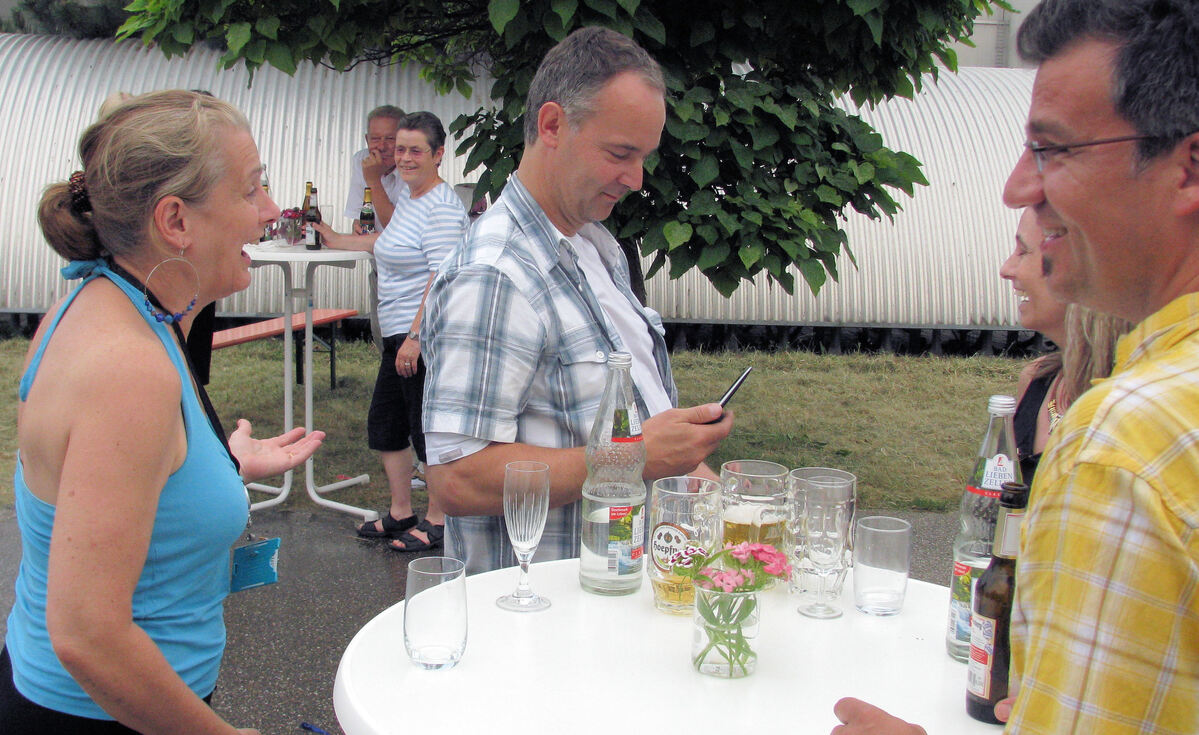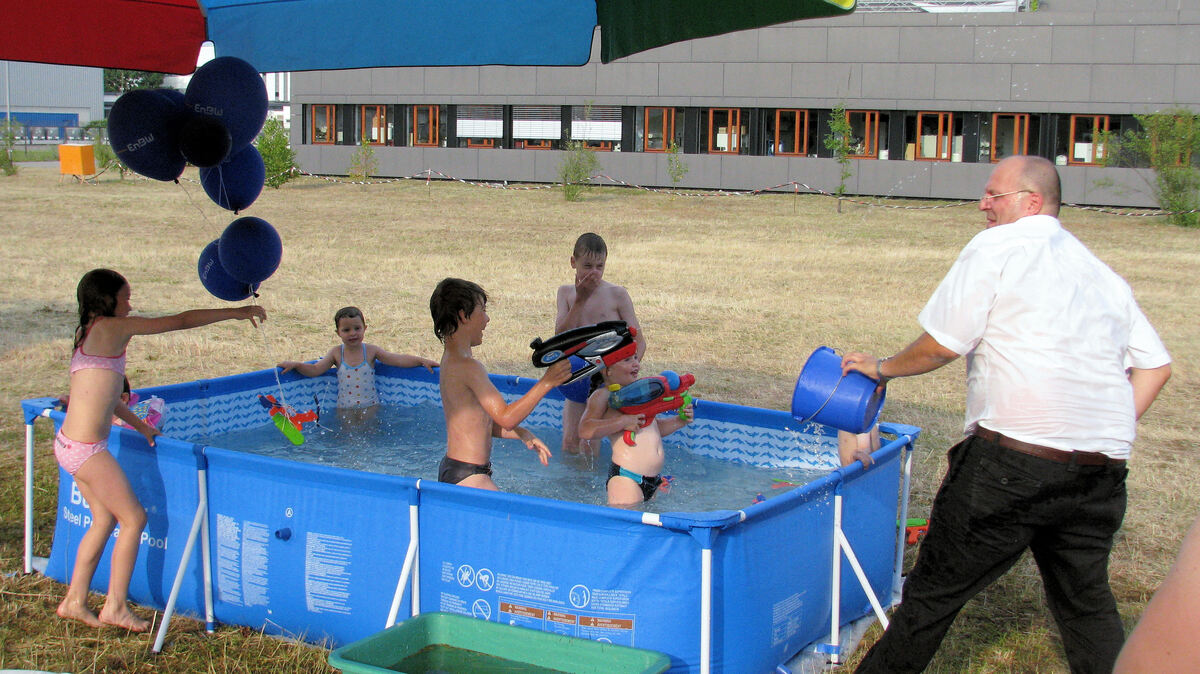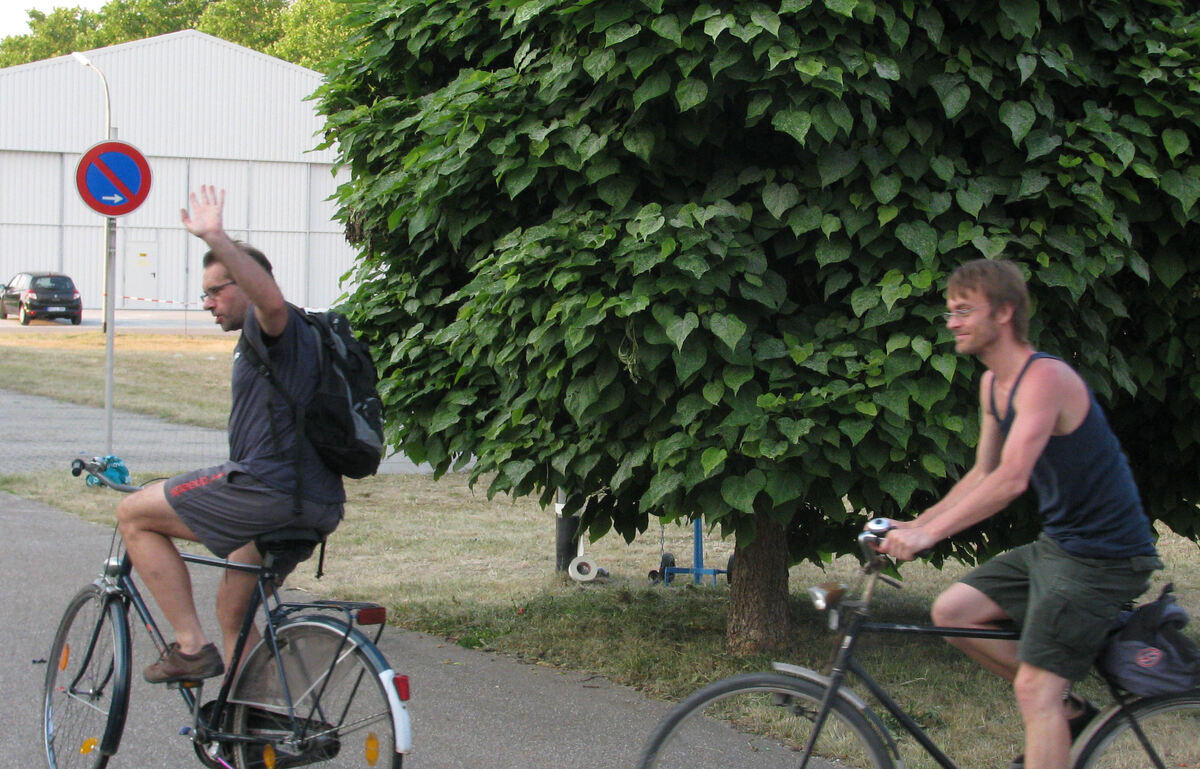Relativistic ab initio quantum chemistry solves puzzling ambiguity in understanding Tc XAFS spectroscopy - how fundamental research may contribute to remediation efforts at nuclear legacy sites
Studierende der Technischen Universität Berlin zu Besuch im KIT-INE
Im Rahmen des Seminars zur „Wirtschafts- und Infrastrukturpolitik“ (WIP) besuchten am 7. Februar ein Dutzend Studierende der Technischen Universität Berlin zusammen mit Prof. Dr. Christian von Hirschhausen und Fabian Präger von der Fakultät für Wirtschaft und Management der TU Berlin das INE. Während der Besichtigung des INE-Kontrollbereichs wurden wesentliche Aspekte der anwendungsorientierten Grundlagenforschung des Instituts zur Zwischen- und Endlagerung hoch radioaktiver Abfälle vorgestellt. Zusätzlich zum Besuch der Abgeschirmten Boxenlinie („heiße Zellen“), dem Labor für Oberflächenanalytik und dem Actiniden-Labor im Kontrollbereich wurde den Besucherinnen und Besuchern im Fortbildungszentrum für Technik und Umwelt am Campus Nord die Spuren natürlicher Radioaktivität in einer „Nebelkammer“ demonstriert. In Anschluss daran diskutierten die Studierenden der TU Berlin mit Mitarbeitern des INE über ihre Seminararbeiten zu ökonomischen Themen, wie Longterm-Governance in Finnland, Ungewissheiten einer langfristigen / fondgebundenen Finanzierung der Entsorgung hoch radioaktiver Abfälle.
Herr Dr. Andreas Volz, Bundesministerium für Bildung und Forschung, BMBF, zu Besuch am KIT-INE
Herr Dr. Andreas Volz, Referent des Referats "Rückbau kerntechnischer Versuchsanlagen - Rückbauforschung" im Bundesministerium für Bildung und Forschung, BMBF, besuchte am 5. Februar 2025 das Institut für Nukleare Entsorgung (KIT-INE). Nach einer Begrüßung durch den Institutsleiter des KIT-INE, Herrn Prof. Horst Geckeis, und durch den Sprecher des Programms „Nukleare Entsorgung, Sicherheit und Strahlenforschung“ (NUSAFE) dem Helmholtz Gemeinschaft, Herrn Dr. Walter Tromm, wurde Dr. Volz zu einer Besichtigung des Kontrollbereichs begleitet. In vier ausgewählten Laboren – der Abgeschirmten Boxenlinie („heiße Zellen“), dem sogenannten „HOVER“-Labor, dem Actiniden-Labor und dem Oberflächenanalytik-Labor wurden Dr. Volz von Promovierenden sowie Mitarbeiterinnen und Mitarbeitern des KIT-INE zentrale Methoden der anwendungsorientierten Grundlagenforschung des Instituts zur sicheren Entsorgung und Langzeitsicherheit radioaktiver Abfälle vorgestellt.
Hierbei konnten in der Abfolge der besichtigten Labore – von experimentellen Untersuchungen zum Verhalten hochradioaktiver Abfallformen unter Bedingungen der verlängerten Zwischenlagerung an der Erdoberfläche und zukünftigen Lagerung in einem tiefen geologischen Endlager, über die Erforschung von Löslichkeitsprozessen und der möglichen Ausbreitung beziehungsweise Rückhaltung radioaktiver Isotope in den untersuchten Wirtsgesteinen eines nuklearen Endlagers bis zur physiko-chemischen Charakterisierung radioaktiver Materialien mittels innovativer spektroskopischer, ultrasensitiv-analytischer Methoden – die Forschungsarbeiten für die wissenschaftsbasierte Entsorgung nuklearer Abfälle erläutert werden.
Mit seiner einzigartigen Forschungsinfrastruktur zur Untersuchung der Zwischen- und Endlagerung radioaktiver Abfälle trägt das KIT-INE entscheidend zur Bewältigung dieser großen gesellschaftlichen Herausforderung in Deutschland bei.
„First core on deck“: Erkundungsbohrung GeoLaB-1 auf der Tromm im Odenwald liefert erste Kerne
Die Erkundungsphase für die Forschungsinfrastruktur GeoLaB nimmt Fahrt auf: Seit Anfang Februar wird mit der Bohrung GeoLaB-1 ein 500 Meter tiefes Bohrloch in den Granit der Tromm (Grasellenbach, Odenwald) abgeteuft. Das Besondere: Die Bohrung wird komplett gekernt. Deshalb stehen Wissenschaftlerinnen und Wissenschaftler des KIT INE und des KIT AGW sowie der Helmholtz-Partner GFZ und UFZ Tag und Nacht auf dem Bohrplatz und nehmen die zu Tage geförderten Granit-Kerne mit einem Durchmesser von ca. 10 cm und einer Länge von je ca. einem Meter entgegen. Die Kerne werden unmittelbar gescannt und ersten Untersuchungen unterzogen, bevor sie im Kernlager für weitere Analysen archiviert werden. Im fertiggestellten Bohrloch werden weitere Messungen und Versuche durchgeführt werden.
All das dient der geologischen Bewertung der Tromm als potenziellen Standort für GeoLaB. In dem geplanten Untertage-Forschungslabor sollen Grundlagen für eine sichere und effiziente geothermische Nutzung des kristallinen Untergrunds erforscht werden, denn dieser hat noch ein großes ungenutztes Potenzial.
INE-Wissenschaftlerin Tonya Vitova erhält neue Professur für Innovative Spektroskopie in der Chemie der f-Elemente am KIT
Frau Dr. Tonya Vitova hat mit Wirkung zum 1. Januar 2025 eine neu am KIT eingerichtete Professur zur Entwicklung und Anwendung innovativer spektroskopischer Methoden in der Chemie der f-Elemente ("Advanced X-ray Spectroscopy in f-element Chemistry") angetreten. Die W3-Professur ist in der KIT-Fakultät für Chemie und Biowissenschaften angesiedelt. Die Forschungsarbeiten finden in der neuen Abteilung "Innovative Spektroskopien in der f-Element Chemie" am INE auf dem Campus Nord des KIT statt.
Jahrestagung der GDCh-Fachgruppe Nuklearchemie in Karlsruhe
Programm-Flyer der Tagung zum Download
ATAS - AnXAS 2024 Workshop at KIT / Proceedings available online
The international ATAS - AnXAS workshop – organized by the Institute for Nuclear Waste Disposal (KIT-INE) – was held in 2024 at Karlsruhe Institute of Technology in the FTU Auditorium, KIT Campus North, from October 7 to 11. ATAS - AnXAS 2024 has been the second joint workshop since merging the formerly separate ATAS and ActinideXAS series in 2022. Both workshops date back to original initiatives by Helmholtz-Zentrum Dresden-Rossendorf (HZDR). ActinideXAS was launched in 1998 at the ESRF in Grenoble (France) to focus on work at emerging dedicated synchrotron labs licensed to handle radionuclide materials at beamlines. The follow-up events took place at LBNL (USA), FZK (Germany), SOLEIL (France), SPring-8 (Japan), PSI (Switzerland), and Oxford University (UK). The series of ATAS workshops started in 2012 at HZDR in Dresden (Germany) in the context of a comprehensive round robin test comparing actinide speciation methods at labs around the world – followed by events at HZDR, PNNL (USA) and Nice (France). ATAS extended the scope to other advanced, not solely synchrotron-based speciation methods, with an additional emphasis on quantum chemistry. The first joint workshop was held in 2022 – again at the ESRF in Grenoble – feeling the strong need to catch up with personal exchange between experts and novices in the fields of actinide science, radionuclide speciation, spectroscopy and theory after the forced break due to the pandemic. As from the beginning the audiences of both ATAS and ActinideXAS had been largely overlapping, the scientific advisory boards decided to keep the format as a five-day joint workshop for Karlsruhe 2024 and as well for the 3rd joint event envisaged to be held at Lawrence Berkeley National Lab at the beginning of 2027.
ATAS - ANXAS 2024 attracted a total of 94 participants from 10 countries: Germany, France, United States, United Kingdom, Republic of Korea, Finland, Japan, Switzerland, Canada and China. The meeting featured 14 topical sessions structured by five invited plenary talks – one scheduled to open each day – 15 invited keynote lectures and 40 contributed oral presentations. These lectures were covering a broad range of radionuclide speciation methods and application fields (from radio-toxicology and medicine to the characterization of nuclear waste forms), where the unabatedly growing impact of high-resolution X-ray fluorescence detection studies was remarkable. As well noteworthy was the high degree of maturity reached by computational chemistry tools in support of 5f element spectroscopies, e.g., to disentangle the wealth of transition features in resonant inelastic X-ray scattering. The conference program was complemented by an evening poster session held at the premises of the KIT Light Source – the local synchrotron radiation facility operated at the Karlsruhe Research Accelerator (KARA). Preceding the presentation and intense discussion of a total of 22 poster contributions was an introduction into the dual mission of KARA by accelerator physicist Bastian Härer of IBPT (KIT Institute for Beam Physics and Technology): as light source for KIT users and their cooperation partners as well as accelerator technology test facility. The poster session was completed by the possibility to visit 5 beamline stations (SUL-X, CAT-ACT, X-SPEC, NANO, IMAGE) operated by KIT institutes IPS, IKFT and INE.
The workshop proceedings (ISSN: 2701-262X / DOI: 10.5445/IR/1000175765) are availbe for download here.
A visit of the popular Technik Museum Speyer in the nearby Palatinate region was organized as workshop excursion, reached by a 40 minutes bus ride from the conference venue. The evening started with a reception and a self-guided tour of the space flight exhibition – with a special section focusing on the benefits of space technology for our everyday life – and was concluded by a buffet dinner in the “Pfälzer Weindorf” on-site the museum’s vast exhibition area. An instructive as well as entertaining dinner talk was given by David L. Clark from Los Alamos National Lab, USA, titled "Historical perspectives on the development of actinide XAS".
Three young participants of ATAS - AnXAS 2024 in their early career phase as PhD students have been selected to receive an award for their work presented as poster or oral contribution.
Awards for the two best posters (voted for by all participants of the poster session):
- Emily Reynolds (KIT-INE, Germany) – “Development and Application of a Microfluidic Set-Up for In-Situ Studies of Formation Kinetics of La- and U-Complexes Using High Resolution Spectroscopic Methods”
- Nathan M. Alcock (University of Manchester, UK) – “Determination of actinide central-field covalency with resonant inelastic X-ray scattering (RIXS)”
Award for the best young scientist oral presentation (selected by the scientific advisory board):
- Janik Lohmann (Universität Mainz, Germany) – “Investigation of gluconate complexation with trivalent Eu, Pu and Am using CE-ICP-MS”
INE-Wissenschaftlerin Bianca Schacherl als Junior Group Leader im SFB "4f for Future" berufen
More information at https://www.sfb1573.kit.edu
Inorganic Chemistry paper shows why the new C4-BPP ligand has a higher affinity for An(III) over Ln(III), thus enabling separation of An(III) and Ln(III)
INE-Wissenschaftler Frank Heberling schliesst Habilitationsverfahren im Fachgebiet Umweltmineralogie – Geochemie erfolgreich ab
Nach dem Habilitations-Kolloquium am 18.10.2023 hat Frank Heberling mit einer Antrittsvorlesung am 05.06.2024 nun seine Habilitation an der Fakultät für Bauingenieur-, Geo- und Umweltwissenschaften des KIT erfolgreich abgeschlossen. Die Habilitation im Fachgebiet Umweltmineralogie – Geochemie behandelt das Thema „Thermodynamische Modelle für Ionen-Wechselwirkungen mit Mineralphasen bei Umgebungsbedingungen“. Seine Antrittsvorlesung über geochemische Reaktionen an Mineral-Wasser-Grenzflächen fokussierte auf neue Entwicklungen bei Oberflächenkomplexierungsmodellen [1, 2].
[1] F. Heberling et al., Structure and Surface Complexation at the Calcite(104)-Water Interface. Environmental Science & Technology 2021, 55, (18), 12403-12413
[2] F. Heberling et al., Thermodynamic models of solid-liquid-interface chemistry - free surfaces and charge regulation boundary conditions. In: Wandelt, K., Bussetti, G. (eds.) Encyclopedia of Solid-Liquid Interfaces, Elsevier 2024
Corrosion Science article on Corrosion of austenitic stainless steel at 90° C under highly saline and anoxic conditions: A microspectroscopic study
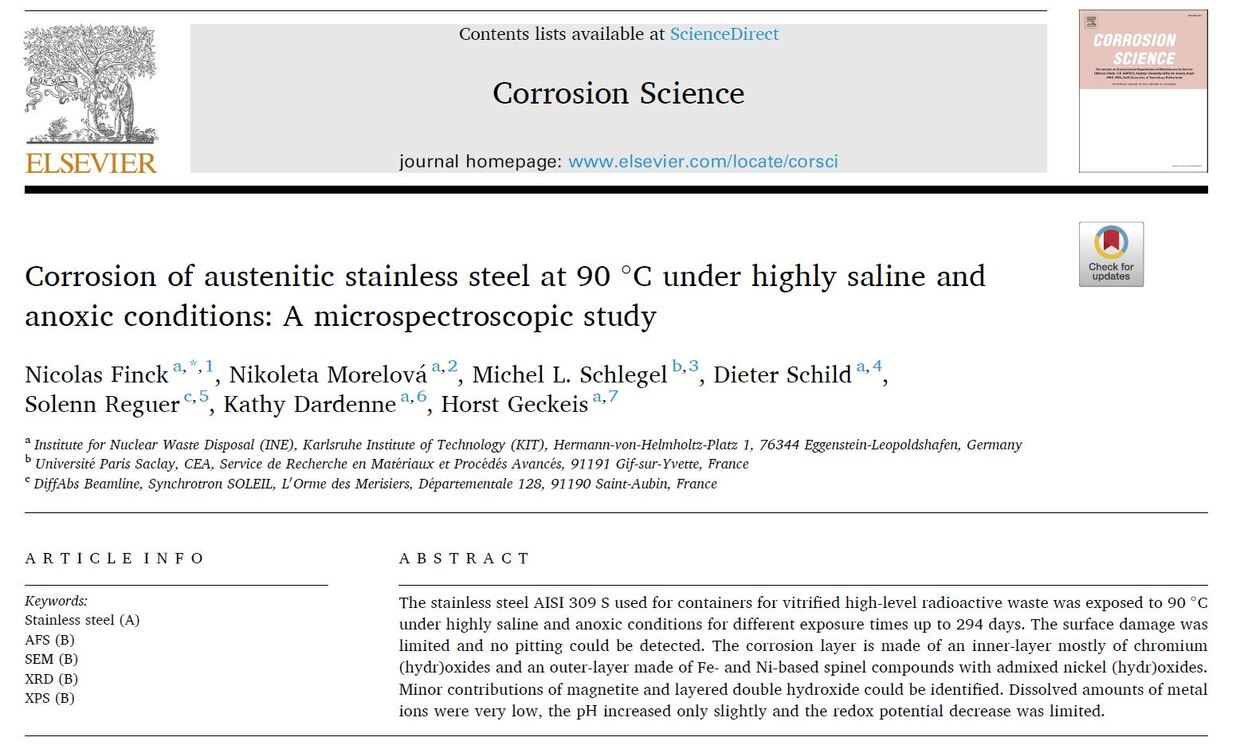
Studierende des Seminars „Atommüll: Endlagerung hoch radioaktiver Abfälle“ zu Besuch im KIT-INE Kontrollbereich
Zum Auftakt des Seminars „Atommüll: Endlagerung hoch radioaktiver Abfälle“ besuchten am 31. Juli zwei Dutzend Studierende der Fakultät für Geistes- und Sozialwissenschaften des KIT zusammen mit Prof. Dr. Armin Grunwald, dem Leiter des Instituts für Technikfolgenabschätzung und Systemanalyse (KIT-ITAS), das INE. Vor einer Besichtigung des INE-Kontrollbereichs wurden grundlegende naturwissenschaftliche und technische Fragen zur Entsorgung hoch radioaktiver Abfälle erörtert. An drei ausgewählten Stationen des Kontrollbereichs – der Abgeschirmten Boxenlinie („heiße Zellen“), dem Labor für Oberflächenanalytik und dem Actiniden-Labor – wurden anschließend von Mitarbeitern des INE wesentliche Aspekte der anwendungsorientierten Grundlagenforschung des Instituts zur Zwischen- und Endlagerung hoch radioaktiver Abfälle vorgestellt.
Speciation information on naturally occuring Th‑mineral phases in soil samples from Sri Lanka
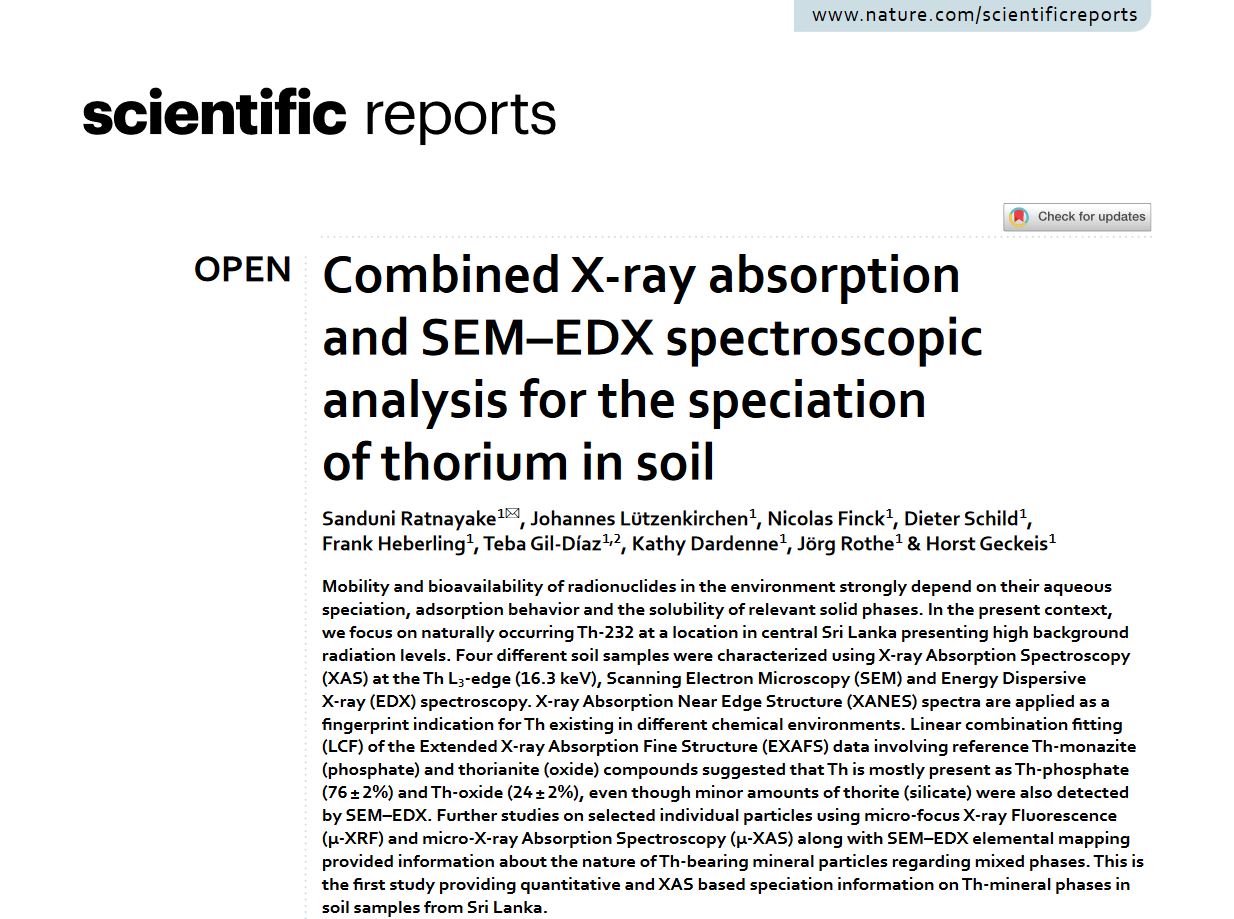
Chemical Reviews article on the role of chemical reactions at oxide- and silicate-water interfaces
Tag der offenen Tür am Campus Nord 2023: Ausstieg aus der Kernenergie – Einstieg in die Entsorgung
Unter diesem Titel konnten sich am Samstag, dem 17.06.2023 im Rahmen des erstmalig seit 6 Jahren wieder am KIT Campus Nord organisierten Tages der offenen Tür zahlreiche Besucherinnen und Besucher über die Forschungsarbeiten des INE zur nuklearen Entsorgung, zu den verschiedenen Endlagerkonzepten sowie zum Rückbau kerntechnischer Anlagen anhand von Postern und Exponaten informieren. Unsere Gäste konnten live das fernhantierte Arbeiten eines Abbruchroboters erleben und verschiedene Proben auf deren natürliche Radioaktivität testen. Kleine und große Nachwuchsforscher*innen konnten ihre Geschicklichkeit an einer Handschuhbox erproben und selber das fernhantierte Arbeiten mithilfe von Manipulatoren ausprobieren. Das INE war ebenfalls beim Besichtigungsprogramm an der Beschleunigeranlage KARA präsent – hier neben Führungen durch die beiden eigenen Beamline-Messplätze auch mit Experimenten zum Thema Licht für angehende Forscherinnen und Forscher.
Ebenfalls ausführlich informieren konnten sich die Besucherinnen und Besucher über die Arbeiten zur Geoenergie am INE. In diesem Zusammenhang wurde die neue Versuchsanlage RockBlockEx vorgestellt, die zur Durchführung von hydraulischen Experimenten an Gesteinsformationen im Labormaßstab (cm-Skala) dient. Hierbei kann die interaktiv steuerbare Animation eines Felsblocks mit seinen internen Brüchen und Strukturen auf einem großformatigem (85“) 3D-Monitor visualisiert werden.
Auch für unsere kleinen Besucherinnen und Besucher gab es ein umfangreiches Programm mit Riesenseifenblasen, Helium-Ballons und selbsthergestellter Knete.
acatech Diskussion – Forschungsperspektiven der sicheren Entsorgung und Tiefenlagerung von hochradioaktivem Material
Während der Ausstieg aus der Nutzung der Kernenergie in Deutschland für April 2023 vorgesehen ist, bleibt die Entsorgung des hochradioaktiven Materials eine langfristige Aufgabe, die auch zukünftige Generationen betreffen wird. Mit dem Standortauswahlgesetz (StandAG) gibt der Gesetzgeber die Rahmenbedingungen für das derzeit laufende Verfahren zur Standortauswahl für ein tiefengeologisches Lager in Deutschland vor. Ziel des Verfahrens ist es, für einen Zeitraum von einer Million Jahre bestmögliche Sicherheit zu gewährleisten.
Der Zeithorizont bis zu einem Verschluss des Tiefenlagers wird aller Voraussicht nach bis ins nächste Jahrhundert reichen. Aus dieser Langfristigkeit des Vorhabens, seiner hohen gesellschaftlichen Relevanz und der Forderung des Gesetzgebers nach einem lernenden Verfahren erwachsen besondere Anforderungen an die Gestaltung der Forschungsprogramme und der wissenschaftlichen Forschungslandschaft.
Besuch der Entsorgungskommission im KIT an KARA
Am Donnerstag, den 06.10. hielt die vom Bundesministerium für Umwelt, Naturschutz, nukleare Sicherheit und Verbraucherschutz (BMUV) neu berufene Entsorgungskommission (ESK) ihre konstituierende Sitzung am KIT ab. Die Sitzung fand am IBPT im KARA Gebäude statt. Als ESK-Vorsitzende wurde Frau Prof. Dr. Barbara Reichert (Uni Bonn) wieder berufen. Ebenso Frau Dr. Claudia Schauer (TÜV Süd) und Herr Prof. Dr. Horst Geckeis (KIT-INE) als Stellvertreter/in. Die ESK Mitglieder nutzten die Gelegenheit, sich über die Möglichkeiten der Nutzung von Synchrotronstrahlung im Rahmen der Forschung des KIT zur nuklearen Entsorgung zu informieren.
Beschleunigungsprojekt soll Geothermie auf die Sprünge helfen
Mit der Wärme aus dem Untergrund ließen sich bis zu 25 Prozent unseres Heizenergiebedarfs decken. Ein neues Helmholtz-Projekt will den großflächigen Einsatz der Geothermie beschleunigen.
Fertigstellung des „HOVER-Labors“ mit der µ-CT-Anlage am INE
Die Forschungsinfrastruktur HOVER (Helmholtz Forschungs- und Versuchsplattform zur Entsorgung radioaktiver Abfälle und zum Rückbau kerntechnischer Anlagen) stellt einzigartige technische Großanlagen, radiochemische Laboratorien sowie Instrumentierung und Simulationswerkzeuge bereit, die zur Lösung offener Fragen im Zusammenhang mit dem Rückbau kerntechnischer Anlagen und der Entsorgung radioaktiver Abfälle im Rahmen nationaler und internationaler wissenschaftlicher Kooperationen eingesetzt werden können. Am KIT-INE wurde im Frühjahr 2022 mit der Inbetriebnahme von zwei hochempfindlichen Instrumenten zur Elektronenmikroskopie bzw. Röntgen-Mikrotomographie im neu eingerichteten „HOVER-Labor“ ein wesentlicher Meilenstein bei der Umsetzung des Projekts erzielt. Ein nahtloser Workflow der vom Hersteller Zeiss bzw. Zeiss/Xradia entwickelten Mikroskope ermöglicht es u.a., Materialeigenschaften wie die Zusammensetzung aus unterschiedlichen Mineralphasen oder die Porenstruktur von endlagerrelevanten „Wirtsgesteinen“ über mehrere Größenskalen – vom Dezimeter- in den Sub-Mikrometerbereich – abzubilden. Diese Informationen bilden eine wichtige Basis zur Simulation von möglichen Ausbreitungspfaden von Radionukliden im Nah- bzw. Fernfeld eines Endlagers und stellen somit ein wichtiges Auswahlkriterium bei der anstehenden Standortsuche dar.
Crystal Structure and Stability in Aqueous Solutions of Na0.5[NpO2(OH)1.5]·0.5H2O and Na[NpO2(OH)2]
The ternary neptunium(V) hydroxides Na0.5[NpO2(OH)1.5]·0.5H2O and Na[NpO2(OH)2] were synthesized in aqueous NaOH solutions, and their crystal structures were determined to be monoclinic, P21, and orthorhombic, P212121, respectively. A comprehensive chemical and thermodynamic model of the Np(V) behavior in NaCl−NaOH solutions was evaluated by combining the detailed structural information with results from systematic solubility investigations. The results reveal a great stability of both Na−Np(V)−OH solid phases that significantly enhances the predominance field of the entire Np(V) redox state to high pHm values.
Herr MdB Harald Ebner, Vorsitzender des Ausschusses für Umwelt, Naturschutz, nukleare Sicherheit und Verbraucherschutz des Deutschen Bundestages, zu Besuch am INE
Im Rahmen einer umfangreichen Besichtigungstour zur Energieforschung am KIT hat Herr MdB Harald Ebner, Vorsitzender des Ausschusses für Umwelt, Naturschutz, nukleare Sicherheit und Verbraucherschutz des Bundestages in Berlin, dem Institut für Nukleare Entsorgung (KIT-INE) auf dem Campus Nord einen Besuch abgestattet. Herr Ebner wurde nach einer Begrüßung durch den Bereichsleiter 3 des KIT, Herrn Prof. h.c. Dr.-Ing. Joachim Knebel, den Sprecher des Programms Nukleare Entsorgung, Sicherheit und Strahlenforschung (NUSAFE) am KIT, Herrn Dr. Walter Tromm, sowie den Institutsleiter des INE, Herrn Prof. Horst Geckeis, im Foyer des INE zu einer Besichtigung des Kontrollbereichs begleitet. An drei ausgewählten Stationen – der Abgeschirmten Boxenlinie („heiße Zellen“), dem sog. „HOVER“-Labor und dem Actiniden-Labor wurden Herrn Ebner von Mitarbeiterinnen und Mitarbeitern des INE wesentliche Aspekte der anwendungsorientierten Grundlagenforschung des Instituts zur Langzeitsicherheit hochradioaktiver Abfälle aus der nuklearen Energieerzeugung vorgestellt. Hierbei konnte in der Abfolge der besichtigten Labore – von experimentellen Untersuchungen zum Verhalten hochradioaktiver Abfallformen unter Zwischen- und Endlagerbedingungen über die Erforschung der möglichen Ausbreitung beziehungsweise Rückhaltung radioaktiver Isotope (Actiniden, Spalt- und Aktivierungsprodukte) in den untersuchten Wirtsgesteinsformationen eines nuklearen Endlagers bis zur Bestimmung von Löslichkeitsprozessen unterschiedlichster Radionuklid-„Spezies“ in der Umwelt – die Grundlagen für das wissenschaftsbasierte Standortauswahlverfahren in Deutschland demonstriert werden. Mit seiner einzigartigen Forschungsinfrastruktur zur Untersuchung der Langzeitsicherheit hochradioaktiver Abfälle trägt das INE entscheidend zur Bewältigung dieser hochkomplexen Aufgabe im Rahmen der gesellschaftlichen Vorsorgeforschung in Deutschland bei.
Open questions on bonding involving lanthanide atoms
In-depth understanding of the bonding characteristics of the lanthanide ions in contemporary lanthanide-based materials is mandatory for tailoring their properties for novel applications. Here, the authors elaborate on open questions regarding the bonding situation in mainly molecular lanthanide (4f) compounds, where, as compared to their actinide (5f) analogs in which covalency of the bonds is a common feature, this is still under discussion for the 4f compounds.
https://doi.org/10.1038/s42004-022-00630-6
To celebrate the 2022 International Women’s Day at Communications Chemistry, this paper has been listed in a Collection showcasing recent work by women as corresponding authors published in the journal.
Das INE im Dialog mit dem Präsidenten des KIT
Im Rahmen der "Helmholtz Klimainitiative" (https://netto-null.org/) hat die AG Geoenergie des INE ein Konzept zur klimaneutralen Wärmeversorgung des KIT-Campus Nord erarbeitet. Das Konzept beinhaltet verschiedene Tiefbohrungen zur Wärmegewinnung aus dem tiefen Untergrund und zur Speicherung der Überschusswärme, die im Sommer nicht benötigt wird. In einem Dialogartikel (https://atlas.netto-null.org/contribution/110), der auf der Helmholtz Dialog Konferenz am 17.11.2021 in Berlin veröffentlicht wurde, erklärt Prof. Eva Schill dem Präsidenten des KIT das Konzept. Zu weiteren Aspekten der "Klimaneutralen Stadt Karlsruhe" wurde das am INE koordinierte Projekt "GECKO" (https://www.gecko-geothermie.de/) vorgestellt und mit der Bürgermeisterin der Stadt Karlsruhe, Frau Lisbach, auf dem Podium diskutiert.
Publication "Relativistic Multiconfigurational Ab Initio Calculation of Uranyl 3d4f Resonant Inelastic X-ray Scattering" accepted in Inorg. Chem.
Relativistic Multiconfigurational Ab Initio Calculation of Uranyl 3d4f Resonant Inelastic X-ray Scattering
Robert Polly,∗ Bianca Schacherl, Jörg Rothe, and Tonya Vitova
online published in Inorg. Chem.
https://pubs.acs.org/doi/abs/10.1021/acs.inorgchem.1c02364
We show that the protocol based on relativistic multiconfigurational ab initio calculations,
which is nowadays applied as a standard tool to study X-ray spectra of transition metal complexes can be extended to actinide compounds.
The excellent agreement with the measurements shows that the approach using the
RASSCF/RASPT2 methods followed by the inclusion of SOC is applicable to the
accurate calculation of 3 d4f RIXS maps and reproduces the multiplet structure of
the uranyl spectra very well.
Festkolloquium anlässlich des 40-jährigen Bestehens des Instituts für Nukleare Entsorgung am KIT.
Im Jahr 2020 wurde das Institut für Nukleare Entsorgung (INE) auf dem Campus Nord des KIT 40 Jahre alt. Die am INE durchgeführte radio-, geochemische und materialwissenschaftliche Grundlagenforschung betrachtet die Sicherheit von Konzepten für ein zukünftiges untertägiges Endlager für hochradioaktive Abfallstoffe aus der Kernenergie-Nutzung in Deutschland. Hinzu kommen in jüngerer Zeit Forschungsarbeiten zum mittelfristigen Verhalten von bestrahlten Brennelementen während ihrer Zwischenlagerung bis zu einer endgültigen Verbringung in ein Tieflager – hiermit ist nach Stand des derzeitigen Standortauswahlverfahrens kaum vor Mitte des Jahrhunderts zu rechnen – sowie zur geothermischen Energiegewinnung und zum Rückbau kerntechnischer Anlagen.
Die nukleare Sicherheitsforschung auf dem Campus Nord reicht bis in die Anfangszeit des Forschungsstandortes im Hardtwald bei Eggenstein-Leopoldshafen zurück. Eine erste Studiengruppe zur Erforschung der Möglichkeiten zur Tieflagerung nuklearer Abfälle wurde bereits 1964 von der damaligen KIT-Vorgängerorganisation Gesellschaft für Kernforschung mbH ins Leben gerufen. Im Jahr 1974 erfolgte die Abtrennung der wissenschaftlichen Abteilung „Behandlung radioaktiver Abfälle“ (ABRA) von der Abteilung Dekontaminationsbetriebe (heute KTE Karlsruhe) am mittlerweile Kernforschungszentrum Karlsruhe (KfK) genannten KIT-Vorgänger. Hieraus ging das 1980 zunächst als „Institut für Nukleare Entsorgungstechnik“ gegründete INE hervor, dessen Name zur Zeit der Forschungszentrum Karlsruhe GmbH (FZK) in „Institut für Nukleare Entsorgung“ abgekürzt wurde. Hiermit trug man der zunehmend grundlagenorientierten Forschung mit dem Fokus auf ein molekulares Prozessverständnis bei der Konzeptionierung eines Endlagers Rechnung. Weitere Informationen zur Historie der Endlagersicherheitsforschung am KIT: B. Kienzler, 50 Jahre Forschungs- und Entwicklungsarbeiten zur Endlagerung im KIT, KIT Scientific Reports Nr. 7723, DOI: 10.5445/KSP/1000059829).
Zum 40-jährigen Bestehen des INE kamen – Corona-bedingt mit einem Jahr Verspätung – am 11. Oktober 2021 in der Aula des Fortbildungszentrums für Technik & Umwelt auf dem Campus Nord des KIT Fachleute und Gäste zu einem Festkolloquium zusammen. Zu den Teilnehmern gehörten u. a. Vertreter*innen der an der Endlagersicherheitsforschung beteiligten HGF-Zentren (HZDR, FZJ, UFZ, GFZ und KIT), des Helmholtz-Programms NUSAFE, der Bundesgesellschaft für Endlagerung (BGE) als Vorhabensträgerin des Standortauswahlverfahrens, der nationalen Aufsichtsbehörde, dem Bundesamt für die Sicherheit der nuklearen Entsorgung BASE, der zuständigen Bundes- und Landesministerien, des Nationalen Begleitgremiums (NBG) für die Endlagerstandortsuche und Vertreter*innen europäischer Endlagerforschungsprogramme. Eröffnet wurde die Veranstaltung durch ein Grußwort des KIT Präsidenten Prof. Dr. Holger Hanselka sowie eine Videobotschaft des HGF-Präsidenten Prof. Dr. Otmar Wiestler.
Erste Nullmessungen für DeepStor am INE
Am 7.10.2021 hat Johannes Käufl (Institut für Angewandte Geowissenschaften) erste Testgeräte für Erschütterungsmessungen auf dem Gelände des INE installiert. In den nächsten zwei Wochen werden diese auf ihre Vergleichbarkeit hin getestet und ermitteln einen ersten Eindruck über das Hintergrundrauschen durch den Verkehr und ähnliches.
Langfristig sollen diese Geräte für ein Citizen Science Projekt während der Bohr- und Versuchsphase in DeepStor genutzt werden, um Erschütterungen in dieser Zeit wissenschaftlich einordnen zu können.
DeepStor ist eine geplante Helmholtz Forschungsinfrastruktur und zielt auf erweiterte Untersuchung zur Hochtemperatur-Wärmespeicherung im wassergesättigten Randbereich von Kohlennwasserstoffreservoiren ab. DeepStor soll eine detaillierte Charakterisierung des Untergrundes, die Bewertung des strukturellen Aufbaus und der hydraulischen und hydrochemischen Randbedingungen der Lagerstätte und kurz- und langfristige Tests der hydraulischen und thermischen Leistung der Lagerstätte ermöglichen. Langfristig kann DeepStor in eine zukünftige klimaneutrale Versorgung des KIT Campus Nord einbezogen werden.
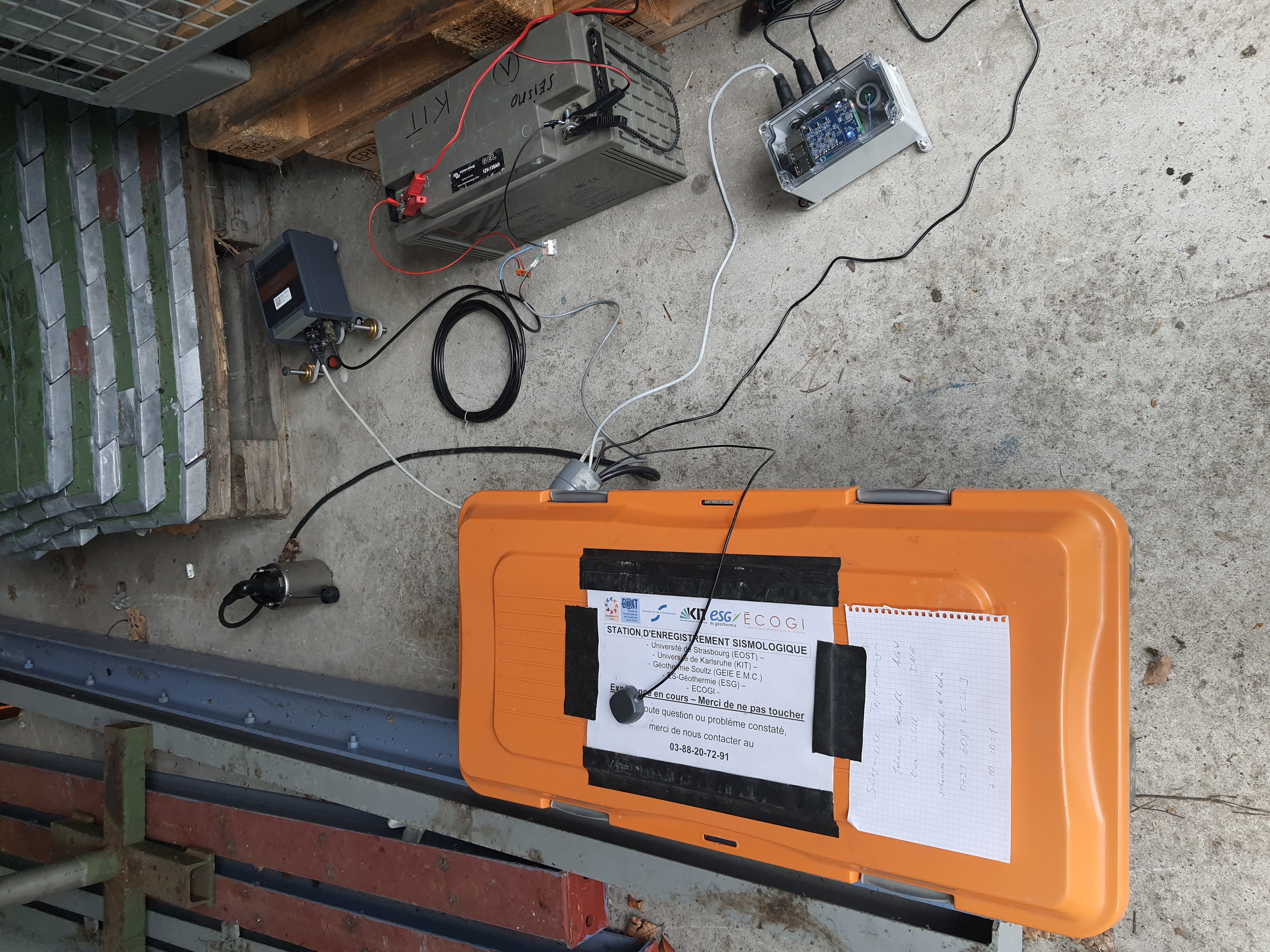
Das INE beteiligt sich an der Ausstellung des KIT vor der Stuttgarter Oper anlässlich der „Energiewendetage 2021“ in Baden-Württemberg
Das INE stellte sich am 18. September auf dem Stand des KIT vor dem Stuttgarter Opernhaus anlässlich der „Energiewendetage 2021“ den Fragen der interessierten Öffentlichkeit. Erstmalig wurde neben der Geothermie-Forschung (Vorstellung des Projekts GECKO zur partizipativen Entwicklung von Empfehlungen für ein Konzept zur Nutzung der Geothermie am KIT-Campus Nord) auch die INE-Forschung zur Sicherheit eines zukünftigen Endlagers für hochradioaktive Abfallstoffe aus der nuklearen Stromerzeugung thematisiert. Den meisten Besucherinnen und Besuchern war in diesem Zusammenhang bekannt, dass der letzte Leistungsreaktor in Deutschland im kommenden Jahr vom Netz genommen und die nukleare Stromerzeugung damit endgültig beendet wird. Dass die Suche nach einem geeigneten Endlagerstandort, der Bau der notwendigen Anlagen zur Einlagerung und langfristigen Abschirmung der nuklearen Abfälle und ihre endgültige untertägige Verbringung noch Jahrzehnte in Anspruch nehmen werden, ist dagegen häufig in den Hintergrund der öffentlichen Diskussion getreten. Somit bleibt die Frage der sicheren nuklearen Entsorgung bis auf weiteres ein integraler Bestandteil der deutschen Energiewende – voraussichtlich mit Forschungsbedarf weit über die Mitte des Jahrhunderts hinaus.
Prof. Eva Schill ist zum 1. Oktober 2021 in den Council for Research and Promotion of Young Scientists (CRYS) berufen.
CRYS unterstützt das Präsidium des KIT bei der Auswahl und der Qualitätssicherung von Drittmittelanträgen sowie der Förderung des wissenschaftlichen Nachwuchses. Frau Schill wird ihre fachliche Kompetenz im Bereich Geowissenschaften und Erneuerbare Energieforschung in das Gremium einbringen. Darüber hinaus baut ihre Tätigkeit für CRYS auf ihrer breiten Erfahrung aus Einzel-, Verbund- und EU-Projekten bis hin zu großen wissenschaftlichen Infrastrukturprojekten wie DeepStor und GeoLaB auf. Ihre persönlichen Schwerpunkte sind die Chancengleichheit bei der Förderung des wissenschaftlichen Nachwuchses und die Interaktion von Forschung und Forschenden mit der Öffentlichkeit (www.gecko-geothermie.de).
INE scientists report the first ever measured “tender” X-ray Tc L3-edge XANES spectra of liquid (aqueous) 99Tc specimen – observing the formation of a very stable Tc(V)-gluconate complex under anoxic conditions.
A combination of wet-chemistry experiments (measurements of pH, Eh, [Tc]) and advanced spectroscopic (K- and L3-edge XAFS) and quantum chemistry techniques (relativistic multireference ab initio calculations) confirms the formation of a very stable Tc(V)-gluconate complex under anoxic conditions. For the first time ever, tender X-ray Tc L3-XANES measurements of Tc species in liquid media are reported, clearly outperforming conventional K-edge spectroscopy as a tool to differentiate Tc oxidation states and coordination environments.
https://doi.org/10.1021/acs.inorgchem.1c01487
Retention of beryllium in cementitious systems
The retention of beryllium in cementitious systems was successfully investigated within the CEBAMA EU project and recently published in Chemosphere
- First experimental and theoretical study investigating Be(II) uptake by cementitious materials
- Strong sorption observed. C-S-H confirmed as main sink of Be(II) in cement
- MD simulations indicate sorption of Be(II) to C-S-H surface through Ca-bridges
- Reliable assessment of Be(II) retention / mobilization in a repository now feasible
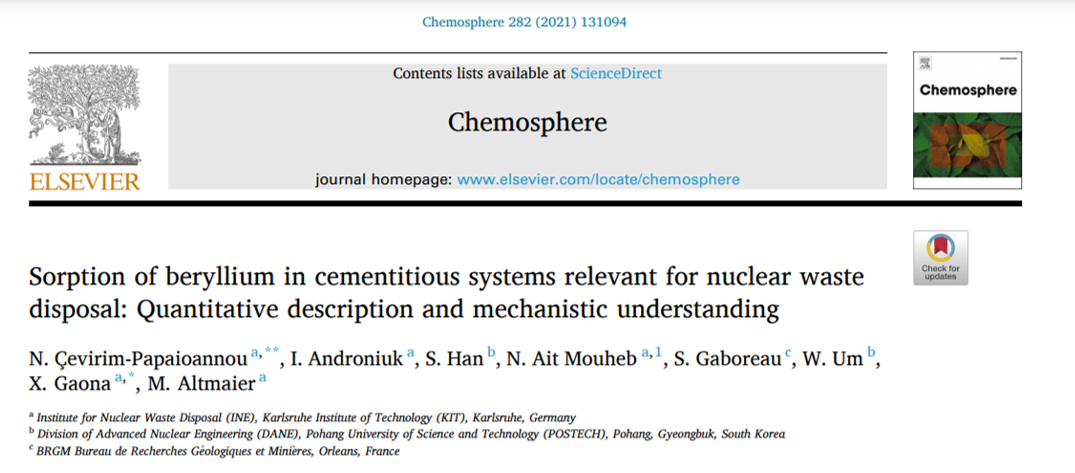
https://doi.org/10.1016/j.chemosphere.2021.131094
Two PhD projects ongoing at INE highlighted at EURAD’s first Annual Event
The first annual event of the European Joined Programme on Radioactive Waste Management (EURAD) was held as a virtual meeting from March 16th to March 18th, 2021. The meeting allowed the 446 participants to share their work achieved in the last two years. As part of the cutting-edge science highlighted from across all EURAD work packages, outstanding PhD topics nominated for each WP were presented. In this context, Rosa Ester Guidone (EMPA and KIT-CORI) and Bianca Schacherl (KIT-FUTURE), both associated with KIT-INE, introduced their work on sorption of organics on hydrated cement paste and Np interaction with Fe containing mineral phases, respectively. See the recent EURAD Newsletter for more information.
Beitrag über das INE im ARTE Wissenschaftsjournal Xenius: Atommüll – Problem für die Ewigkeit
Blick hinter die Kulissen der Atommüll-Entsorgungsforschung: Wie lassen sich einige der langlebigsten und gefährlichsten Stoffe unseres Zeitalters in den Griff bekommen? Die Herausforderung für die Wissenschaft ist keine geringere als Vorhersagen für die Ewigkeit zu treffen. Dafür bieten die Forschenden einiges an Technik auf.
Die „Xenius“- Moderatorinnen Dörthe Eickelberg und Emilie Langlade werfen einen Blick hinter die Kulissen der Atommüll-Entsorgungsforschung. Es geht um eine existenzielle Frage für uns und für die nächsten Generationen: Wie lassen sich einige der langlebigsten und gefährlichsten Stoffe unseres Zeitalters in den Griff bekommen? Am Institut für Nukleare Entsorgung des Karlsruher Instituts für Technologie (KIT-INE) sind rund 100 Mitarbeitende damit beschäftigt, das Verhalten des Atommülls und der Stoffe, die er freisetzt, besser zu verstehen. Die Herausforderung ist keine geringere als Vorhersagen für die Ewigkeit zu treffen. Dafür bieten die Forschenden einiges an Technik auf. Dörthe Eickelberg begleitet ein Auslaugexperiment. Es findet unter anderem in den sogenannten heißen Zellen des Instituts statt: in fest abgeschlossenen Kammern, in denen sich beobachten, beproben und vermessen lässt, wie sich etwa Plutonium, Cäsium oder Jod aus den Brennelementen verhalten. Weitere schwierige Vorhersagen müssen die Forscherinnen und Forscher für den hochradioaktiven Atommüll in den deutschen Zwischenlagern treffen. Er muss dort deutlich länger bleiben als geplant, weil die Endlagersuche und Vorbereitung in Deutschland länger dauern als vorhergesehen. Die Wissenschaftler müssen sich dabei mit allgemeinen bis hin zu spezifischen Fragen auseinandersetzen: Wie verhält sich der hochradioaktive Atommüll? Welche Risiken entstehen bei seiner endgültigen Einlagerung? Das wird durch spezielle Experimente getestet und gemessen – die „Xenius“-Moderatorinnen Emilie und Dörthe sind dabei.
Verfügbar vom 08/02/2021 bis 08/05/2021
Link zur Videobeitrag in der ARTE-Mediathek
Atommüll ohne Endlager - Wie gefährlich ist das strahlende Erbe?
Das Ende der Atomkraft in Deutschland ist nah, doch ihr strahlendes Erbe bleibt. Ein Endlager ist noch nicht in Sicht. Stattdessen bringen Castor-Transporte die hochradioaktiven Abfälle in Zwischenlager. Ob sie dort wirklich sicher sind, ist umstritten. Der Film besucht das südhessische Zwischenlager Biblis, begleitet eine Anti-Castor-Demonstration und lässt Fachleute zu Wort kommen. Während eine Kernkraft-Befürworterin den Atomausstieg am liebsten rückgängig machen würde, gehen Forscher am Institut für Nukleare Entsorgung in Karlsruhe der Frage nach, wie wir unseren gefährlichen Atommüll - heute und in Zukunft - sicher verwahren können.
Link zum Reportage in der ARD-Mediathek
LookKIT-Artikel: "Die 1-Million-Jahre-Frage"
Artikel im LookKIT-Magazin zum 40-jährigen Bestehen des INE (Ausgabe #2/2020 ab S. 58, Juli 2020)
ARTE Journal im INE!
Am Mittwoch, 20.11.2019, hatten wir Besuch von zwei Journalisten von ARTE TV im INE. Mit Filmaufnahmen und Interviews widmeten sie sich dem Thema „Know-how Erhalt in der Kerntechnik“. Der Beitrag „Atomenergie: Fehlt bald das Know-How?“ wurde im ARTE Journal am Samstag, 23.11.2019 gesendet und kann unter dem Link
https://www.arte.tv/de/videos/093961-000-A/atomenergie-fehlt-bald-das-know-how/
angeschaut werden.
Der Inhalt lässt sich kurz zusammenfassen:
In drei Jahren sollen die letzten Atomkraftwerke in Deutschland abgeschaltet werden. Begleitet werden muss dieser Prozess von Atomforschern. Doch dem Wissenschaftszweig geht der akademische Nachwuchs aus: Zu schlecht ist der Ruf, zu knapp das Geld.
Migration 2019 Konferenz in Kyoto (Japan)
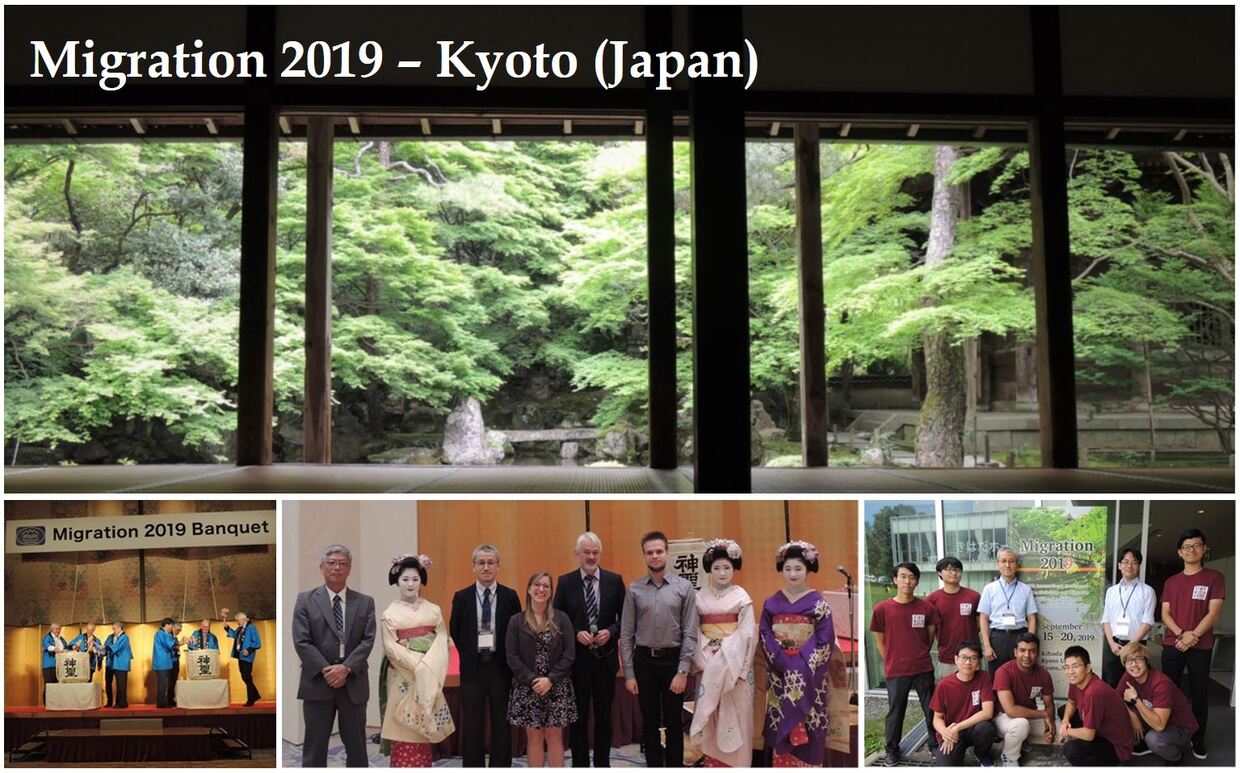
From up to bottom and from left to right:
View of the Renge-ji temple gardens in Kyoto / Opening of the sake barrels by the Steering Committee of Migration during the Conference Banquet / Poster prize awards to E. Gerber, N. Moore and A. Yamaguchi (absent) / Profs. T. Sasaki and T. Kobayashi with the students team of the Local Organizing Committee
Vom 15. bis zum 20. September 2019 fand die 17. Internationale Konferenz zur „Chemie und dem Migrationsverhalten von Actiniden und Spaltprodukten in der Geosphäre” („Migration-Konferenz“) auf dem Uji-Campus der Universität Kyoto (Japan) statt. Die Konferenz behandelte Themen wie (i) die aquatische Chemie von Actiniden und Spaltprodukten, (ii) das Migrationsverhalten von Radionukliden, (iii) die Geochemie- und Transportmodellierungen sowie (iv) die Anwendungen auf Fallstudien, und wurde von der Universität Kyoto in Zusammenarbeit mit dem KIT-INE organisiert. Ein besonderer Programmpunkt wurde den Forschungsaktivitäten in Japan zur Endlagerung hochradioaktiven Abfalls sowie der Sanierung des Kernkraftwerks Fukushima Daiichi („Research activities towards HLW disposal in Japan and remediation of the Fukushima Daiichi NPS site“) gewidmet. An der Konferenz in Kyoto nahmen mehr als 260 Teilnehmer (> 60 Studenten) aus 19 verschiedenen Ländern teil. Sie brachte weltweit führende Experten, Nachwuchswissenschaftler und Studenten aus verschiedenen Bereichen der „Migration“-Forschungsgemeinschaft zusammen. Aus den über 220 Posterbeiträgen wurden drei Posterpreise an die Doktoranden E. Gerber (Frankreich), N. Moore (USA) und A. Yamaguchi (Japan) (in alphabetischer Reihenfolge) vergeben. Während des Konferenzbanketts wurde das Datum und der Ort der 18. Migration-Konferenz (2021) bekanntgegeben. Sie wird vom 12. – 17. September 2021 in Nantes (Frankreich) stattfinden.
Chinese delegation from the Shanghai Synchrotron Radiation Facility (SSRF) visits KARA and INE
A delegation led by Prof. Yuying Huang, director of the materials and energy sciences division at the Shanghai Advanced Research Institute and deputy chief engineer of the SSRF Phase II upgrade project, has visited the Institute for Nuclear Waste Disposal (INE) and the Karlsruhe Research Accelerator KARA (operated by KIT-IBPT). The SSRF is a third-generation synchrotron radiation source and currently the biggest platform for scientific research and technology development in China. An ambitious upgrade program for construction of additional state-of-the-art beamlines has been approved by the Chinese Academy of Sciences and is currently implemented. The SSRF Phase II upgrade includes a multi-purpose Radioactive Materials Beamline (RMB). The beamline optic layout resembles that realized at the high energy / high flux wiggler beamline CAT-ACT operated by INE and IKFT/ITCP at KARA, encompassing capabilities for high resolution X-ray emission spectroscopy. The delegation from Shanghai was especially interested in sample handling and containment procedures implemented at the INE-Beamline and CAT-ACT, allowing the routinely investigation of radioactive samples at the KIT synchrotron facility by advanced X-ray techniques.
ABC-Salt (VI) und HiTAC (III) Workshops in Karlsruhe
Am 25. und 26. Juni 2019 fand im ACHAT Plaza Hotel in Karlsruhe der 6. Workshop on „Actinide Brine Chemistry in a Salt-based Repository - ABC-Salt (VI)“ statt. Der Workshop wurde vom INE in Zusammenarbeit mit dem Los Alamos National Laboratory (LANL) organisiert und widmete sich in verschiedenen Sessions Themen wie laufenden Endlagerprojekten im Salinar, der Geochemie in Salzformationen, dem Einfluss mikrobieller Effekte, modernen experimentellen Techniken, der Actinidenchemie in hochsalinaren Lösungen und der thermodynamischen Modellierung bzw. entsprechenden Datenbasenprojekten. Hierzu trafen sich ca. 50 Teilnehmer aus 10 verschiedenen Nationen (USA, Australien, Korea, Japan, Kanada, Russland, Spanien, Schweiz, Frankreich und Deutschland). Ziel des Workshops war es, innerhalb der internationalen Fachöffentlichkeit neue wissenschaftliche Arbeiten und Ergebnisse zu präsentieren und gemeinsam Konzepte für zukünftige Entwicklungen im Kontext der aquatischen Geo- und Radiochemie in hochsalinaren Lösungen zu entwickeln.
Im direkten Anschluss an den Workshop ABC-Salt (VI) fand am 27. Juni 2019 der 3. Workshop on „High Temperature Aqueous Chemistry - HiTAC (III)“ statt. Bei der Endlagerung hochradioaktiver Abfälle werden in Endlagern aufgrund der freiwerdenden Zerfallswärme über hunderte von Jahren hinweg deutlich erhöhte Temperaturen auftreten. Daher ist die korrekte Einschätzung des Einflusses von höheren Temperaturen auf die Geo- bzw. Actinidenchemie in endlagerrelevanten aquatischen Systemen von großer Bedeutung. Im Rahmen des HiTAC-Workshops trafen sich ca. 40 Teilnehmer aus 9 verschiedenen Nationen, um den aktuellen Kenntnisstand zu diesem Themenfeld vorzustellen und eingehend zu diskutieren. Der Fokus des Workshops lag dabei auf der aquatischen Geochemie und dem chemischen Verhalten von Radionukliden in endlagerrelevanten Systemen bei höheren Temperaturen.
HORIZON2020 project CEBAMA (2015-2019)
The collaborative project Cement-based materials, properties, evolution, barrier functions (CEBAMA) is an innovation action granted by the European Commission (EC), within the HORIZON2020 programme, contributing to the development of options for the safe management of radioactive waste. The project specially supports the implementation-oriented research for of the first-of-the-kind geological repositories, in line with the Implementing Geological Disposal – Technology Platform (IGD-TP) (https://igdtp.eu/) vision of having the first geological disposal facilities operating safely in Europe by 2025. The 4‑year project started the 1st of June 2015 and lasted until 31st May 2019. It was carried out by a consortium of 27 partners consisting of large Research Institutions, Universities, one Technical and Scientific Support organization (TSO), and one small-medium enterprise (SME) from 9 EURATOM Signatory States, Switzerland and Japan. IGD-TP and National Waste Management Organizations supported CEBAMA, for instance by co-developing the work plan, participating in the End-User Group, granting co-funding to some beneficiaries, and providing for knowledge and information transfer.
In view of the implementation and safe future operation of nuclear waste repositories, remaining key technical and scientific topics of common interest are addressed. One of these issues is related to the better understanding of cement-based materials properties which are key components in the multi-barrier system of a nuclear waste repository. For example, cementitious materials are used to encapsulate the nuclear waste, and are foreseen as liners and structural components as well as sealing materials. For this reason, the materials and their behaviour has to be addressed in the Safety Case for each repository.
The overall strategic objective of CEBAMA was to support the implementation of geological disposal by significantly improving the knowledge base for the Safety Case for European repository concepts. The ambition of this project was the development of a comprehensive model for predicting the transport characteristics such as porosity, permeability and diffusion parameters of cement-based materials in contact with the engineered and natural barriers of repositories in crystalline and argillaceous host rocks. Dedicated studies on radionuclide retention processes and on the impact of chemical alterations on these processes were part of this advanced approach.
R&D in CEBAMA was largely independent of specific disposal concepts and addressed different types of host rocks, as well as bentonite. CEBAMA did not focus on one specific cementitious material but studied a variety of representative cement-based materials for Nuclear Waste Storage in order to provide insight on general processes and phenomena which can then be transferred to different applications and national and international projects.
Specific objectives and research activities of CEBAMA are summarized as follows:
- Experimental studies analysing interface processes between cement-based materials and host rocks (crystalline rock, Boom Clay, Opalinus Clay (OPA), Callovo-Oxfordian (COX), Toarcian mudstone, Borrowdale Volcanic Group) or bentonite backfill, and assessing the impact on physical properties.
- Investigation of radionuclide retention and migration processes in high pH concrete environments, focusing on radionuclides which have high priority from the scientific and applied perspective.
- Improved validity of numerical models to predict changes in transport processes as a result of chemical degradation, including advanced data interpretation and process modelling.
More information of the project, including key deliverables and a list of publications is available at the project website (www.cebama.eu).
Fifteen Years of Radionuclide Research at the KIT Synchrotron Light Source
Fifteen Years of Radionuclide Research at the KIT Synchrotron Light Source
Synchrotron radiation based speciation techniques have become key methods in basic and applied radionuclide research. In the context of Germany’s nuclear energy phase-out and “energy transition” to renewable resources, this development is primarily driven by the need to secure molecular-scale understanding of (geo-)chemical processes determining the mobility of safety relevant radionuclides (long-lived actinides, fission and activation products generated during nuclear reactor operation), possibly released from a projected disposal site for highly active, heat-producing nuclear waste. About 15 years ago, construction of the INE-Beamline for actinide science at the ANKA light source (now the KArlsruhe Research Accelerator KARA) commenced and marked the beginning of synchrotron radiation based radionuclide research at the KIT synchrotron. The INE-Beamline and ACT station at the CAT-ACT beamline belong to the exclusive club of a few synchrotron beamline facilities in the world - mostly located in Europe - dedicated to the investigation of highly radioactive materials in the context of the nuclear waste disposal safety case as well as basic and applied actinide/radionuclide research. Since commissioning of the INE-Beamline in 2005, capabilities for synchrotron-based radionuclide and actinide sciences at KIT have been continuously expanded, driven by KIT or HGF in-house research programs and by external user needs. A recent publication the Geosciences special open access issue on “The Development and Use of Synchrotron Radiation Techniques for the Geological Disposal of Radioactive Wastes” (Geosciences 2019, 9, 91; doi:10.3390/geosciences9020091) summarizes the past 15 years of XAFS-based radionuclide research at KIT and highlights some examples for recent or ongoing research at the local synchrotron source.
The image depict the locations of INE and CAT-ACT beamlines with their experimental hutches dedicated for the investigation of radioactive materials at the east side of the KARA accelerator building.
Bianca Schacherl mit dem „Women in Nuclear Germany“ - Preis für 2018 ausgezeichnet
Bianca Schacherl mit dem „Women in Nuclear Germany“ - Preis für 2018 ausgezeichnet
Die deutsche Sektion der international tätigen Organisation „Women in Nuclear“ (WiN Germany) hat ihren Jahrespreis 2018 an die derzeit am KIT im Institut für Nukleare Entsorgung (INE) promovierende Nachwuchswissenschaftlerin Bianca Schacher vergeben. Frau Schacherl hat die Jury mit ihrer Master-Arbeit mit dem Titel "Structural investigation of Np interacted with illite by HR-XANES and EXAFS” beeindruckt.
Women in Nuclear ist eine weltweite Organisation von Frauen, die in den unterschiedlichsten Berufsfeldern mit dem Thema Kernenergie und Strahlenschutz – auch in der Medizin – in Berührung kommen und sich zum Ziel gesetzt haben, die Öffentlichkeit über diese Themen zu informieren. WiN Global hat bisher über 25.000 Mitglieder in 107 Ländern. Die deutsche Sektion wurde 2008 als gemeinnütziger Verein gegründet.
Das Foto zeigt die Preisübergabe an Bianca Schacherl durch Jutta Jené, Präsidentin von WiN Germany.
CAT-ACT Opening Workshop 20 - 21 September 2017
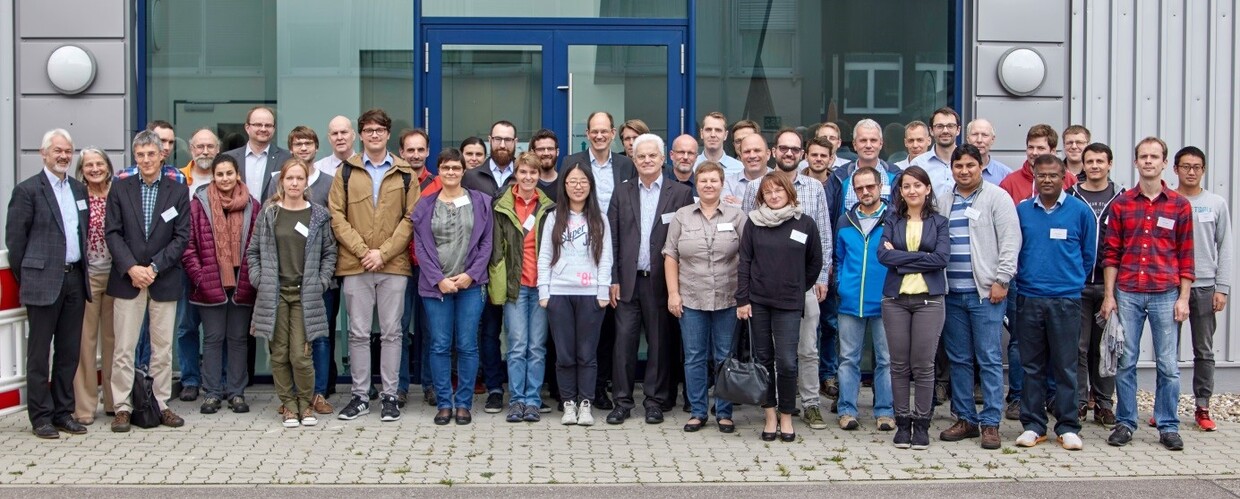
Röntgenstrahlung beleuchtet die verschiedenen Seiten der Energiewende: Internationaler Eröffnungsworkshop anlässlich der Inbetriebnahme der neuen Strahlführung „CAT-ACT“ an der Synchrotronquelle des KIT am 20. und 21. September 2017
„Röntgenabsorptionspektroskopie und Katalyseforschung – eine ideale Symbiose“ und Röntgenspektroskopie und der Nukleare Brennstoffkreislauf“ – so lauteten ins Deutsche übertragen die Titel der beiden eingeladenen Plenarvorträge im Rahmen eines zweitägigen internationalen Workshops anlässlich der Inbetriebnahme der CAT-ACT-Strahlführung an der Synchrotronstrahlungsquelle auf dem Campus Nord des KIT. Dass die an dieser neuen „Beamline“ mit zwei hintereinander geschalteten Messlaboratorien zur Katalyse- (CAT) bzw. Radionuklidforschung (ACT) zur Anwendung kommende Röntgenabsorptionsspektroskopie (XAS) ein ideales Werkzeug in zwei essenziellen Forschungsgebieten bei der Bewältigung der deutschen „Energiewende“ darstellt, war die Quintessenz mehrerer Redner der Veranstaltung. Eröffnet wurde der Workshop durch den Leiter des Forschungsbereichs 5 „Mathematik und Physik“ am KIT, Prof. Dr. Johannes Blümer. Anschließend diskutierten etwa 60 nationale und internationale Forscherinnen und Forscher über die neuen Möglichkeiten der beiden Messplätze am Karlsruher Beschleuniger KARA, dessen Doppelfunktion als Synchrotronstrahlungsquelle und Testplattform für Beschleunigerkomponenten von der Leiterin des Instituts für Beschleunigerphysik und Technologie (IBPT), Prof. Dr. Anke-Susanne Müller, eingangs vorgestellt wurde. Auf eine kurze Präsentation der neuen Beamline und ihrer Messmöglichkeiten (Prof. Dr. Jan-Dierk Grunwaldt, ITCP/IKFT, Dr. Jörg Rothe, INE) und erster im Rahmen der Inbetriebnahme durchgeführten Untersuchungen (Dr. Anna Zimina, IKFT, Dr. Henning Lichtenberg, ITCP, Dr. Tonya Vitova, INE) folgten 12 nationale und internationale Fachbeiträge abwechselnd aus beiden Themenfeldern, die das Potential der XAS-Technik im Rahmen von in situ / operando Studien katalytischer Prozesse oder der notwendigen Speziation von Radionukliden (Actiniden und langlebige Spalt- und Aktivierungsprodukte) zur Vorhersage ihres langfristigen Verhaltens in einem Endlager für nukleare Abfälle beleuchteten. Sowohl Prof. Ronald Frahm (Universität Wuppertal) als auch Prof. Peter Pfeifer (KIT) schwärmten von den neuen Möglichkeiten, die CAT-ACT bietet, um einem Katalysator „bei der Arbeit“ zuzuschauen und so z.B. ganz neue Einblicke in grundlegende Prozesse zur chemischen Energiespeicherung zu erhalten. Darüber hinaus beschrieben Prof. Melissa A. Denecke, wissenschaftliche Direktorin des Dalton Instituts der Universität Manchester und Prof. Tobias Reich, Leiter des Instituts für Kernchemie an der Universität Mainz, einzigartige Möglichkeiten, um durch XAS-Messungen die chemisch-physikalische Struktur von Actinid-Verbindungen aufzuklären - ein wesentlicher Baustein für den Langzeitsicherheitsnachweis eines zukünftigen nuklearen Endlagers. Bereichert wurde der Workshop nicht nur durch Beiträge internationaler Redner sowie aktiver und zukünftiger Anwender, sondern auch durch industrielle Nutzer der Messlinie – etwa des dänischen Katalysator- und Engineering-Unternehmens Haldor Tospsoe A/S – und nicht zuletzt durch eine Präsentation des Hauptlieferanten der Beamline-Komponenten, der britisch-deutschen Firma FMB Oxford.
New Publication and Reports
3 new historical overview reports authored by Bernhard Kienzler
|
F&E-Arbeiten zur Korrosion von Endlager-Behälterwerkstoffen im INE KIT Scientific Reports 7729 Author : B. Kienzler |
Flüssige hochradioaktiver Abfälle: Verglasung und andere Optionen. KIT Scientific Reports 7730 Author : B. Kienzler |
Schwach- und mittelradioaktive Abfälle: Organische Matrices. KIT Scientific Reports 7731 Author : B. Kienzler |
Abstracts
F&E-Arbeiten zur Korrosion von Endlager-Behälterwerkstoffen im INE
The present work provides a historical overview of the research and development activities carried out
at the (Nuclear) Research Center Karlsruhe (today KIT) since the beginning of the 1980s on the corrosion
of materials which might be suitable for construction of containers for highly radioactive wastes. The report relates almost exclusively to the work performed by Dr. Emmanuel Smailos, who elaborated the corrosion of various materials at the Institute for Nuclear Waste Disposal (INE). The requirements for the containers and materials, which were subject to changes in time, are presented. The changes were strongly influenced by the changed perception of the use of nuclear energy.
The selection of the materials under investigations, the boundary conditions for the corrosion experiments
and the analytical methods are described. Results of the corrosion of the materials such as finegrained
steel, Hastelloy C4, nodular cast iron, titanium-palladium and copper or copper-nickel alloys in typical salt solutions are summarized. The findings of special investigations, e.g. corrosion under irradiation or the influence of sulfide on the corrosion rates are shown. For construction of disposal canisters, experiments were conducted to determine the contact corrosion, the influence of the hydrogen embrittlement of Ti-Pd and fine-grained steels on the corrosion behavior as well as the corrosion behavior of welding and the influence of different welding processes with the resulting heat-affected zones on the corrosion behavior. The work was contributed to several European research programs and was well recognized in the USA.
Investigations on the corrosion of steels in non-saline solutions and corrosion under interim storage conditions as well as under the expected conditions of the Konrad repository for low-level radioactive wastes are also described. In addition, the experiments on ceramic materials are presented and the results of the corrosion of Al2O3 and ZrO2 ceramics, steatite porcelain as well as of silicon carbides are described.
Flüssige hochradioaktiver Abfälle: Verglasung und andere Optionen.
The present work provides an overview of the use of organic matrices for the fixation of low- and medium- radioactive wastes from various fields of nuclear technology. It is true that the incorporation of these waste into cement was and is a simple, cost-effective and widely used method. However, cement also has some disadvantages, such as the increase in the waste volume, a delayed setting and the associated separation of water and solids. Therefore, organic matrices such as bitumen, polyethylene, and other plastics have also been used for certain waste streams. This summary provides an overview of the results of R&D work and the use of organic matrices, mainly in the 1980s.
The wastes suitable for fixation in organic matrices and the treatment methods are described. The properties of the resulting waste products are summarized, with respect to their physical properties, radiolysis gas formation, combustibility as well as the leaching behavior and the swelling processes in the case of bitumen are described. An overview of the microbial degradation of bitumen is also given. A problem of the organic matrices, in particular the bitumen, is its combustibility. Fires occurred in various bituminizing plants and are evaluated as far as information is available.
Schwach- und mittelradioaktive Abfälle: Organische Matrices.
The present work provides an overview of the use of organic matrices for the fixation of low- and medium- radioactive wastes from various fields of nuclear technology. It is true that the incorporation of these waste into cement was and is a simple, cost-effective and widely used method. However, cement also has some disadvantages, such as the increase in the waste volume, a delayed setting and the associated separation of water and solids. Therefore, organic matrices such as bitumen, polyethylene, and other plastics have also been used for certain waste streams. This summary provides an overview of the results of R&D work and the use of organic matrices, mainly in the 1980s.
The wastes suitable for fixation in organic matrices and the treatment methods are described. The properties of the resulting waste products are summarized, with respect to their physical properties, radiolysis gas formation, combustibility as well as the leaching behavior and the swelling processes in the case of bitumen are described. An overview of the microbial degradation of bitumen is also given. A problem of the organic matrices, in particular the bitumen, is its combustibility. Fires occurred in various bituminizing plants and are evaluated as far as information is available.
New Publication in Nuclear Technology :
Summary of the Euratom Collaborative Project FIRST-Nuclides and Conclusions for the Safety Case
Authors: Bernhard Kienzler, Lara Duro, Karel Lemmens, Volker Metz, Joan De Pablo, Alba Valls, Detlef H. Wegen, Lawrence Johnson & Kastriot Spahiu
Nuclear Technology, Vol. 198, pp. 260-276, 2017.
http://www.tandfonline.com/eprint/YD9Rx3yGcuxjbe2E67s6/full
Abstract
A consortium of 10 partners from seven European countries and the European Commission collaborated in investigating the short-term release of radionuclides from disposed spent nuclear fuel upon canister failure. The Collaborative Project FIRST-Nuclides was implemented in the scope of the 7th Euratom Framework Programme in the period from 2012 to 2014. The objectives and organization of the project are presented, as well as the experiments with highly radioactive materials under investigation. The outcome of the project summarizes the measured instant release fraction (IRF) of safety-relevant isotopes from high burnup spent UO2 nuclear fuels (SNFs). Specifically discussed are the dependencies of the IRF on the sample properties, the gap and grain boundary releases, and the behavior and IRFs of elements such as cesium, iodine, and selenium. The IRFs of nonstandard SNFs were also investigated. The summary is complemented by the presentation of the modeling approaches within the project.
INE scientists reveal the role of 5f orbitals in chemical bonding across the actinide series – a Nature Communications publication
The role of the 5f valence orbitals of early actinides in chemical bonding
T. Vitova, I. Pidchenko, D. Fellhauer, P. S. Bagus, Y. Joly, T. Prüßmann, S. Bahl, E. Gonzalez-Robles, J. Rothe, M. Altmaier, M. A. Denecke, H. Geckeis
Nature Communications 8, 16053 (2017), doi:10.1038/ncomms16053
Link to the article: http://rdcu.be/tYav
Figure. A schematic view of the AnO22+ molecules (An = U, Np or Pu) investigated with An M4,5 edge HR-XANES/RIXS. From U to Pu the electronic population of the An 5f states increases (5f0 > 5f1 > 5f2) but their sensitivity to changing bonding partners decreases. The PuO22+ RIXS map depicts an example of an energy shift correlated with rising localization of the An 5f states (U < Np < Pu) http://rdcu.be/tYav.
One of the long standing debates in actinide chemistry is the level of localization and participation of the actinide 5f valence orbitals in covalent bonds across the actinide series. Researchers from the Institute for Nuclear Waste Disposal (INE), KIT illuminate the role of the 5f valence orbitals of uranium, neptunium and plutonium in chemical bonding using advanced spectroscopy techniques: actinide M4,5 HR-XANES and 3d4f RIXS applied at the beamline for actinide research (INE-Beamline) at the ANKA synchrotron radiation facility, KIT. The experimental results are supported by theoretical calculations performed by scientist from the University of Nord Texas, USA and CNRS, France. Results reveal that the 5f orbitals are active in the chemical bonding for uranium and neptunium, shown by significant variations in the level of their localization evidenced in the spectra. In contrast, the 5f orbitals of plutonium appear localized and surprisingly insensitive to different bonding environments. This report of using relative energy differences between the 5fd/f and 5fp*/5fs* orbitals as a qualitative measure of overlap-driven actinyl bond covalency will spark activity, and extend to numerous applications of RIXS and HR-XANES to gain new insights into the electronic structures of the actinide elements.
“Three-dimensional printing of transparent fused silica glass” – INE contributes to “Nature” publication
Three-dimensional printing of transparent fused silica glass
Autoren: F. Kotz, K. Arnold, W. Bauer, D. Schild, N. Keller, K. Sachsenheimer, T.M. Nargang, C. Richter, D. Helmer, B.E. Rapp
Doi: 10.1038/nature22061
URL: http://www.nature.com/nature/journal/v544/n7650/full/nature22061.html
Glass is one of the most important high-performance materials used for scientific research, in industry and in society, mainly owing to its unmatched optical transparency, outstanding mechanical, chemical and thermal resistance as well as its thermal and electrical insulating
properties. However, glasses and especially high-purity glasses such as fused silica glass are notoriously difficult to shape, requiring high-temperature melting and casting processes for macroscopic objects or hazardous chemicals for microscopic features. These drawbacks have made glasses inaccessible to modern manufacturing technologies such as three-dimensional printing (3D printing). Using a casting nanocomposite, here we create transparent fused silica glass components using stereolithography 3D printers at resolutions of a few tens of micrometres. The process uses a photocurable silica nanocomposite that is 3D printed and converted to high-quality fused silica glass via heat treatment. The printed fused silica glass is non-porous, with the optical transparency of commercial fused silica glass, and has a smooth surface with a roughness of a few nanometres. By doping with metal salts, coloured glasses can be created. This work widens the choice of materials for 3D printing, enabling the creation of arbitrary macro- and microstructures in fused silica glass for many applications in both industry and academia.
50 Jahre Forschungs- und Entwicklungsarbeiten zur Endlagerung im KIT
Autor: B. Kienzler
KIT Scientific Publishing, KIT SR 7723, DOI: 10.5445/KSP/1000059829
ISBN: 978-3-7315-0586-0
URL: https://doi.org/10.5445/KSP/1000059829
Ausgehend von den politischen und gesellschaftlichen Randbedingungen werden die Forschungs- und Entwicklungsarbeiten zur sicheren Endlagerung radioaktiver Abfälle, wie sie im Kernforschungszentrum Karlsruhe im Institut für Nukleare Entsorgung durchgeführt wurden, zusammengestellt. Die Organisationformen und die jeweils wesentlichen Forschungsthemen werden genannt sowie die gegenwärtigen Forschungsthemen und die Einbindung des Instituts in Lehre und Ausbildung und in Beratungsaufgaben.
Long-Term Interactions of Full-Scale Cemented Waste Simulates with Salt Brines
Autoren: B. Kienzler, Ch. Borkel, V. Metz, M. Schlieker.
KIT Scientific Publishing: KIT-SR 7721, DOI: 10.5445/KSP/1000058276,
ISBN: 978-3-7315-0576-1.
URL: http://dx.doi.org/10.5445/KSP/1000058276
Radioaktive Abfälle aus der Pilot-Wiederaufarbeitungsanlage WAK wurden in der Schachtanlage Asse II eingelagert. Ein großer Teil der Abfälle bestand aus zementierten NaNO3-haltigen Lösungen. Zur Untersuchung des Langzeitverhaltens dieser Abfälle wurden Experiment mit simulierten Abfallprodukten im Maßstab 1 zu 1 in relevanten Salzlösungen bis 2013 durchgeführt. Die im vorliegenden Bericht dargestellten Ergebnisse beinhalten die Lösungsentwicklungen und die chemische und mineralogische Charakteristiken der Festphasen einschließlich der Radionuklide, anderer Abfallkomponenten und der Paragenese der Festphasen (Korrosionsprodukte).
Jean-Jacques Pierrat (Ph.D.) - Botschaftsrat für Forschung und Technologie der französischen Botschaft in Berlin - informiert sich über aktuelle Projekte an der Synchrotronquelle ANKA des KIT (24.11.2016)
Zum Abschluss seines eintägigen Besuchs des KIT am 24. November 2016 informierte sich der französische Botschaftsrat für Forschung und Technologie, Herr Jean-Jacques Pierrat, über aktuelle Projekte an der Synchrotronstrahlungsquelle ANKA auf dem Campus Nord. Koordiniert wurde das Besichtigungsprogramm durch Manuella Werp - seit kurzem verantwortlich für French-German Relations in der Dienstleistungseinheit International Affairs (INTL). Herr Pierrat wurde im Ost-Anbau der ANKA-Halle durch Michael Nasse und Robert Ruprecht vom Institut für Beschleunigerphysik und -technologie (IBPT) begrüßt, die ihm zunächst anhand des dort aufgestellten Modells der ANKA-Beschleunigeranlage einen kurzen Überblick über ANKA, das betreibende Institut IBPT und die Einbindung in die Forschungslandschaft des KIT boten. Fortgesetzt wurde die Präsentation im Kontrollraum der 2016 erfolgreich in Betrieb genommenen neuen Strahlführung „CAT-ACT“, die in alternierend von den KIT-Instituten ITCP/IKFT sowie INE genutzten Messlaboren hochpräzise spektroskopische Untersuchen an aktiven Katalysatoren („CATalysis research“) bzw. hochradioaktiven Kernmaterialien („ACTinide research“) mittels intensivem Synchrotronlicht in einem weiten Energiebereich ermöglicht. Herr Nasse erläuterte zunächst die verschiedenen Aufgaben des IBPT, zu denen neben dem Betrieb des ANKA-Speicherrings als Synchrotronstrahlungsquelle auch die Entwicklung neuartiger Beschleunigersysteme wie der im Bau befindlichen Testanlage FLUTE und von Strahldiagnostik-Tools für Teilchenbeschleuniger gehört. Ein Alleinstellungsmerkmal besitzt ANKA mit dem Betrieb von mittlerweile zwei Messplätzen (INE-Beamline und ACT-Labor) zur Untersuchung der chemisch-physikalischen Strukturen hochradioaktiver Probensysteme mittels verschiedener röntgenspektroskopischer Verfahren. Das Forschungsprogramm des hierbei verantwortlichen Instituts für Nukleare Entsorgung (INE) und die Bedeutung der ANKA-Anlage für die Erforschung von Konzepten zur Behandlung und Endlagerung radioaktiver Abfälle wurde von Horst Geckeis, Leiter des INE, vorgestellt. Jörg Rothe erläuterte die Messmöglichkeiten an beiden Beamlines, deren besonderer Standortvorteil in der direkten Anbindung an die radiochemischen Labors des INE auf dem Campus Nord des KIT besteht. Zum Abschluss des Besuchs unterhielt sich Herr Pierrat noch kurz mit Wissenschaftlern des französischen CEA Cadarache (Commissariat à l’énergie atomique et aux énergies alternatives), das als externer Kooperationspartner regelmäßig die Messmöglichkeiten für radioaktive Probensysteme an ANKA nutzt.
2nd DAEF Conference on ‚Key Topics in Deep Geological Disposal – Challenges of a Site Selection Process: Society – Procedures – Safety‘
Vom 26. - 28. September 2016 fand in Köln die von der Deutschen Arbeitsgemeinschaft Endlagerforschung (DAEF) veranstaltete 2. Konferenz „Key Topics in Deep Geological Disposal – Challenges of a Site Selection Process: Society – Procedures – Safety“ statt.
Die DAEF ist ein Zusammenschluss deutscher Einrichtungen (unter dem derzeitigen Vorsitz des KIT), deren Forschungsaktivitäten überwiegend im Bereich der Tiefenlagerung radioaktiver Abfälle liegen. Der Fokus der DAEF liegt auf der sicheren Entsorgung von radioaktivem Abfall und der stetigen Weiterentwicklung der damit verbundenen wissenschaftlichen und technischen Expertise unter Einbezug von sozioökonomischen Themen. Dazu gehören auch wissenschaftliche Fragestellungen im Hinblick auf ein Auswahlverfahren für einen Standort zur Tiefenlagerung.
Im Rahmen der Konferenz wurde anhand von Übersichtsvorträgen der aktuelle Kenntnisstand zu zentralen Aspekten der Endlagerforschung vorgestellt. Dabei wurden, wie auch im Rahmen der 1. DAEF-Konferenz, sozioökonomische und soziotechnische Themen einbezogen. Der Fokus der diesjährigen Konferenz lag auf der Arbeit der „Kommission Lagerung hoch radioaktiver Abfallstoffe“. Im Rahmen einer eigenen Session stellten ehemalige Mitglieder der Endlagerkommission ihre Arbeit vor. Die internationale Sichtweise wurde durch einen Schweizer Experten vorgestellt.
Wissenschaftlerinnen und Wissenschaftler aus verschiedenen Nationen präsentierten ihre eigenen Arbeiten ausführlich im Rahmen von Vorträgen und Posterbeiträgen. Erstmalig wurden die exzellenten Arbeiten der Nachwuchswissenschaftler durch die Vergabe von 3 Posterpreisen gewürdigt.
Franzosini-Award for Dr. David Fellhauer
During the ISSP17 Conference (24-29.07.2016, Geneva, Switzerland), Dr. David Fellhauer of KIT-INE received the international Franzosini Award 2016 from Prof. C. Magalhaes. The Franzosini award is given to Dr. Fellhauer in view of his outstanding scientific work on actinide solubility and thermodynamics in aquatic systems relevant to nuclear waste disposal.
The Franzosini Award is given biannually by the IUPAC Subcommittee on Solubility and Equilibrium Data (SSED) to an excellent young scientists. The IUPAC SSED coordinates projects in the area of compilation and critical evaluation of published experimental data on the chemical solubility of well defined substances and other equilibrium systems.
Poster-Award for Dr. Ezgi Yalcintas
Dr. Yalcintas was rewarded a Poster-Award for her work on „solubility of UO2(am,hyd) in alkaline carbonate solutions“ at the ISSP17 Conference in Geneva, Switzerland, by the local organiser Dr. Montserrat Filella. The work of Dr. Yalcinats on uranium(IV) chemistry and thermodynamics in aqueous solutions is integrated into the BMWi funded EDUKEM project. ISSP is an established bi-annual conference series organised by IUPAD SSED, aiming at discussing and promoting the study of solubility phenomena and related equilibrium processes.
The Royal Society of Chemistry awarded the prestigious Royal Society of Chemistry Becquerel medal to Prof. Dr. M.A. Denecke.
The Royal Society of Chemistry awarded the prestigious Royal Society of Chemistry Becquerel medal to Prof. Dr. M.A. Denecke.
Prof. Denecke was senior scientist at the INE before she was appointed co-director of the Dalton Nuclear Institute at the University of Manchester.
Congratulations from the entire INE-team!
The latest edition of Dalton News is available here.
First Annual Workshop of CEBAMA Project
The 1st Annual Workshop of the CEBAMA project was held on 11th–13th May 2016, in Barcelona, Spain, hosted by Amphos21. The workshop was well attended by 60 participants coming mainly from the Project Beneficiaries but also members of the CEBAMA End-User Group. The CP CEBAMA is coordinated by KIT-INE and addresses key issues of relevance for long term safety and key scientific questions related to the use of cement-based materials in nuclear waste disposal applications. The project is implemented by a consortium with 27 Beneficiaries from EURATOM Signatory States, Japan and Switzerland. National Waste Management Organizations contribute to the running project by participation in the End-User Group, by co-funding Beneficiaries, and provide for knowledge and information transfer. The 1st Annual Workshop of the CEBAMA project aimed at providing a forum for discussion and dissemination of scientific and technical project results, preparing for periodic reporting and planning on future activities in CEBAMA.
With CEBAMA being 6 months into the experimental R&D programme at present, the 1st Annual Workshop was organized as a cluster-meeting, integrating several different elements, i.e. reporting by Coordination Team, meetings within ExCom, exchange with EUG and meeting of the General Assembly. Parallel sessions of the three R&D oriented project workpackages (WPs) on the first day were used to discuss technical aspects related to the individual WPs and ensure good cooperation and exchange both within each WP, but also between WP1, WP2 and WP3. The key component of the workshop were the seven hours of scientific/technical oral presentations by the Beneficiaries from all WPs at the Plenary stage, focusing on presenting and disseminating first R&D results to the audience and discussing ongoing work. A separate poster session gave opportunity to present further R&D details and was a very productive forum for additional discussions and exchange among the participants.
A specific Topical Session with invited speakers entitled “Lessons learned from previous and current projects on cementitious barriers” gave good insight into related projects of interest to the CEBAMA consortium. Talks were given M. Vuorio (on behalf of J. Hansen) on “DOPAS PROJECT: Experiences and lessons learned 2012-2016”, N. Michau “Results, lessons learned and residual uncertainties from the ECOCLAY II project”, and U. Mäder and V. Cloet “CI Experiment: Cement-Clay-Interaction. 5-year evolution of cement-clay interfaces”.
About 30 S&T contributions prepared by the Beneficiaries based upon the presentations given at the Project Workshop are under review by WP leaders and the EUG. The S&T contributions and posters will be published in the 1st Annual Workshop Proceedings, documenting and disseminating R&D performed in Cebama. The Proceedings will be published at KIT Scientific Publishing and are available at the CEBAMA Website (www.cebama.eu) later in 2016. Also available at the Project Website are the submitted Public Deliverables which can be readily downloaded and are a source of additional information on the R&D performed in CEBAMA.
The Issue No.1 of the CEBAMA Newsletter was published and distributed in February 2016 and is available at the Project Website or by using the following link.
It was decided at the Barcelona meeting that the 2nd Annual Workshop of CEBAMA will be held in Finland on 3 days in the week of 15th-19th May 2017, hosted by VTT. The 2nd Annual Project Workshop will again be open to interested external participants and will be announced via email, or at the CEBAMA and IGD-TP Websites.
For further information on the CEBAMA project please contact the Coordinator at marcus.altmaier∂kit.edu
Poster prize for Nese Cevirim at the 4th International Workshop on “Mechanisms and Modelling of Waste/Cement Interactions”
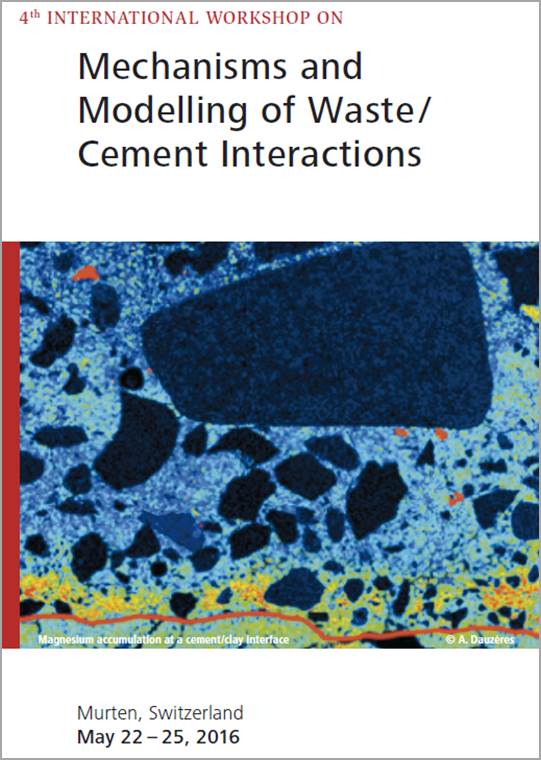 The highly successful workshop was organized by EMPA, PSI and the University of Bern between May 22nd and 25th, 2016, in Murten, Switzerland, and was attended by over 100 international participants. The workshop series “Mechanisms and Modelling of Waste/ Cement Interactions” focuses on the chemical understanding and the thermodynamic modelling of the processes responsible for the stabilization of hazardous and radioactive wastes in cementitious systems.
The highly successful workshop was organized by EMPA, PSI and the University of Bern between May 22nd and 25th, 2016, in Murten, Switzerland, and was attended by over 100 international participants. The workshop series “Mechanisms and Modelling of Waste/ Cement Interactions” focuses on the chemical understanding and the thermodynamic modelling of the processes responsible for the stabilization of hazardous and radioactive wastes in cementitious systems.
Nese Cevirim received the poster prize for her work on “Redox Chemistry and Solubility of Uranium in Alkaline to Hyperalkaline NaCl/KCl Systems”. Based upon the studies, performed within her ongoing PhD which is integrated in the German BMWi funded EDUKEM project (02E11334C), a significantly improved description of uranium chemistry under the specific geochemical conditions expected for cementitious environments has been developed.
INE co-edited NEA-OECD “ClayClub” CMS workshop lecture series Volume 21 (open access)
INE organized together with BGR and the Durham University a workshop entitled “Filling the gaps – from microscopic pore structures to transport properties in shales”. This workshop was initiated by the NEA-OECD “ClayClub”, the Clay Minerals Society, and the Euroclay conference series. The aim of the workshop was to give a current state-of-the-art of different spectroscopy and microscopy methods to better understand microscopic pore structures and transport properties in shales. It addressed new developments in the field in order to address the above mentioned knowledge gaps in clay minerals and clay rich shales. The workshop also provided an excellent opportunity for exchange of knowledge with research communities concerned with the safe long-term management of radioactive waste within argillaceous sediments, and the shale gas and oil exploration. The summary of this workshop including eighteen peer reviewed contributions is now available as open access publication under:
As a summary of five days full of cutting-edge X-ray science, the XAFS16 conference proceedings including 14 KIT contributions have just been published.
Completing the very successful 16th International Conference on X-ray Absorption Fine Structure with more than 550 participants held at KIT last year, the conference proceedings have just been published online. Based on XAFS16 keynotes, contributed talks, poster presentations and complementary workshops, the conference proceedings include 150 contributions grouped into nine scientific fields as well as results of the satellite meeting “Data acquisition, treatment, storage - quality assurance in XAFS spectroscopy” held at DESY in Hamburg. KIT with its institutes ANKA (now IBPT), IPS, INE and ITCP/IKFT as well as DESY helped creating an outstanding collection of state-of-the-art developments and applications in X-ray absorption spectroscopy and related techniques.
Volume 712 of the Journal of Physics: Conference Series has been chosen to publish all contributions to the conference and related workshops and satellite meetings. All manuscripts have been rigorously reviewed and are available online free of charge in perpetuity.
The volume covers all aspects of X-ray absorption spectroscopy, from the latest theoretical developments to instrumentation and applications. X-ray absorption techniques are applied for the benefit of an extraordinarily broad range of applications: in-situ characterization of catalytic reaction processes, environmental contaminant and radionuclide speciation, novel developments in medical applications and forensic analysis of cultural and historical objects – to name just a few. Results from the German synchrotron radiation facilities including KIT-ANKA are well represented in all topics.
J-D Grunwaldt, M Hagelstein and J Rothe, "16th International Conference on X-ray Absorption Fine Structure (XAFS16)," IOP Publishing, Journal of Physics: Conference Series, 712 (2016) 011001
Dr. Gopala Krishna Darbha has been recently awarded the prestigious “Ramanujan Fellowship” by the Department of Science and Technology, India.
Dr. Gopala Krishna Darbha was as a senior researcher at KIT-INE for five years (2011-2016) in the Geochemistry division where his main focus was to understand the transport of colloid(nanoparticles)-aided-contaminant transport in the subsurface environment. He has been recently awarded the prestigious “Ramanujan Fellowship” by the Department of Science and Technology, India. The fellowship is scientist-specific and very selective. It is aimed to attract highly skilled and brilliant researchers (Indian Nationals) working overseas in various cutting edge disciplines of Science & Technology, by providing them an attractive avenue to pursue their R&D interests in Indian institutions. For the 2016 year, only Dr. Darbha has been awarded the Ramanujan Fellowship in the Earth & Atmospheric Sciences division.
KIT-INE congratulates him for his achievement wishing him all the best for his future endeavors and is looking forward for a successful collaboration between Germany and India to foster the sharing of knowledge in the field of science and technology.
Materials Science and Engineering Department students from the French Ecole Nationale Supérieure des Mines de Nancy visit ANKA (11 March 2016)
Materials Science and Engineering Department students from the French Ecole Nationale Supérieure des Mines de Nancy visit ANKA (11 March 2016)
A group of 25 undergraduate students enrolled at the Materials Science and Engineering Department of the French elite university Ecole Nationale Supérieure des Mines de Nancy in Karlsruhe’s sister city took the opportunity to visit the KIT synchrotron radiation facility ANKA on the way back home from a one week excursion to several German research institutions. The group was accompanied by three supervisors, headed by Dr. Marc Ponçot, assistant professor at the Ecole des Mines and the Université de Lorraine in Nancy. A half day scientific program including lectures and an extended tour of the ANKA accelerator facilities, beamlines and laboratories was organized by scientists from the KIT Institute for Nuclear Waste Disposal (INE) and Institute for Accelerator Physics and Technology (IBPT), which is operating the ANKA storage ring and developing accelerator technologies for a future generation of synchrotron light sources. After a short introduction into KIT and its research portfolio, the little symposium on synchrotron technology and applications was opened by Patrick Schönfeldt, PhD student at IBPT, on “Accelerator Research at KIT-IBPT and ANKA”, followed by two INE contributions - an “Introduction to X-ray Absorption Spectroscopy” by Jörg Rothe and a “XAS investigation of the retention of radionuclides by secondary phases” by Nicolas Finck. The latter lecture was highlighting the important role of synchrotron based XAS techniques to understand the behavior of radionuclides in a future nuclear waste repository. The last presentation was given by Martin Börner from the Institute of Microstructure Technology (IMT), an “Introduction to X-ray lithography with synchrotron radiation”. In this talk it was emphasized that the need to have all steps of the LIGA microfabrication technology - where IMT and its spin off companies are currently market leaders - on site at Campus North was the original motivation to establish the ANKA light source in Karlsruhe. Following this overview on different research fields at KIT which are strongly depending on the bright X-rays delivered by ANKA, an extended tour of the facility gave the opportunity for discussions with experts at beamlines and associated laboratories. The visit of the French guests ended with a joint lunch in the Campus North canteen.
Special thanks to Bärbel Krause (IBPT) and Tonya Vitova (INE) who supported the ANKA tour.
(J. Rothe, 06 May 2016)
KIT-INE researchers visit the city of scientific technologies Daejeon (Korea)
KIT- INE researcher visited KAIST (Korea Advanced Institute of Science and Technology) within the 1st Annual BioFeRad project (“Molecular-scale investigation of interaction mechanisms between uranium and iron-bearing minerals under diverse geochemical conditions of groundwater”) workshop on 26th January 2016 funded by the German Federal Ministry of Education and Research (BMBF) within the framework of the strategy of the German Federal Government for the internationalization of science and technology with Korea. The BioFeRad project is led by Prof. Woojin Lee (KAIST) and Prof. Thorsten Schäfer (KIT-INE). Specific topics discussed during the 1st Annual meeting focused on iron mineral surface induced redox reactions of organic and inorganic species and their kinetics, the spectroscopic characterization of uranium ternary complexes in solution and at the mineral surface and the system description by quantum chemistry, density functional theory (DFT) and molecular dynamic (MD) simulations.
The second day the INE delegation was invited to KAERI (Korean Atomic Energy Research Institute) discussing ongoing and future collaborative activities with the group of Dr. Min-Hoon Baik especially in the field of radio- geochemistry and reactive transport modelling. The program included a visit of the hot lab facility and the extended Korean Underground Research Tunnel (KURT).
INE contribution on the first structural characterization of Pa(IV) in aqueous solution makes cover of Dalton Transactions January 2016 issue 2 and was designated as December 2015 “Hot Article”
First structural characterization of Pa(IV) in aqueous solution and quantum chemical investigations of the tetravalent actinides up to Bk(IV): the evidence of a curium break
Nidhu lal Banik,*a Valérie Vallet,b Florent Réal,b Réda Mohamed Belmecheri,c Bernd Schimmelpfennig,a Jörg Rothe,a Rémi Marsac,a Patric Lindqvist-Reis,a Clemens Walther,d Melissa A. Deneckee and Christian M. Marquardta
aInstitut für Nukleare Entsorgung, Karlsruhe Institute of Technology, P.O. Box 3640, 76021 Karlsruhe, Germany, *corresponding author
bLaboratoire PhLAM, UMR-CNRS 8523, Université Lille 1 (Sciences et Technologies), F-59655 Villeneuve d’Ascq, France
cLaboratoire de Thermodynamique et Modélisation Moléculaire, Faculté de Chimie, USTHB BP 32 El-Alia, 16111 Bab-Ezzouar, Algeria
dInstitut für Radioökologie und Strahlenschutz, Leibniz Universität Hannover, Hannover, Germany
eDalton Nuclear Institute, The University of Manchester, Manchester, UK
More than a century after its discovery the structure of the Pa4+ ion in acidic aqueous solution has been investigated for the first time experimentally and by quantum chemistry. The combined results of EXAFS data and quantum chemically optimized structures suggest that the Pa4+ aqua ion has an average of nine water molecules in its first hydration sphere at a mean Pa–O distance of 2.43 Å. The data available for the early tetravalent actinide (An) elements from Th4+ to Bk4+ show that the An–O bonds have a pronounced electrostatic character, with bond distances following the same monotonic decreasing trend as the An4+ ionic radii, with a decrease of the hydration number from nine to eight for the heaviest ions Cm4+ and Bk4+. Being the first open-shell tetravalent actinide, Pa4+ features a coordination chemistry very similar to its successors. The electronic configuration of all open-shell systems corresponds to occupation of the valence 5f orbitals, without contribution from the 6d orbitals. Our results thus demonstrate that Pa(IV) resembles its early actinide neighbors.
New Perspectives for Catalyst and Radionuclide Research at KIT: the CatAct Beamline at the ANKA Synchrotron Radiation Facility is successfully commissioned
Just prior to the winter shutdown a significant milestone was reached in the commissioning of the new beamline for catalysis- and radionuclide research CatAct at the Karlsruhe synchrotron radiation source ANKA: the step-by-step alignment of the optical components, starting from the radiation source itself - a superconducting wiggler in the storage-ring – all the way to the high-precision mirrors which focus and guide the highly intensive X-rays to the two new experimental stations. The experimental stations themselves are located in two new laboratories: for “Catalysis research”, jointly operated by the KIT Institute for Technical Chemistry & Polymer Chemistry (ITCP) and the Institute for Catalysis Research and Technology (IKFT), and for “Actinde science”, operated by the Institute for Nuclear Waste Disposal. The two experimental facilities are operated alternately. In the first week of December 2015 the first X-ray absorption spectra were acquired from materials related to both research areas.
One of the main research areas of ITCP/IKFT is the development of application-oriented catalysts, for example, as energy-storage materials for wind- and solar- generated power, or for purification of exhaust-gases, where due to increasingly stringent limits on exhaust-gas emissions for both diesel- and petrol-powered vehicles exhaust-gas catalysts are playing an increasingly important role (at present this consumes more than 50% of the available precious metal production, in particular Pt, Rh, and Pd.) The application of synchrotron radiation techniques makes it possible to investigate catalytic processes under real reaction conditions, which in turn allows the direct application of the results gained to current industrial and academic problems, for example in the design, fabrication and modelling of catalysts. X-ray spectroscopic measurements such as those carried out at the CatAct facility provide a unique insight into the electronic and atomic structure of the precious-metal constituents of these catalysts, making a key contribution to the optimization of their performance and consequent reduction in the usage of these expensive materials. The pilot experiments carried out on such platinum catalysts in December at CatAct are a foretaste of the research possibilities now available at the beamline: from early 2016 the new facility at ANKA will offer a worldwide unique experimental station and infrastructure targeted towards application-oriented investigation of catalyst systems, both for university and program-oriented research (SCI, STN, EE, and MML).
Alongside current advancements in the production and processing of environmentally sustainable catalyst and energy storage materials, the safe, long-term storage of waste materials from nuclear power-generation represents a massive scientific, technical and societal problem. A scientifically sound and socially acceptable waste-disposal concept demands detailed understanding of the mid-term and long-term behaviour of highly active, heat-producing nuclear waste materials (in particular reactor fuel-rods and vitrified reprocessing residues) in intermediate and in future long-term geological repositories. Ensuring that these materials remain permanently isolated from the biosphere requires an understanding of their complex materials science, for example the relationship between chemical state and leaching-properties of uranium and other radionuclides in waste-glasses. Also in this field X-ray absorption spectroscopy delivers directly applicable results, as was illustrated by pilot-experiments on simulated, uranium-doped borosilicate nuclear waste glasses. With a license to investigate radio-isotopes up to 106 times the exemption limit, the new ACT-Station at ANKA, together with the existing INE-Beamline and the direct proximity of the radionuclide laboratories of both INE and the European Commission’s Institute for Transuranium Elements (JRC-ITU), is recognized as presenting unique possibilities for safety research relevant for nuclear waste disposal at the European level. These facilities are available to both the national and international user community within the HGF NUSAFE program and via strategic research cooperation.
CP BELBaR meeting & international training course organized by INE
After a two day work package meeting of the EU 7th framework project CP BELBaR (Bentonite Erosion: effects on the Long term performance of the engineered Barrier and Radionuclide Transport) 20 PhD students or early-carrier Post-Docs from the United Kingdom (6), Finland (3), Czech Republic (3), Sweden (2), Germany (2), Spain (1), Belgium (1), China (1) and South Korea (1) working in the broad field of clay mineralogy, colloid chemistry and/or nuclear waste disposal research attended the CP BELBaR training course held at INE from 14th-16th October 2015.
Introductory lectures were given by well-known experts in the field including e.g. Stepan Kalmykov (Lomonosov Moscow State University, Russia), Ivars Neretnieks (KTH, Stockholm, Sweden) and Tiziana Missana (CIEMAT, Madrid, Spain) followed by technical presentations and hands-on training on state-of-the-art analytical techniques available at INE suitable to characterize clays, clay colloids and the interaction of clay colloids with radionuclides. The practical units partly held in the controlled area included techniques such as Atomic Force Microscopy (AFM), Laser Induced Breakdown Detection (LIBD), Photon Correlation Spectroscopy (PCS), Streaming and zeta potential measurements, Flow Field Flow Fractionation (FlFFF), Environmental Scanning Electron Microscopy (ESEM) and Time Resolved Laser Fluorescence Spectroscopy (TRLFS). The training course ended with a visit of the ANKA Synchrotron radiation facility at KIT with a special focus on the INE beamline.
Besuch der Parlamentarischen Staatssekretärin Frau Schwarzelühr-Sutter im Institut für Nukleare Entsorgung
Am 08. Oktober 2015 besuchten die Parlamentarische Staatssekretärin beim BMUB Rita Schwarzelühr-Sutter und die Regierungsdirektorin im Referat RS III 2 (Grundsatzangelegenheiten der nuklearen Entsorgung, Standortauswahl Endlagerung) Mechthild Caspers im Rahmen eines Besuchs am KIT das Institut für Nukleare Entsorgung um sich einen Überblick der Forschungsarbeiten rund um das Thema Endlagerung zu verschaffen. Im Kontrollbereich des INE informierten sich die Staatssekretärin und die Regierungsdirektorin umfassend über die experimentellen Arbeiten.
High energy resolution XES/RIXS/XAS methods are now available for highly radioactive materials
The Helmholtz Young Investigators Group (HYIG) “Advanced synchrotron based systematic investigations of actinide (An) and lanthanide (Ln) systems to understand and predict their reactivity” led by Tonya Vitova designed, installed and commissioned a multi-analyzer Johann type X-ray emission spectrometer (MAC-spectrometer) at the INE-Beamline for actinide research at the ANKA synchrotron radiation facility, Karlsruhe, Germany (cf. “Instrumentation” in http://www.ine.kit.edu/945.php). The set-up was recently optimized for actinide (An) M4,5 edge high energy resolution X-ray absorption near edge structure (HR-XANES) and X-ray emission spectroscopy (XES)/resonant inelastic X-ray scattering (RIXS) (cf. Figure) experiments in collaboration with the Synchrotron radiation group and the workshop of INE. This instrument, combined with access to the controlled area laboratory at INE in close proximity, is worldwide unique, enabling An M4,5 edge HR-XANES and XES/RIXS investigations of solid and liquid phase radioactive materials, including those under extreme conditions. For the first time ever U, Np and Pu M4,5 edge HR-XANES and RIXS studies of genuine nuclear waste glass, spent nuclear fuel and aqueous solutions containing various Pu oxidations states were recently performed (cf. “Highlights” in http://www.ine.kit.edu/945.php).
INE publication makes cover image of Environmental Science & Technology Letters
Complete Restriction of 36Cl– Diffusion by Celestite Precipitation in Densely Compacted Illite
Aurélie Chagneau †‡§, Christophe Tournassat *§∥, Carl I. Steefel ∥, Ian C. Bourg ∥#, Stéphane Gaboreau §, Imène Esteve ⊥, Tomas Kupcik †, Francis Claret §, and Thorsten Schäfer †‡
† Institute for Nuclear Waste Disposal (INE), Karlsruhe Institute of Technology (KIT), 76021 Karlsruhe, Germany
‡ Department of Earth Sciences, Freie Universität Berlin, 12249 Berlin, Germany
§ Water, Environment and Ecotechnology Division, French Geological Survey (BRGM), Orléans, France
∥ Earth Sciences Division, Lawrence Berkeley National Laboratory, Berkeley, California 94720, United States
# Department of Civil and Environmental Engineering (CEE) and Princeton Environmental Institute (PEI), Princeton University, Princeton, New Jersey 08544, United States
⊥ Institut de Minéralogie et de Physique des Milieux Condensés, UMR 7590 CNRS-UPMC-IRD, University of Jussieu, 75252 Paris, France
Environ. Sci. Technol. Lett., 2015, 2 (5), pp 139–143
DOI: 10.1021/acs.estlett.5b00080
Publication Date (Web): April 21, 2015
Copyright © 2015 American Chemical Society
*BRGM, D3E/SVP, 3 avenue Claude Guillemin, 45060 Orléans cedex 2, France. E-mail: c tournassat ∂does-not-exist.brgm fr. Phone: +33 2 38 64 47 44. Fax: +33 2 38 64 30 62.
Successful analysis of radioactive waste glass from VEK operation with synchrotron based methods at the ANKA INE-Beamline
XAFS and XRF techniques available at the ANKA INE-Beamline for radionuclide science have been successfully applied for the investigation of a borosilicate type HAWC glass obtained during the industrial vitrification process at the former Karlsruhe reprocessing plant. The emphasis of this initial study was to obtain the speciation - i.e., the physical and chemical state - of various actinides and fission products immobilized in the glass matrix - a prerequisite to understand and predict their possible release and remobilization following corrosive waste glass degradation in a deep geological repository. This investigation marks the first time ever that such a material has been transferred to and analyzed at a synchrotron X-ray beamline experimental station – possible due to the close proximity of INE radiochemical labs operating a shielded box line and the ANKA synchrotron facility on KIT Campus North. The study has been recently published in Journal of Nuclear Materials - http://dx.doi.org/10.1016/j.jnucmat.2015.02.021.
HGF-Koordinationstreffen Jülich
Am 04. und 05. März 2015 fand das erste Helmholtz-Koordinierungstreffen nach der PoF-III-Begutachtung im vergangenen Jahr statt. Im Rahmen des Programm-Topics ‚Nuclear Waste Management‘ trafen sich Vertreter des Forschungszentrums Jülich (IEK-6: Institut für Energie- und Klimaforschung - Nukleare Entsorgung und Reaktorsicherheit), des Helmholtz-Zentrums Dresden-Rossendorf (IRE: Institut für Ressourcenökologie) und des Karlsruher Instituts (INE) im Forschungszentrum Jülich um den Status Quo sowie das weitere strategische Vorgehen innerhalb des Programm-Topics zu diskutieren.
Schwelbrand bei Dacharbeiten am INE mit nachfolgendem Eindringen von Wasser durch Starkregen
Wie aus einer Pressemitteilung des Ministeriums für Umwelt, Klima und Energiewirtschaft in Stuttgart zu entnehmen, kam es am vergangenen Samstag, 10. 05. 2014 bei Dacharbeiten im Institut für Nukleare Entsorgung (INE) am KIT-Campus Nord zu einem Schwelbrand an der Abdichtung einer Dehnungsfuge zwischen zwei Gebäudeteilen. Der dabei entstehende Rauch wurde über die Zuluftversorgung in den Kontrollbereich des Instituts angesaugt. Der Schwelbrand wurde rasch gelöscht. Bei einem in der Nacht zum Sonntag auftretenden Starkregen drang Regenwasser durch die nur provisorisch verschlossene Dehnungsfuge ein. Anders als verschiedentlich in der Presse berichtet, gelangte das Wasser nicht in radiochemische Labors sondern in einen Gebäudeteil außerhalb des INE-Kontrollbereichs. Dort führte das Wasser zu einem Kurzschluss in der Stromversorgung, an der sowohl die Abluftanlage sowie die Abluftüberwachung des Kontrollbereichs angeschlossen sind. Feuerwehr und technisches Personal des KIT behoben innerhalb kurzer Zeit den Schaden. Während des gesamten Zeitraums hielten sich keine Personen im Kontrollbereich auf, der überdies nachts und am Wochenende geschlossen ist. Es erfolgte keinerlei Freisetzung von Radioaktivität.
Die Abluftanlage des INE Kontrollbereichs dient dazu, einen Unterdruck in den Labors zu erzeugen. Damit wird sichergestellt, dass eine mögliche Radionuklidfreisetzung aus Versuchseinrichtungen in den dafür speziell eingerichteten radiochemischen Labors direkt in die Abluftfilter gelenkt und dort zurückgehalten wird. Sie dient daher primär dem Arbeitsschutz. Eine Gefährdung von Umwelt und Personen außerhalb der Labors kann daher bei einem Ausfall der Anlage ausgeschlossen werden. Der INE-Kontrollbereich unterliegt der Überwachung von Behörde und TÜV.
Die radiochemischen Labors des INE sind mit einzigartigen Experimentiereinrichtungen ausgestattet, die es erlauben, das Verhalten von radioaktiven Reststoffen und endlagerrelevanten Radionukliden in Endlagersystemen zu untersuchen. Wissenschaftler des INE erarbeiten grundlegende Forschungsbeiträge, die vor dem Hintergrund des in Deutschland anlaufenden Standortauswahlverfahrens dringend benötigt werden. Der Endlagerforschung im KIT-INE wurde wiederholt durch hochrangige internationale Expertengremien eine außerordentlich hohe Qualität attestiert.
Kickoff Treffen der Forschungsplattform ENTRIA
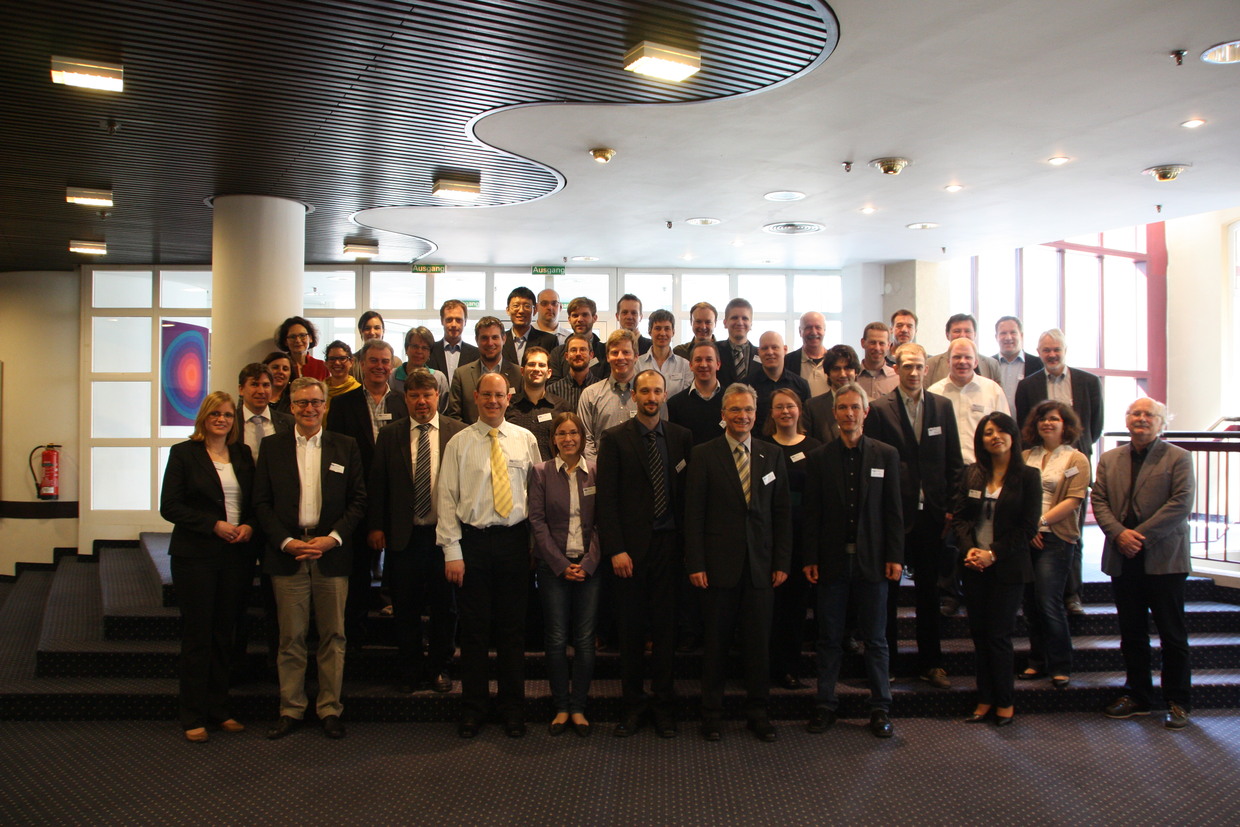
Vom 24. bis zum 26. April fand in Goslar das Kick-off Treffen der Forschungsplattform ENTRIA statt, die von der Niedersächsisch Technischen Hochschule (NTH) koordiniert wird. Teilnehmer waren Vertreter der 13 Partnerorganisationen, darunter auch der KIT Institute INE und ITAS, die in einem Zeitraum von fünf Jahren Optionen für die Entsorgung radioaktiver Reststoffe vergleichen und bewerten sollen. Dabei handelt es sich um die tiefengeologische Endlagerung mit und ohne Rückholoption sowie die oberflächennahe Langzeitzwischenlagerung. Neuartig an diesem Projekt, das vom BMBF über den Projektträger Karlsruhe (PtKa) finanziert wird, ist die interdisziplinäre und ganzheitliche Herangehensweise an die Thematik: Naturwissenschaftler, Techniker, Ingenieure diskutieren mit Sozialwissenschaftlern, Philosophen und Juristen über das Problem der nuklearen Entsorgung. Bereits beim ersten Treffen wurden aus den verschiedenen Blickwinkeln interessante Aspekte und neue Sichtweisen eröffnet. Alle Beteiligten empfanden das Treffen übereinstimmend als außerordentlich spannend und inspirierend. Positiv auch die Tatsache, dass viele junge Wissenschaftler/innen an den Projekten mitarbeiten.
30 Years INE

Das Institut für Nukleare Entsorgung feierte
mit einem großen Familienfest
sein 30-jähriges Bestehen
Das INE – anfangs hieß es noch Institut für Nukleare Entsorgungstechnik – wurde im Jahr 1980 im damaligen Kernforschungszentrum Karlsruhe gegründet. Zu dieser Zeit war in Deutschland die Wiederaufarbeitung von abgebranntem Brennstoff aus Kernreaktoren als einziger Entsorgungsweg vorgeschrieben. Bei der Wiederaufarbeitung werden Plutonium und Uran von den bei der Kernspaltung entstandenen Spaltprodukten abgetrennt und wieder zur Stromerzeugung eingesetzt. Die verbleibenden radioaktiven Abfälle müssen dann so behandelt werden, dass man sie sicher endlagern kann.
Mit dieser Thematik befasste sich das damals technologisch ausgerichtete INE in den achtziger Jahren. Es wurden sowohl Methoden untersucht, mit denen die Menge an radioaktiven Abfällen deutlich verringert werden konnte, als auch Verfahren entwickelt, mit denen stabile, für die Endlagerung geeignete Produkte hergestellt und getestet werden konnten.
Nach dem Verzicht auf die Wiederaufarbeitung in Deutschland im Jahre 1989 musste sich das Institut neu orientieren. Der Schwerpunkt der Forschungsarbeiten wurde nun auf die Langzeitsicherheit der Endlagerung ausgerichtet. Von den technologisch orientierten Themen wurden nur die Arbeiten zur Verglasung hochradioaktiver Abfälle weitergeführt. Die im INE entwickelte Schmelzofen- und Prozesstechnologie ist das Herzstück der Verglasungsanlage Karlsruhe, mit der die hochradioaktiven Abfälle der Wiederaufarbeitungsanlage Karlsruhe erfolgreich in stabile, endlagergerechte Produkte überführt wurden.
Die Endlagerung radioaktiver Abfälle liegt in Deutschland in der Verantwortung des Bundes. Im Rahmen der gesellschaftlichen Vorsorgeforschung kümmern sich die Wissenschaftler aus dem INE um die hochradioaktiven Abfälle, für die es bis heute weltweit kein betriebsfähiges Endlager gibt. Die hochradioaktiven Abfälle machen zwar nur etwa 5 Prozent des Gesamtvolumens aller radioaktiven Abfälle aus, sie enthalten aber 99 Prozent der Radioaktivität. Im Mittelpunkt der Sicherheitsforschungen steht das Verhalten der langlebigen Actiniden (z. B. Plutonium, Americium und Neptunium) unter Endlagerbedingungen, weil diese Radionuklide über sehr lange Zeiträume das Gefährdungspotenzial der Abfälle bestimmen.
Langzeitsicherheitsanalysen für Endlager erfordern belastbare Voraussagen zur etwaigen Freisetzung von Radionukliden über sehr lange Zeiträume (hunderttausende von Jahren). Um solche Voraussagen machen zu können, müssen die Prozesse, die die Mobilität dieser Elemente bestimmen, auf molekularem Niveau verstanden sein. Diese Erkenntnisse lassen sich dann auf natürliche Systeme übertragen. Das INE verfolgt genau diesen Forschungsansatz, indem grundlegende Untersuchungen zur Chemie der Actiniden und anwendungsorientierte Untersuchungen in Untertagelabors miteinander verknüpft werden. Da in Deutschland noch keine Entscheidung über den Standort für ein Endlager für hochradioaktive Abfälle getroffen wurde, sind alle derzeit international diskutierten Wirtsgesteinsformationen für Endlager (Salz, Granit, Ton) in die Untersuchungen einbezogen.Solche Untersuchungen sind sehr aufwendig und anspruchsvoll. Deshalb ist die Entwicklung von experimentellen und analytischen Methoden zur Bestimmung von Actiniden im Spurenkonzentrationsbereich ein weiterer Schwerpunkt der Forschungen.
Zusammen mit den radioaktiven Labors und den extrem leistungsfähigen analytischen Methoden im INE steht dem KIT eine weltweit einmalige experimentelle Infrastruktur zur Verfügung, die in Verbindung mit der großen Expertise der INE-Wissenschaftler im Bereich der Actiniden ein Alleinstellungsmerkmal darstellt. Dies zeigt sich auch an dem großen internationalen Interesse. So ist das INE in dem von der EU geförderten ACTINET-Projekt eine der großen europäischen Institutionen, an denen Gastwissenschaftler und Doktoranden aus ganz Europa Actinidenforschung betreiben können. Da der Leiter des INE, Prof. Dr. Horst Geckeis, gleichzeitig einen Lehrstuhl für Radiochemie am KIT-Campus Süd innehat sind das Institut und seine Mitarbeiter eng in die Ausbildung von Studenten und wissenschaftlichem Nachwuchs auf dem Gebiet der Nuklearchemie eingebunden. Darüber hinaus sind Wissenschaftler des INE an den Universitäten Berlin, Heidelberg, Mainz und Jena in die Lehre und Ausbildung tätig.
Der wissenschaftliche Nachwuchs wird in diesem interessanten Forschungsbereich gebraucht. Denn die Sicherheit der nuklearen Entsorgung muss unabhängig von Ausstiegsszenarien gewährleistet sein. Und eine in letzter Zeit immer häufiger diskutierte Renaissance der Kernenergie wird es nur mit dem Nachweis der sicheren Entsorgung geben.
Klaus Gompper

